Forums
- Forums
- Axis And Allies Forum
- General Discussion
- Aviation News
Aviation News
Post a reply
- Go to Next topic
- Go to Welcome
- Go to Introduce Yourself
- Go to General Discussion
- Go to Screenshots, Images and Videos
- Go to Off topic
- Go to Works in Progress
- Go to Skinning Tips / Tutorials
- Go to Skin Requests
- Go to IJAAF Library
- Go to Luftwaffe Library
- Go to RAF Library
- Go to USAAF / USN Library
- Go to Misc Library
- Go to The Ops Room
- Go to Made in Germany
- Go to Campaigns and Missions
- Go to Works in Progress
- Go to Juri's Air-Raid Shelter
- Go to Campaigns and Missions
- Go to Works in Progress
- Go to Skinpacks
- Go to External Projects Discussion
- Go to Books & Resources
-
 Main AdminHILL AIR FORCE BASE, Utah (AFNS) -- Air Force program officials recently completed two major modifications to the T-38C Talon.
Main AdminHILL AIR FORCE BASE, Utah (AFNS) -- Air Force program officials recently completed two major modifications to the T-38C Talon.
Technicians from the 575th Aircraft Maintenance Squadron at Joint Base San Antonio-Randolph, Texas, modified the last of 446 Air Force and 10 Navy T-38Cs with a video data transfer system (VDTS) and speed break indicator switch (SBIS) in December 2016.
The $50 million VDTS/SBIS program upgraded the aircraft?s video recording capabilities and added a new speed brake position indicator that didn?t previously exist.
?Service life extension programs and modifications are essential for aging aircraft like the T-38 in order to meet current and future mission needs,? said Angela Micheal, the Mature and Proven Aircraft Division chief and T-38 System program manager. ?These modifications will ensure continued suitable, safe and effective operation of the T-38 fleet.?
The VDTS modification was implemented as a result of a video tape recorder diminishing manufacturing source issue, Micheal said. This system is important for pilot training as it records flight and cockpit data used to debrief student pilots after training flights.
The SBIS modification added a visual indicator of the speed brake position on the heads-up display that will provide pilots the ability to check the aircraft?s speed brake position during flight.
In addition to the VDTS/SBIS modifications, other T-38 modification programs currently underway include the Pacer Classic III program, which replaces fatigued structural components on the aircraft; and the Avionics Component Integration Program, which provides avionics upgrades such as ADS-B and component redesigns to address aircraft obsolescence.
The T-38, which entered the Air Force in 1961, is primarily used by the Air Education and Training Command to train combat-ready pilots for fighter and bomber pilot training.
Modifications are critical to sustaining Air Force training operations, Micheal said, and will keep the T-38 viable until at least 2034, when the next-generation Trainer-X is expected to reach full operational capability.
However, the 2034 AETC divestiture date simply marks a milestone for the T-38, as Air Combat Command, Air Force Global Strike Command, the U.S. Navy, National Aeronautics and Space Administration, and Foreign Military Sales partners still plan to use the aircraft beyond that date, Micheal said.
ACC currently uses the T-38A and B models for F-22 Raptor adversary air training. Additionally, B-2 Spirit and U-2 pilots utilize the T-38 for companion training and currently have no plans to fill that role with another aircraft in the future.
South Carolina National Guard Soldiers, and fire department/EMS rescuers with the S.C. Helicopter Aquatic Rescue Team (SC-HART) program, S.C. Urban Search and Rescue Task Force 1 (SC-TF1), perform hoist-training operations during the preliminary phases of ?Patriot South Exercise 2017? (Patriot South 17), a joint training-exercise focused on natural disaster-response and preparedness, Gulfport and Port Bienville Industrial Complex (PBIC), Mississippi, Jan. 29, 2017. Patriot South 17 is taking place at multiple locations across Mississippi, from January 23 through February 7, 2017, and it offers the National Guard and its local and federal partners a realistic-training opportunity to test response capabilities, procedures, and readiness through a simulated earthquake and Tsunami scenario ?hitting the coastal areas of the state.? Specifically, in preparation for future operations, South Carolina?s Headquarters and Headquarters and (-) Company A 2-151st Security and Support Aviation Battalion, 59th Aviation Troop Command, deployed both its current HART-capable platforms, the UH-60L Black Hawk utility helicopter and its LUH-72A Lakota light utility helicopter--the latter being a recent addition to the HART program for South Carolina. (U.S. Army National Guard Photo by Staff Sgt. Roberto Di Giovine/Released)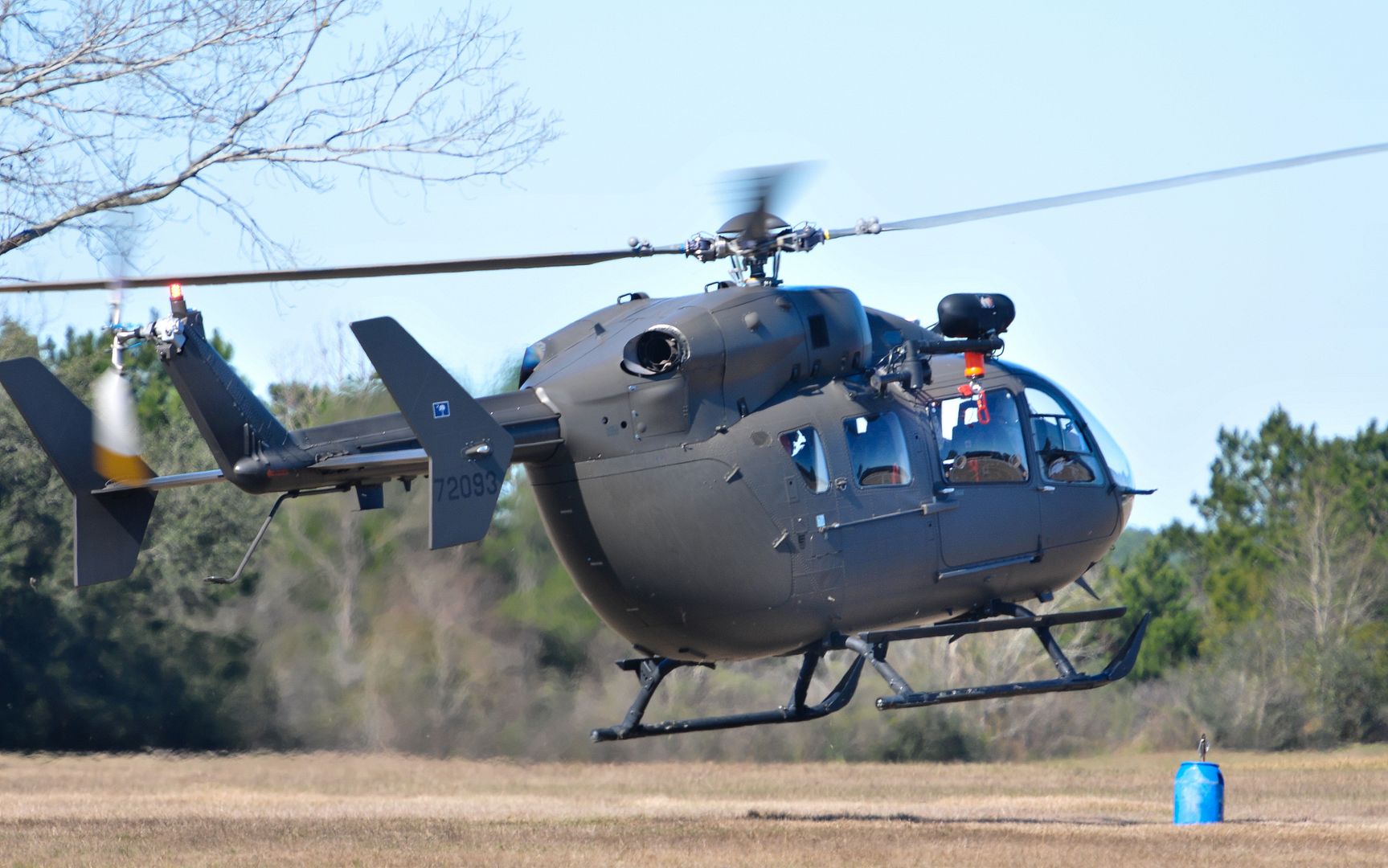
The U.S. Marine Corps F-35B Lightning II demonstrates its refueling capabilities on Marine Corps Air Station Camp Pendleton, Calif., Jan 30, 2017. (U.S. Marine Corps Photo's by Lance Cpl. Ryan Kierkegaard)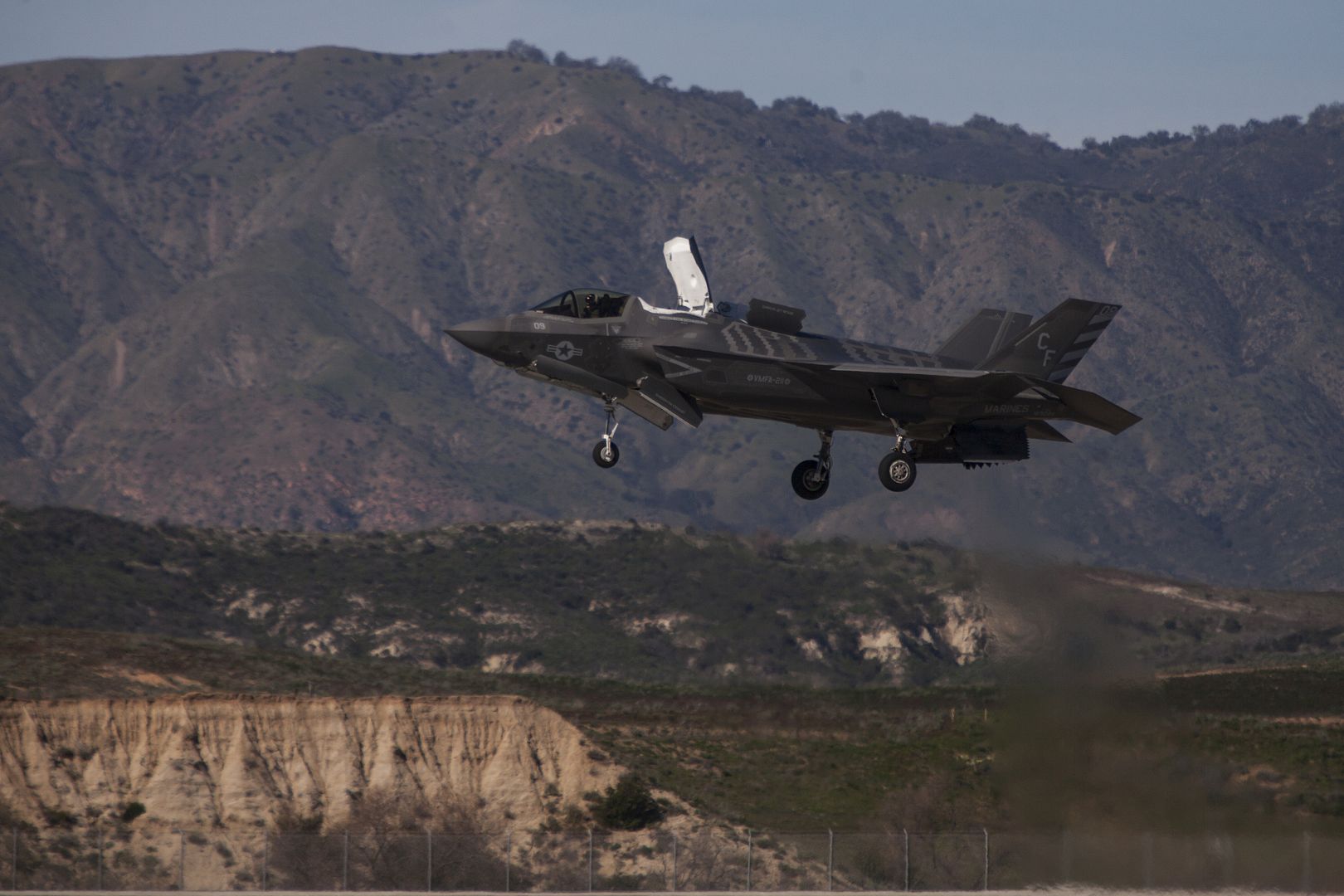
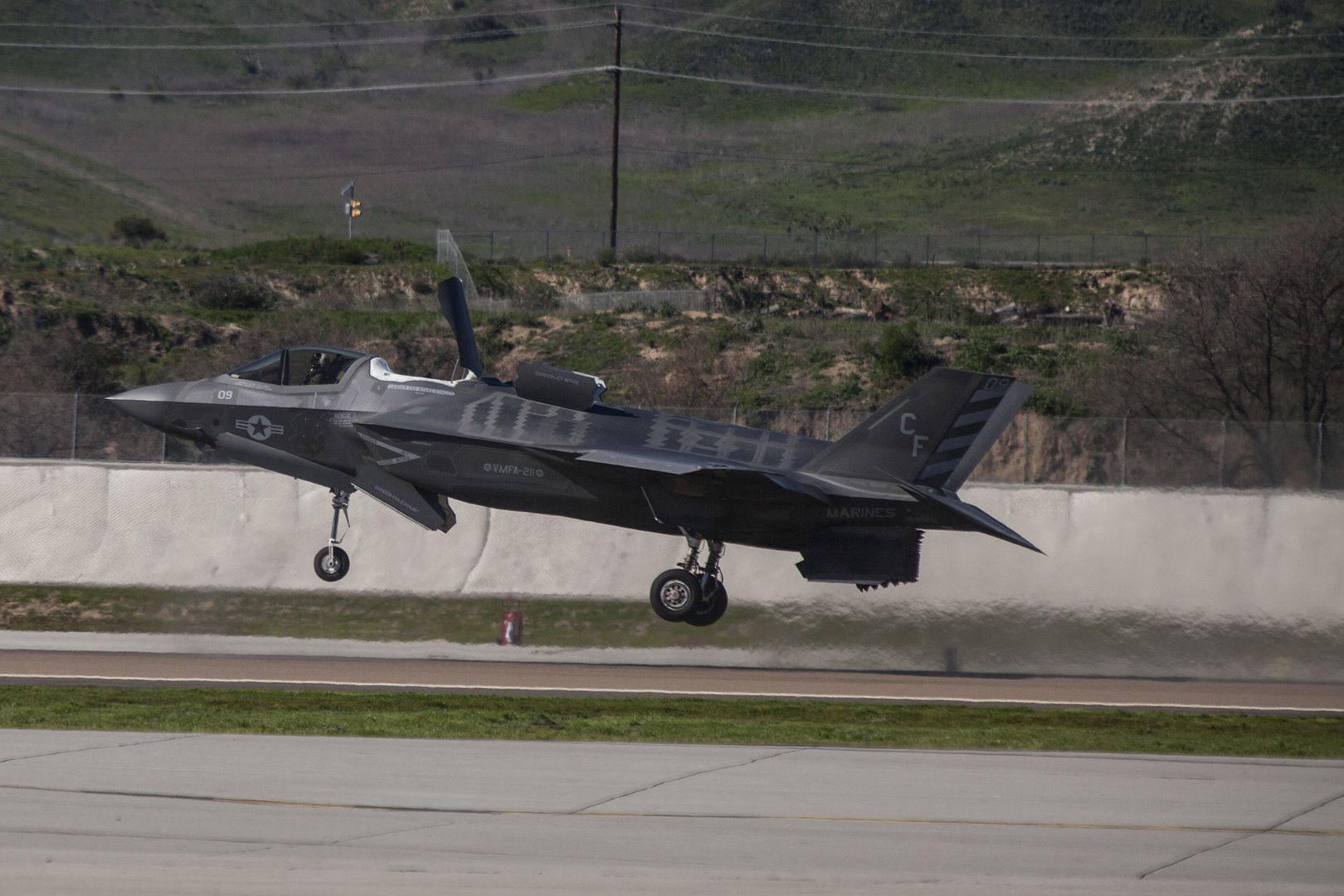
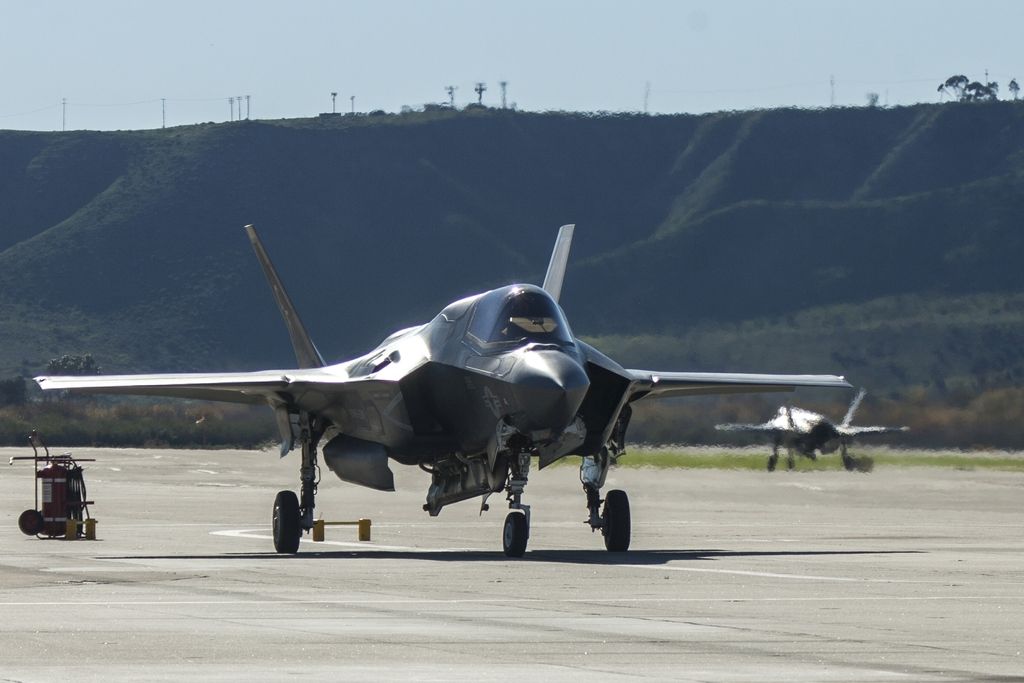
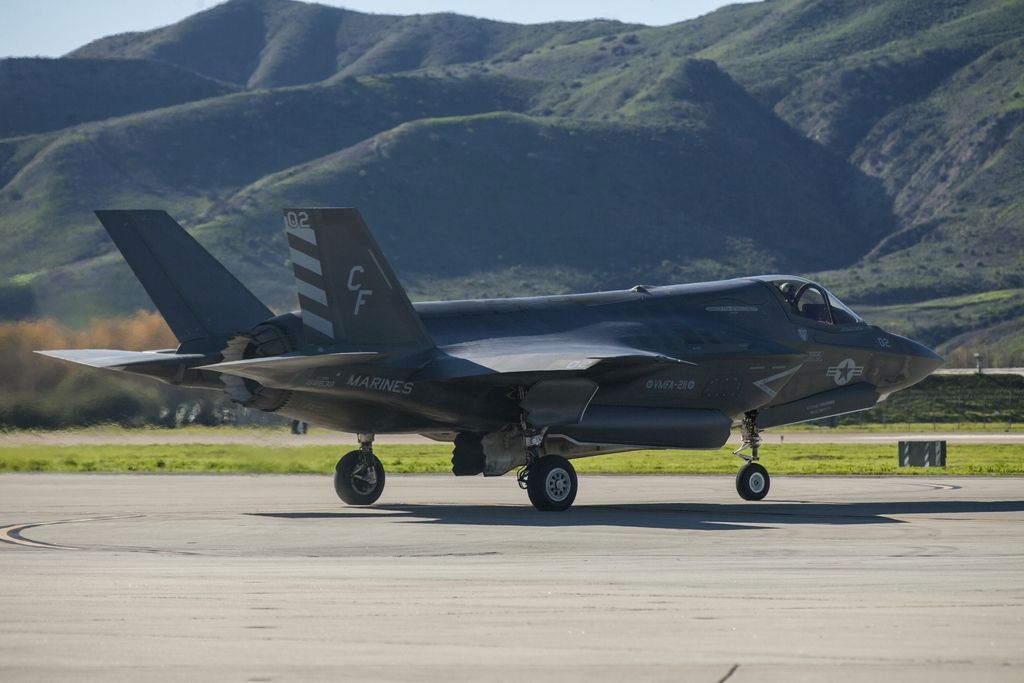
SASEBO, Japan (Jan. 31, 2017) An MV-22B Osprey, assigned to the Flying Tigers of Marine Medium Tiltrotor Squadron (VMM) 262, lands aboard amphibious assault ship USS Bonhomme Richard (LHD 6). Bonhomme Richard is conducting unit-level training to ensure warfighting readiness in preparation for a routine patrol in support of security and stability in the Indo-Asia Pacific region. (U.S. Navy photo by Mass Communication Specialist Seaman Apprentice Jesse Marquez Magallanes/Released)
JOINT BASE PEARL HARBOR-HICKAM, Hawaii --
Three B-2 Spirits recently returned to Whiteman Air Force Base, Missouri, following a three-week deployment to Andersen AFB, Guam, where they conducted joint, integrated operations with various U.S. military assets and completed long-range training with Australian partners.
This deployment was designed to ensure bomber crews maintain a high state of readiness and crew proficiency, and it provided opportunities to integrate capabilities with key partners in the Indo-Asia-Pacific region.
During the deployment, the bombers conducted missions throughout the Indo-Asia-Pacific region to include sorties in the vicinity of Australia, where they integrated with the Australian Air Operations Center and Australian Joint Terminal Attack Controllers.
?The B-2?s nearly 7,000 mile unrefueled range allows us to seamlessly integrate with our Australian counterparts on the tactical and operational levels, demonstrating the ability to deter adversaries and defend our allies and partners,? said Brig. Gen. Dirk Smith, Pacific Air Forces Director of Air and Cyberspace Operations. ?Each time we take part in combined exercises, we not only verify our operational capabilities but also enhance our strong alliance.?
Additionally, the B-2s conducted an integrated exercise with U.S. Navy forces and Hawaii Air National Guard F-22A Raptors near Oahu. Throughout their deployment, the B-2s took part in integrated training missions with B-1B Lancers currently deployed to Andersen AFB in support of U.S. Pacific Command?s Continuous Bomber Presence mission.
?The low-observable characteristics of the B-2 give it the ability to penetrate an enemy?s most sophisticated defenses and threaten heavily defended targets while avoiding adversary detection, tracking and engagement,? said Gen. Terrence O'Shaughnessy, Pacific Air Forces commander. ?The global reach and power projection capabilities provided by Air Mobility Command and Air Force Global Strike Command showcase our nation?s ability to hold any target at risk, regardless of distance, within hours, as recently demonstrated with the devastatingly successful strike by B-2s launched from Missouri against a terrorist training camp in Libya.?
The training missions allowed U.S. aircrews to familiarize themselves with airbases and airspace across the region and the operational conditions that characterize the U.S. Pacific Command theater.
?The Indo-Asia-Pacific spans more than 50 percent of the Earth?s surface, which creates significant operational challenges in terms of projecting power over vast distances,? said O?Shaughnessy. ?With the indispensable support of our partners at AMC and AFGSC, combined with premier fifth generation fighters and highly capable assets from across the joint team, we are consistently able to demonstrate through training missions like this B-2 deployment that our joint force is prepared to fight tonight and rapidly project power at a time and place of our choosing in order to safeguard the stability of the Indo-Asia-Pacific region.?
U.S. Strategic Command forces regularly test and evaluate the readiness and flexibility of strategic assets to ensure the U.S. military is able to honor long-standing security commitments and support global security.
NELLIS AIR FORCE BASE, Nev. --
The debut of the F-35A Lightning II at Red Flag has afforded the pilots and maintainers of the aircraft a chance to be a part of the Air Force's premier air-to-air combat training exercise.
For Airmen involved with the F-35, Red Flag 17-1 provides a unique type of training that prepares them to be fully mission ready.
?It?s been great coming here and doing something that some of us haven?t necessarily done before,? said Senior Airman John Girtman, an F-35A avionics systems specialist assigned to the 388th Aircraft Maintenance Squadron, Hill Air Force Base, Utah. ?It gives us the ability to exercise our strength. Being able to work in an environment like Red Flag and seeing all of our training and hard work from back home come to fruition is extremely beneficial.?
A major part of the success so far of the F-35 aircrew can be contributed to the planning and training that went into getting prepared for Red Flag 17-1.
?Before we came out to the exercise we sat down and came up with a game plan as to what we may encounter or any issues we might face and how we can overcome those challenges,? said Staff Sgt. Brandon Bailey, 388th AMXS crew chief.
?Now that we are here, the challenges we face during Red Flag helps us see what kind of challenges we might be faced with in a deployed environment and how we can overcome those,? said Bailey. ?The things we learn during this exercise will allow us to progress and get better.?
Red Flag exercises are fast-paced and provide aircrews the experience of multiple, intensive air combat sorties in the safety of a training environment.
?Here at Red Flag there is a great sense of urgency,? said Airman 1st Class Anhre Bourgeois, 388th AMXS, F-35A weapons troop. ?We are always on the go. If it ever came to a real world contingency I think it will be the same thing. Just constantly on the go to get the job done and the jets up in the air. Red Flag really prepares me for that.?
The F-35?s combined lethality and survivability make it the platform of choice for operations in a highly-contested threat environment. The F-35 will be the backbone of future joint and combined air operations, enabling critical interoperability.
?It?s an eye opening experience to be out here,? said Bourgeois. ?It?s not every day that you get to work on an aircraft as smart as the F-35A. It?s definitely taught me a lot and I?m very humbled to be working on an aircraft like this.?
This is the first deployment to Red Flag for the F-35A and the first large movement since the Air Force declared the jet combat ready in August 2016.
?Red Flag is going great for the Rams, said Lt. Col. George Watkins, 34th Fighter Squadron commander Hill Air Force Base, Utah. ?It is exciting to integrate the newest operational fighter squadron and the newly initial operational capability F-35A with all the other experienced war fighter including two of our partner nations. The professional aggressors are giving us great training, but enemy is no match for our integrated fourth and fifth generation Air Force.?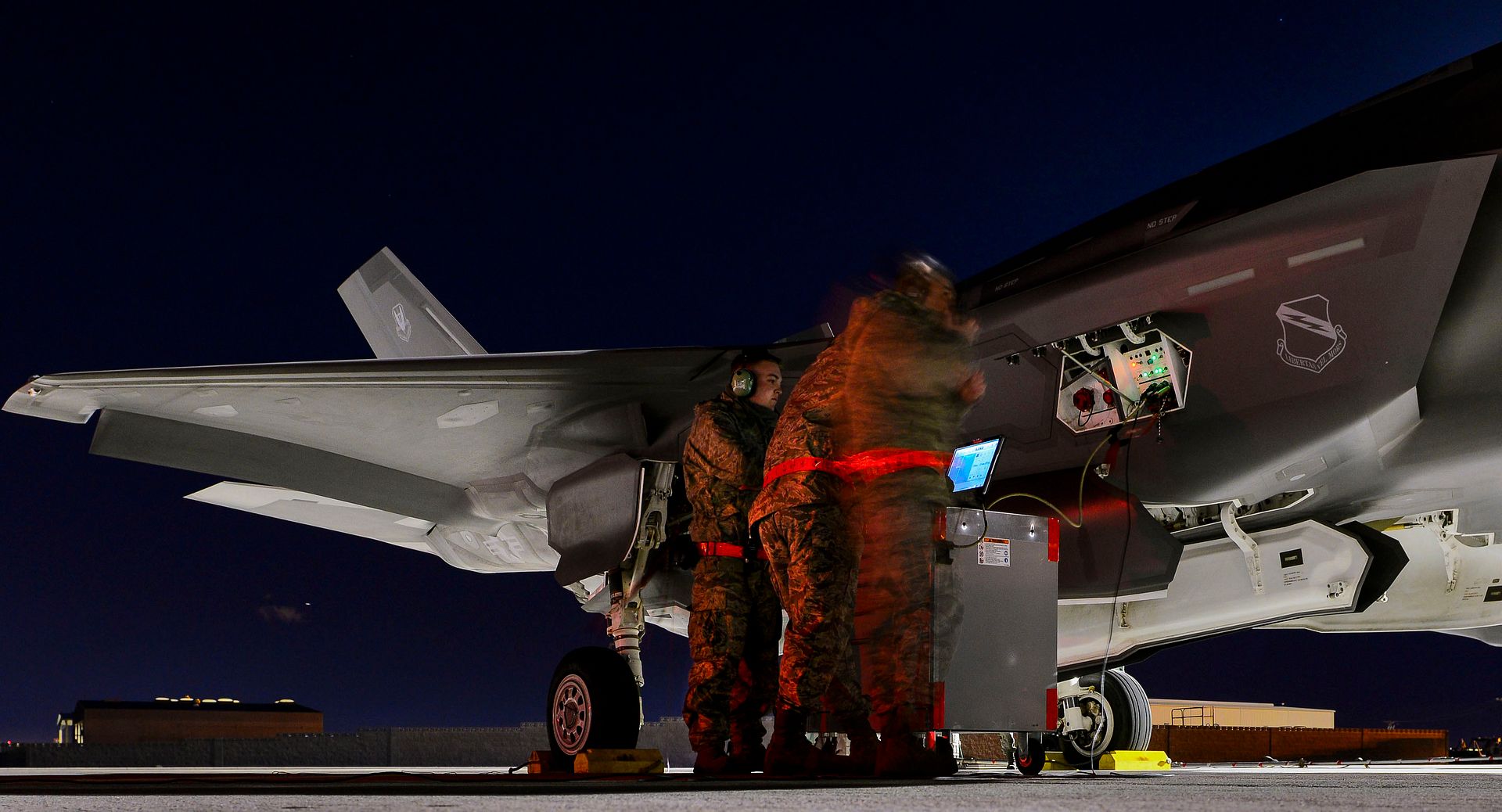
More Images from Sgt Neil Bryden, Cpl Graham Taylor of the RAF at Red Flag.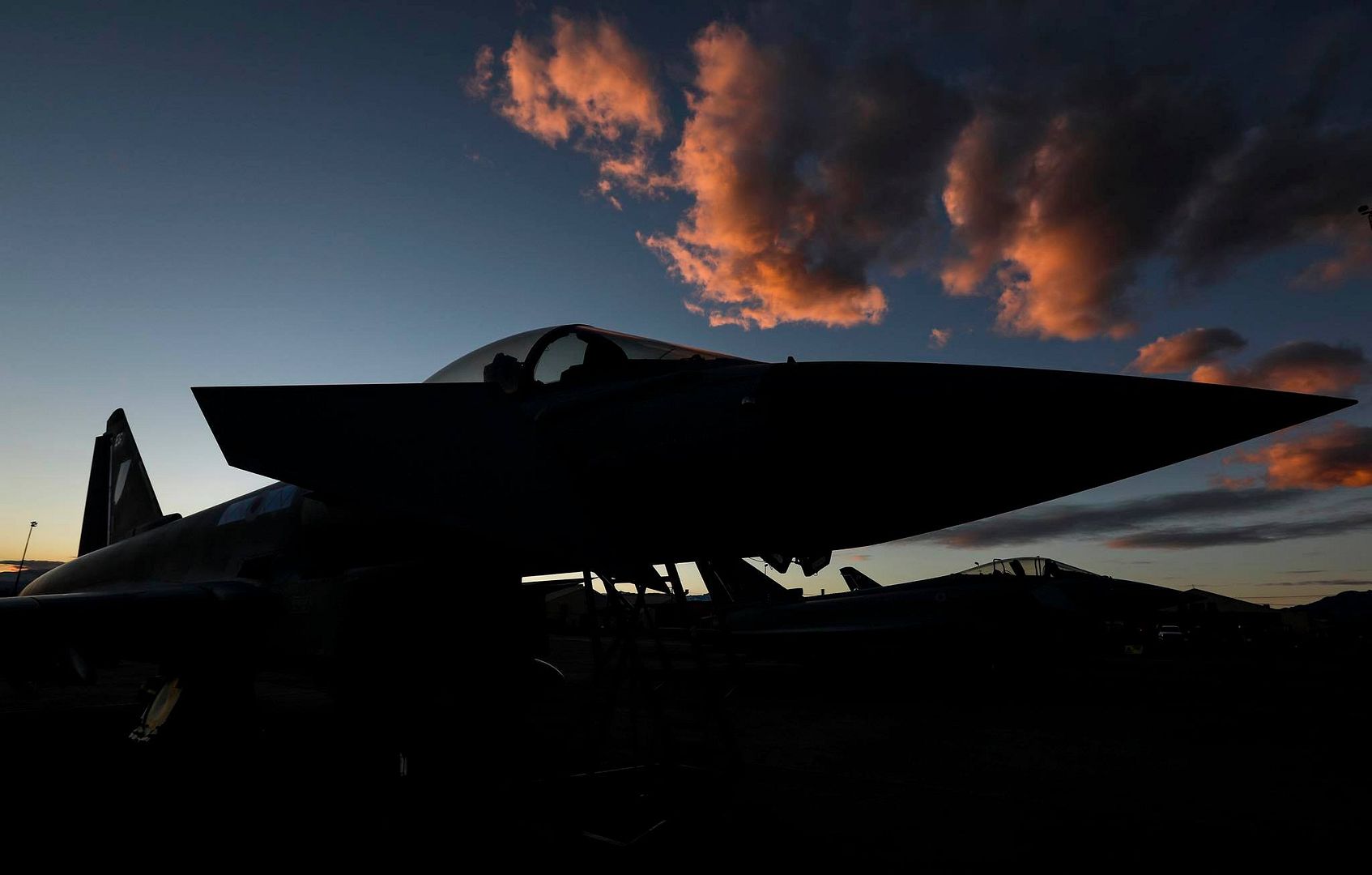
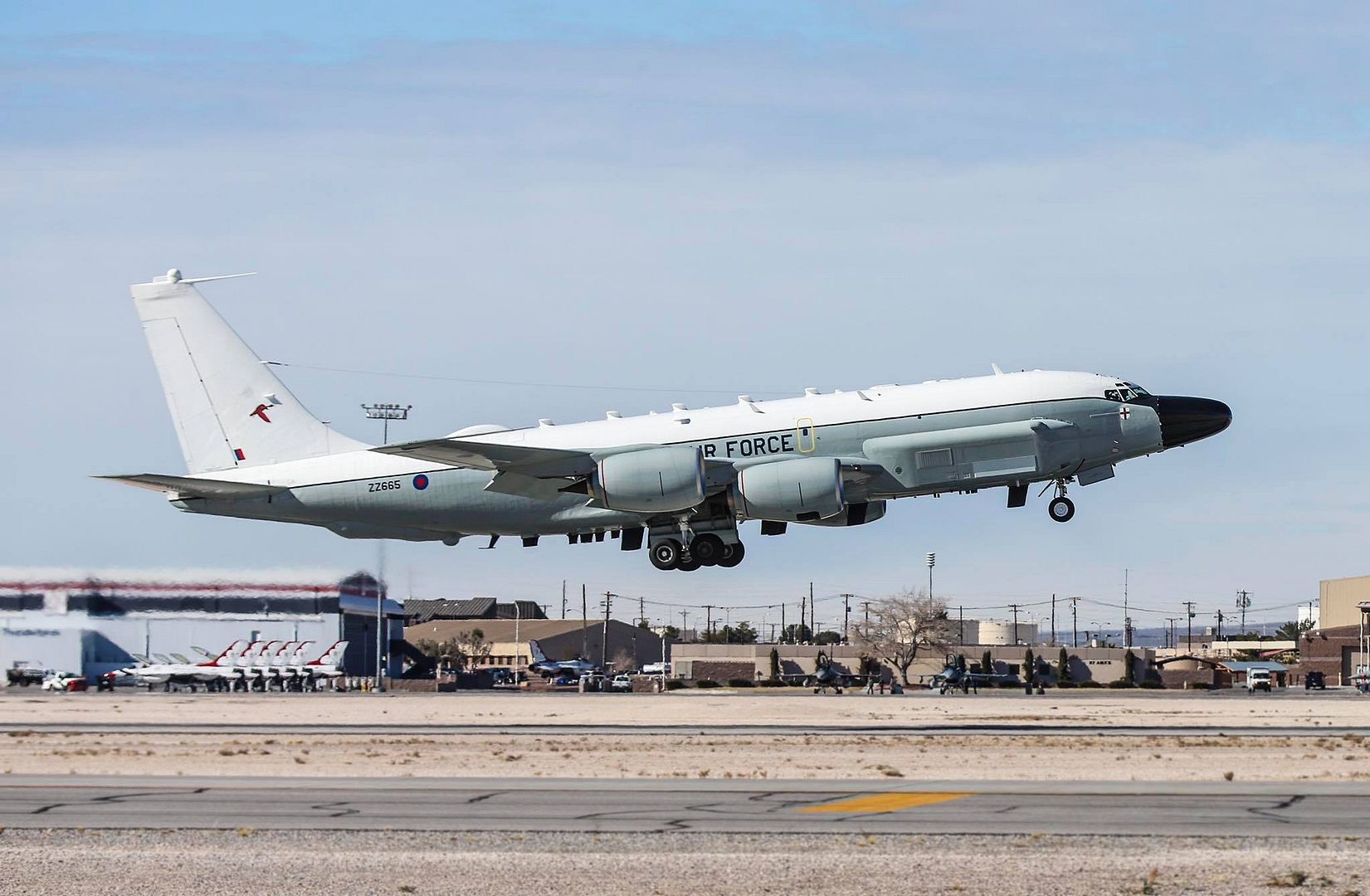
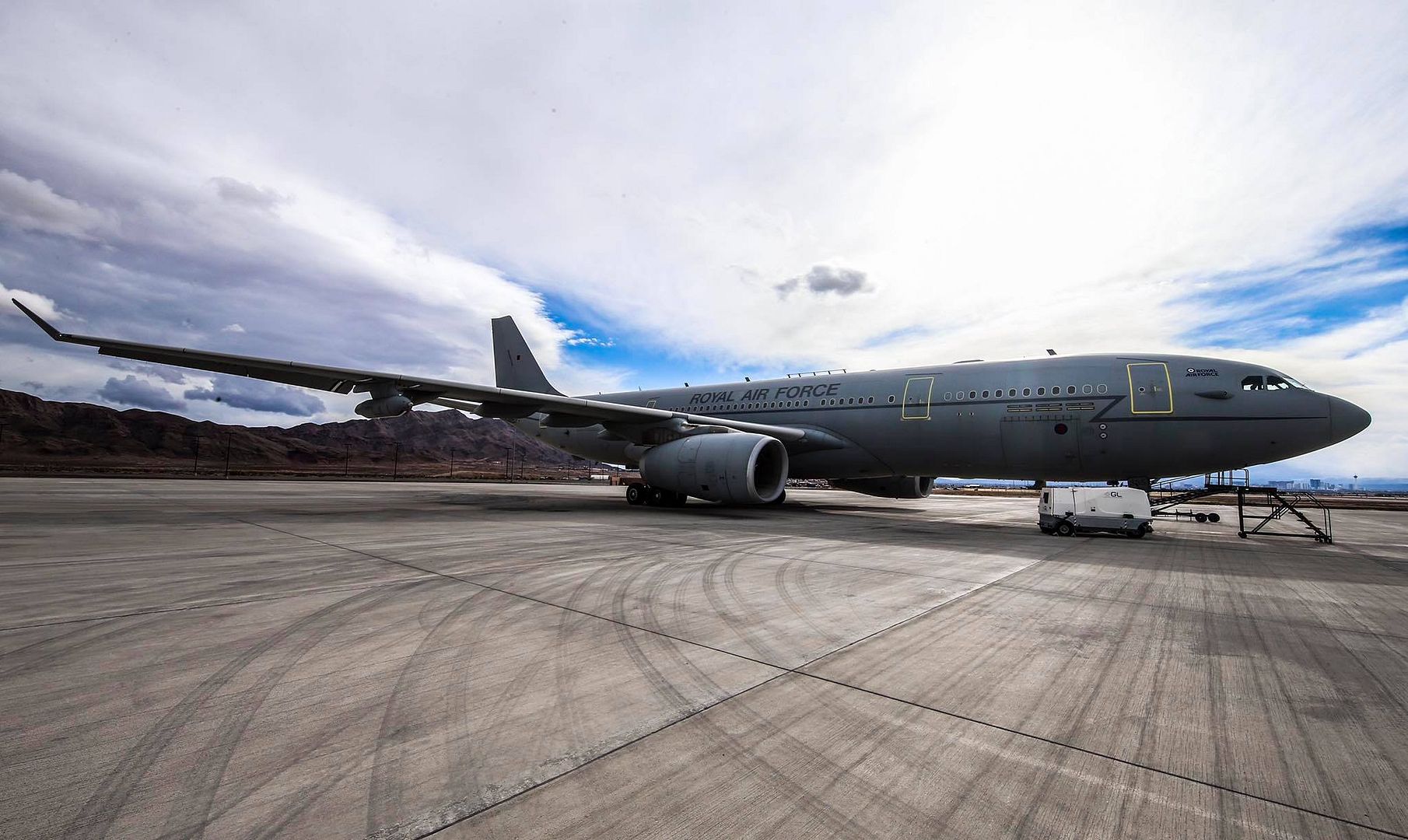
-
 Main AdminAn F-15 Eagle assigned to the 142nd Fighter Wing, launches from the Air Dominance Center during the Sentry Savannah 17-2 exercise, Savannah, Ga., Jan. 30, 2017. Sentry Savannah is a joint aerial combat training exercise hosted by the Georgia Air National Guard, and is the Air National Guard's largest Fighter Integration, air-to-air training exercise encompassing fourth and fifth generation aircraft. (U.S. Air National Guard photo by Senior Master Sgt. Shelly Davison, 142nd Fighter Wing Public Affairs)
Main AdminAn F-15 Eagle assigned to the 142nd Fighter Wing, launches from the Air Dominance Center during the Sentry Savannah 17-2 exercise, Savannah, Ga., Jan. 30, 2017. Sentry Savannah is a joint aerial combat training exercise hosted by the Georgia Air National Guard, and is the Air National Guard's largest Fighter Integration, air-to-air training exercise encompassing fourth and fifth generation aircraft. (U.S. Air National Guard photo by Senior Master Sgt. Shelly Davison, 142nd Fighter Wing Public Affairs)
U.S. Customs and Border Protection, Air and Marine Operations, Black Hawk helicopter prepares for takeoff at Ellington Field Joint Reserve Base in advance of Super Bowl LI in Houston, Texas, Jan 31, 2017. U.S. Customs and Border Protection Photo by Glenn Fawcett
OAK HARBOR, Wash. (Jan. 30, 2017)
A P-3C Orion patrol aircraft assigned to Patrol Squadron (VP) 46 sits onboard Naval Air Station Whidbey Island. VP-46 is conducting training exercises to maintain proficiency for their upcoming deployment. U.S. Navy photo by Mass Communication Specialist 3rd Class Alex J. Cole (Released)
PACIFIC OCEAN (Jan. 30, 2017)
An F/A-18E Super Hornet assigned to the Golden Dragons of Strike Fighter Squadron (VFA) 192 makes an arrested landing aboard the aircraft carrier USS Carl Vinson (CVN 70). The ship's carrier strike group is on a western Pacific deployment as part of the U.S. Pacific Fleet-led initiative to extend the command and control functions of U.S. 3rd fleet. U.S. Navy photo by Mass Communication Specialist 2nd Class Sean M. Castellano (Released)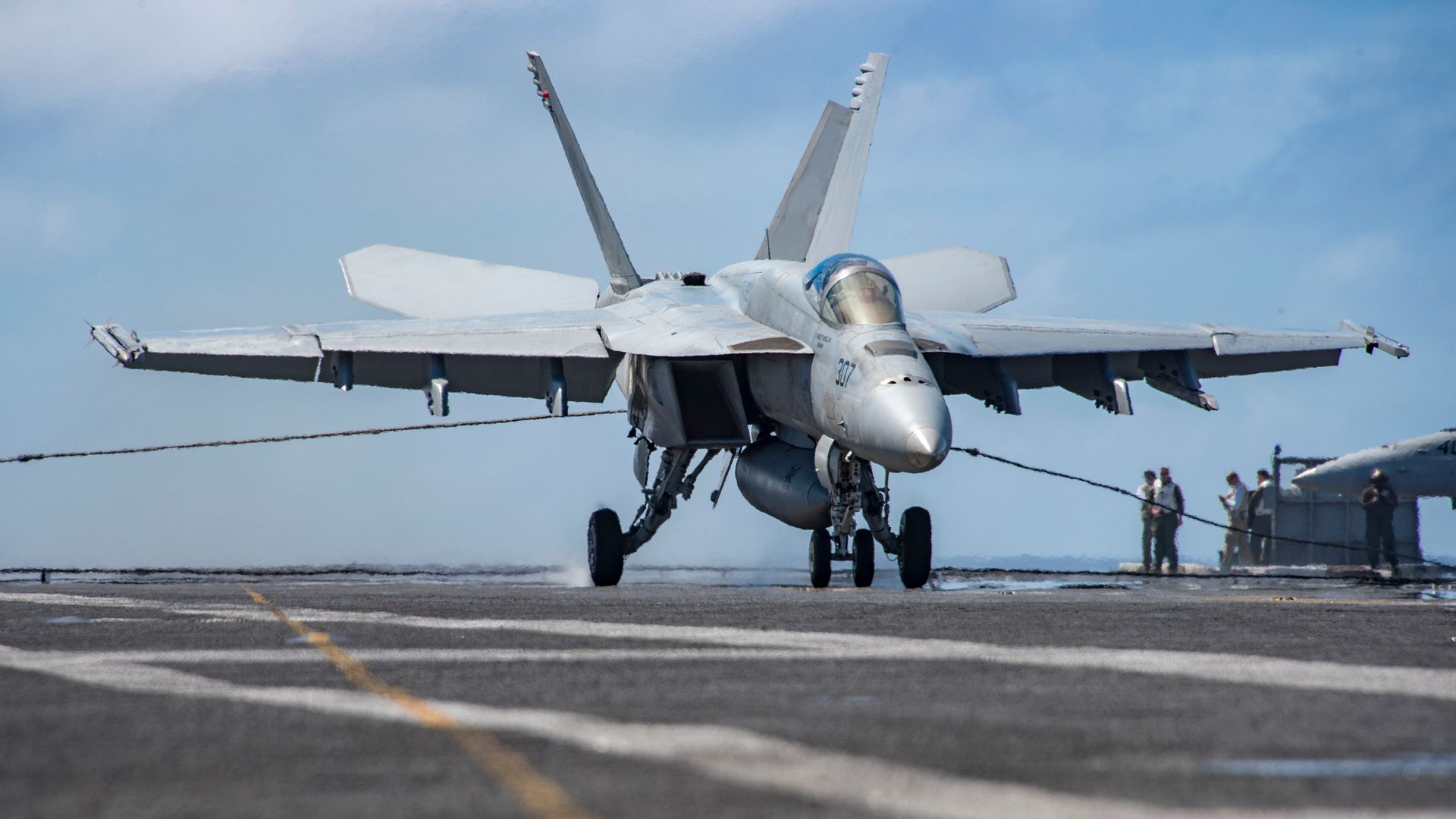
More Images from Sgt Neil Bryden, Cpl Graham Taylor at Red Flag.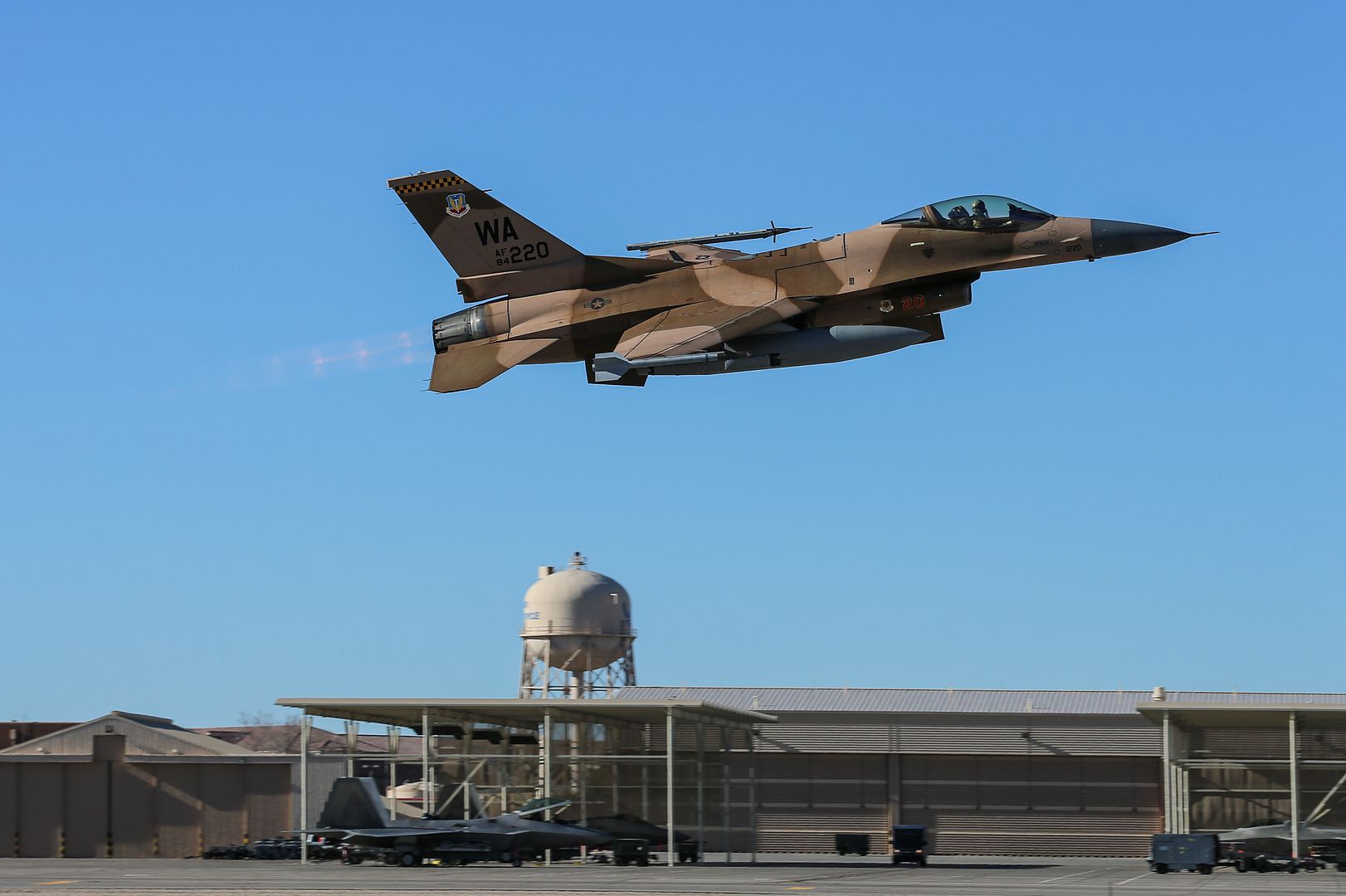


-
 Main AdminNELLIS AIR FORCE BASE, Nev. (AFNS) -- Pilots from the 74th Fighter Squadron prepared for future deployments while participating in Green Flag-West 17-03 from Jan. 13-27 at Nellis Air Force Base.
Main AdminNELLIS AIR FORCE BASE, Nev. (AFNS) -- Pilots from the 74th Fighter Squadron prepared for future deployments while participating in Green Flag-West 17-03 from Jan. 13-27 at Nellis Air Force Base.
GFW is an air-land integration exercise that gives Air Force pilots a chance to conduct realistic close air support in a joint training environment designed to mirror the current conditions present in overseas contingency operations.
?Green Flag is a big exercise where we get to train with a lot of Army assets that we don't normally work with,? said Air Force Maj. Michael Dumas, the 23rd Fighter Group chief of standards and evaluation. ?We?re supporting an entire brigade combat team, more than 4,500 guys, and being involved in that kind of large force exercise is really great training for us. It?s especially important for our younger guys who have never been exposed to this kind of integration.?
Air Force 1st Lt. Kyle Singletary, an A-10C Thunderbolt II pilot from the 74th FS, is on his first large-scale exercise with the squadron.
?I think Green Flag is preparing us well because we get to see what the Army would actually look like on the ground in a deployed environment,? Singletary said. ?We get to see what close air support is supposed to be doing in a large-scale battle and the associated difficulties that come along with it, like battle tracking, finding targets and flying alongside artillery fire.
?These are the scenarios we try to simulate back home in our training,? Singletary continued. ?So the main difference, and the real benefit of coming out here, is that it?s all real.?
An added benefit of the realism inherent with an exercise this size is an extra challenge called battle tracking, keeping track of the targets as they move and react to friendly force movements.
?It?s a pretty cool problem to have because it?s very difficult for us to simulate back home,? Dumas said. ?It?s the same training every day, so we all know where the targets are. Here, there?s a bunch of stuff on the ground and you don?t always know what it is. Providing close are support while working through the uncertainty of finding the friendlies to protect and the targets to kill is really important practice for when we go to support Operation Inherent Resolve.?
The friendly forces and targets alike are on the ground at the National Training Center at Fort Irwin, California, where the Army conducts pre-deployment certification training and according to Army Capt. Zachary Busenbark, the 357th Ground Liaison Detachment, 4th Battlefield Coordination Detachment ground liaison officer, realism is the name of the game.
?The entire purpose of the NTC is to make training as realistic as possible,? Busenbark said. ?It tests all of the ground commander?s systems: maneuver, artillery, infantry, tanks, the cooks, the intel guys ? everyone?s getting a piece of the training. Bringing in the A-10s to support just absolutely adds the element of authenticity.
?Real CAS is tangible,? Busenbark said. ?I think that?s why it?s vital to have these assets out here.?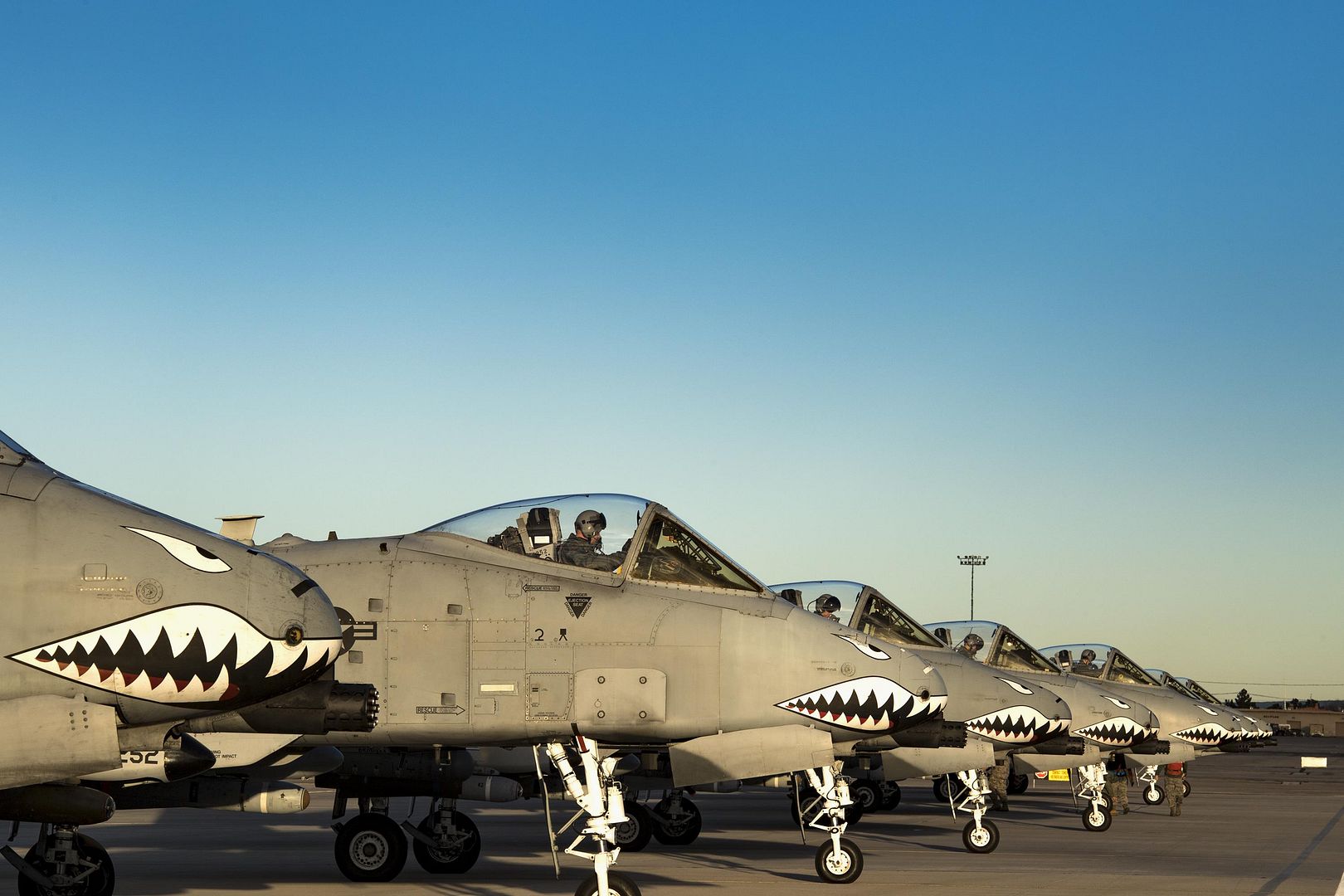
JEDDAH --- King Salman patronized on Wednesday an event to celebrate the 50th anniversary of the Foundation of King Faisal Air College, in Riyadh. The event also saw the launch of the new F-15 SA aircraft.
The king, who was accompanied by Sudanese President Omar Hassan Al-Bashir, congratulated the 91st batch of students from the college.
The Commander of the King Faisal Air College, Air Vice Marshal Khalid Al-La'aboun delivered a speech in which he said: "Today we celebrate the 50th anniversary of the foundation of this great edifice where the beginning of training was launched by late King Faisal bin Abdulaziz by raising the banner of the College in this field honored to be named after him.?
After the honoring ceremony, the king and other dignitaries watched an airshow including a display by the Saudi Hawks team, who recently registered in the Guinness Book of world records for their performance depicting the Kingdom's logo ? two swords and a palm.

380th Expeditionary Aircraft Maintenance Squadron crew chief Airman 1st Class Mitchell signals an E-3 Sentry before completing a sortie in support of Combined Joint Task Force-Operation Inherent Resolve at an undisclosed location in Southwest Asia, Feb. 1, 2017. ?Keeping the jets in the air for 14-16 hours a day is a really big deal,? Mitchell said. ?Seeing them comeback after completing a safe flight is what keeps me motivated to do this job.? (U.S. Air Force photo's by Senior Airman Tyler Woodward)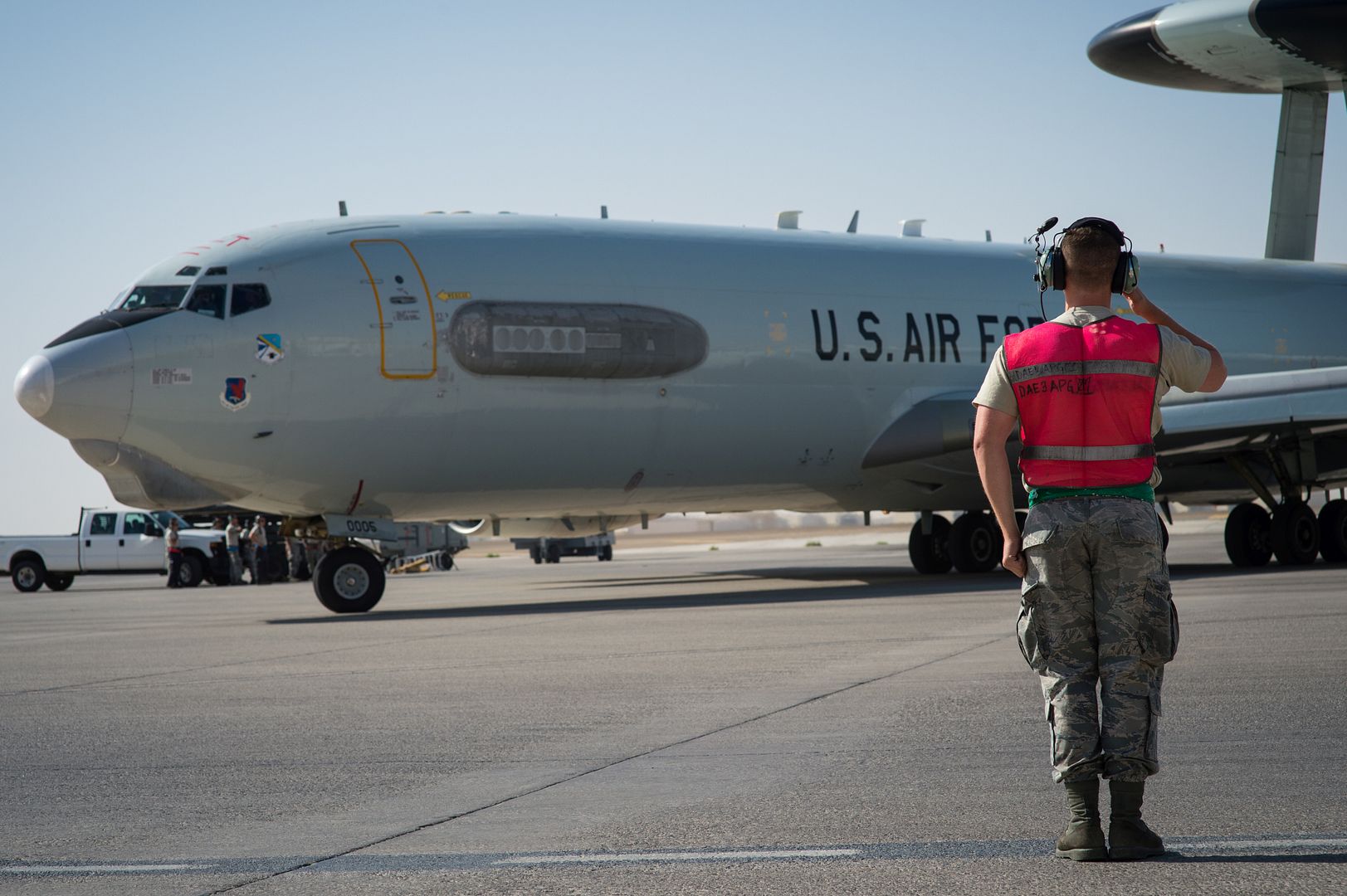
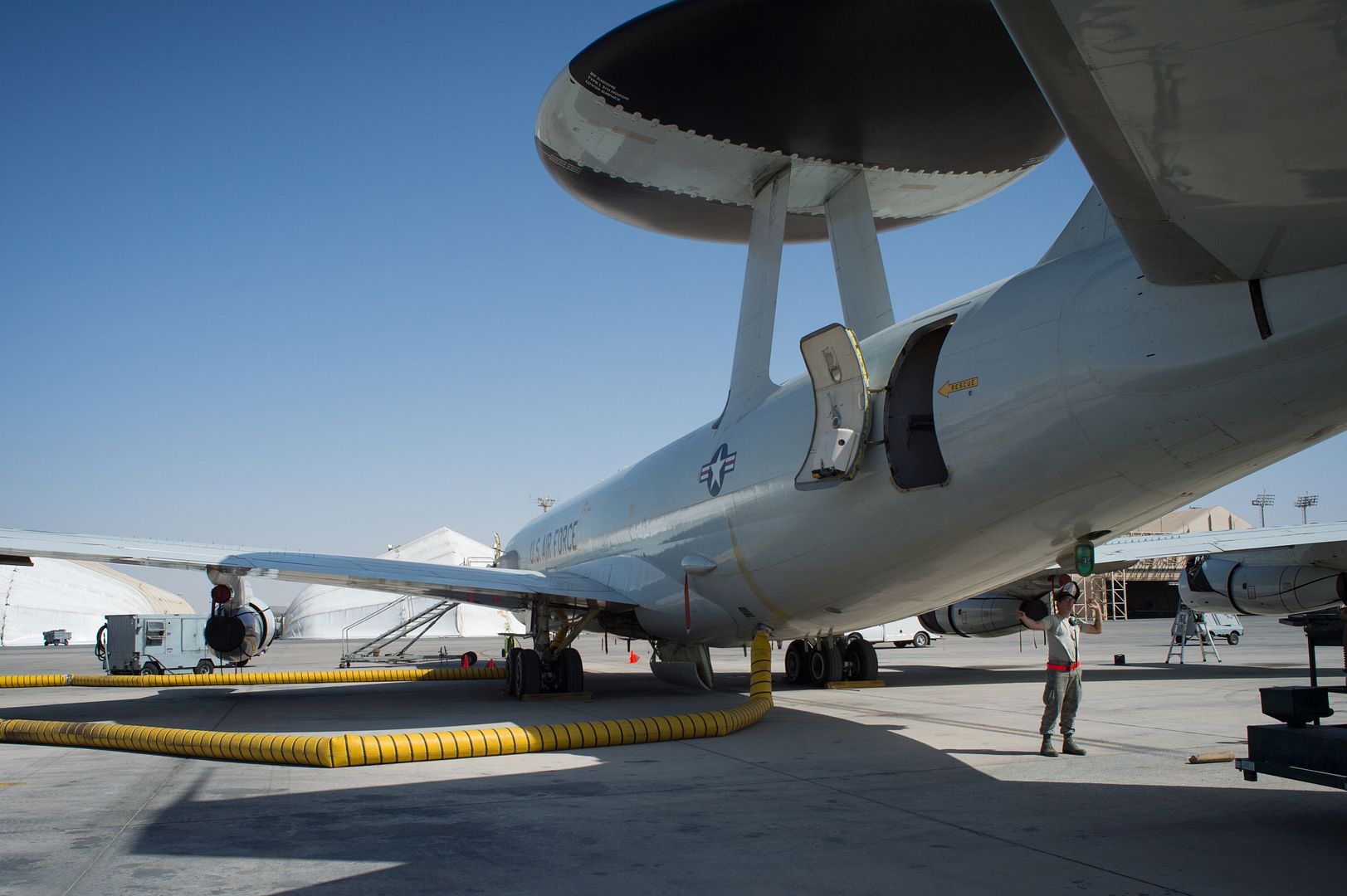

A KC-135 Aircraft arrives at Niagara Falls Air Reserve Station, marking its official arrival and the beinning of the transition of the 914th's mission from an Airlift Wing to an Air Refueling Wing. This is the first of eight aircraft that will be flown in over the course of the next several months. (U.S. Air Force photo's by Tech. Sgt. Stephanie Sawyer)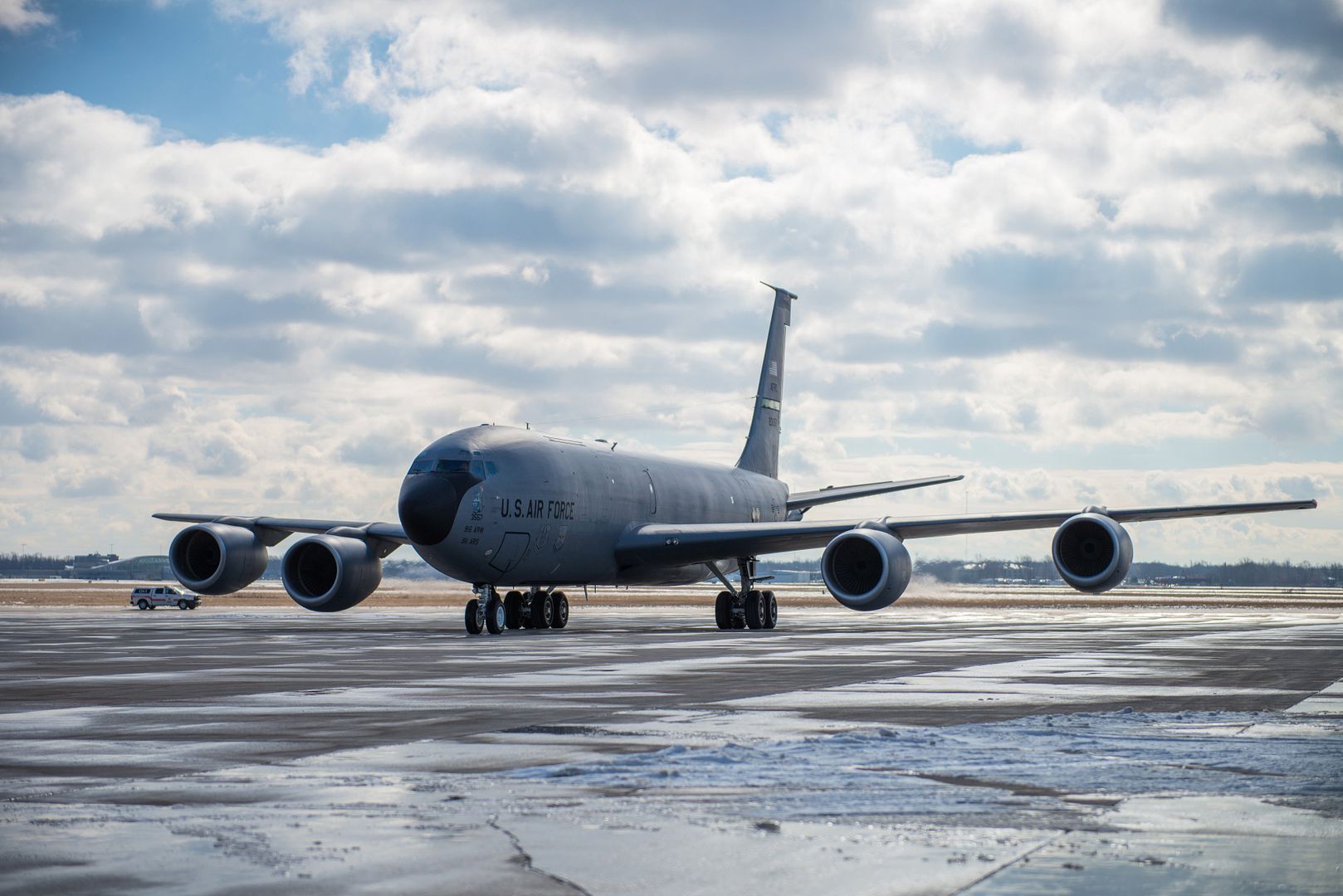
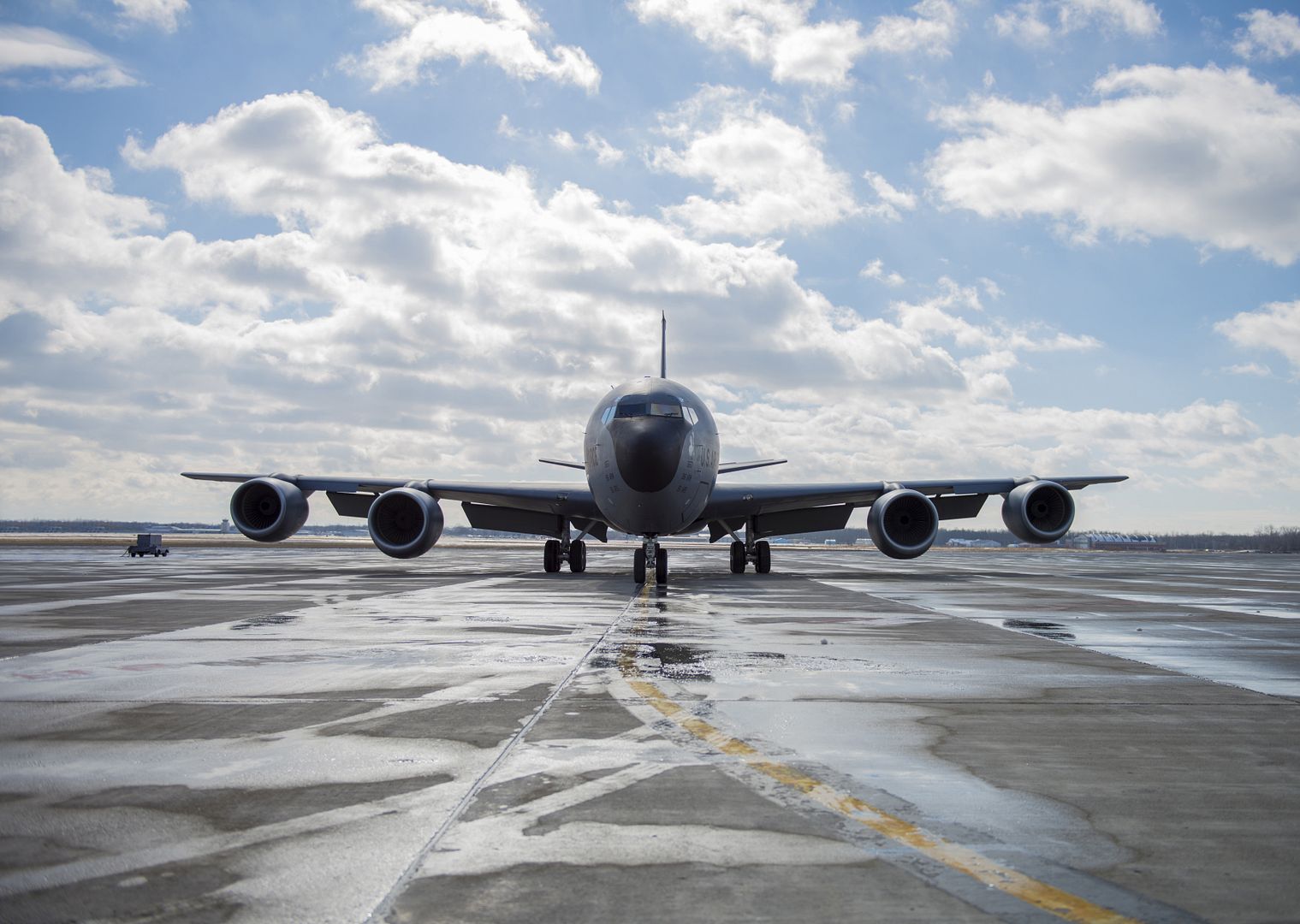
An E-4 carrying Defense Secretary Jim Mattis lands at Osan Air Base, Republic of Korea, Feb. 2, 2017. The visit, which is Mattis? first official visit to a foreign country as secretary of defense, highlighted the common traits and strengths shared by the U.S. and ROK governments, including the commitment to bi-lateral cooperation in keeping regional safety and stability in check. (U.S. Air Force photo's by Staff Sgt. Jonathan Steffen)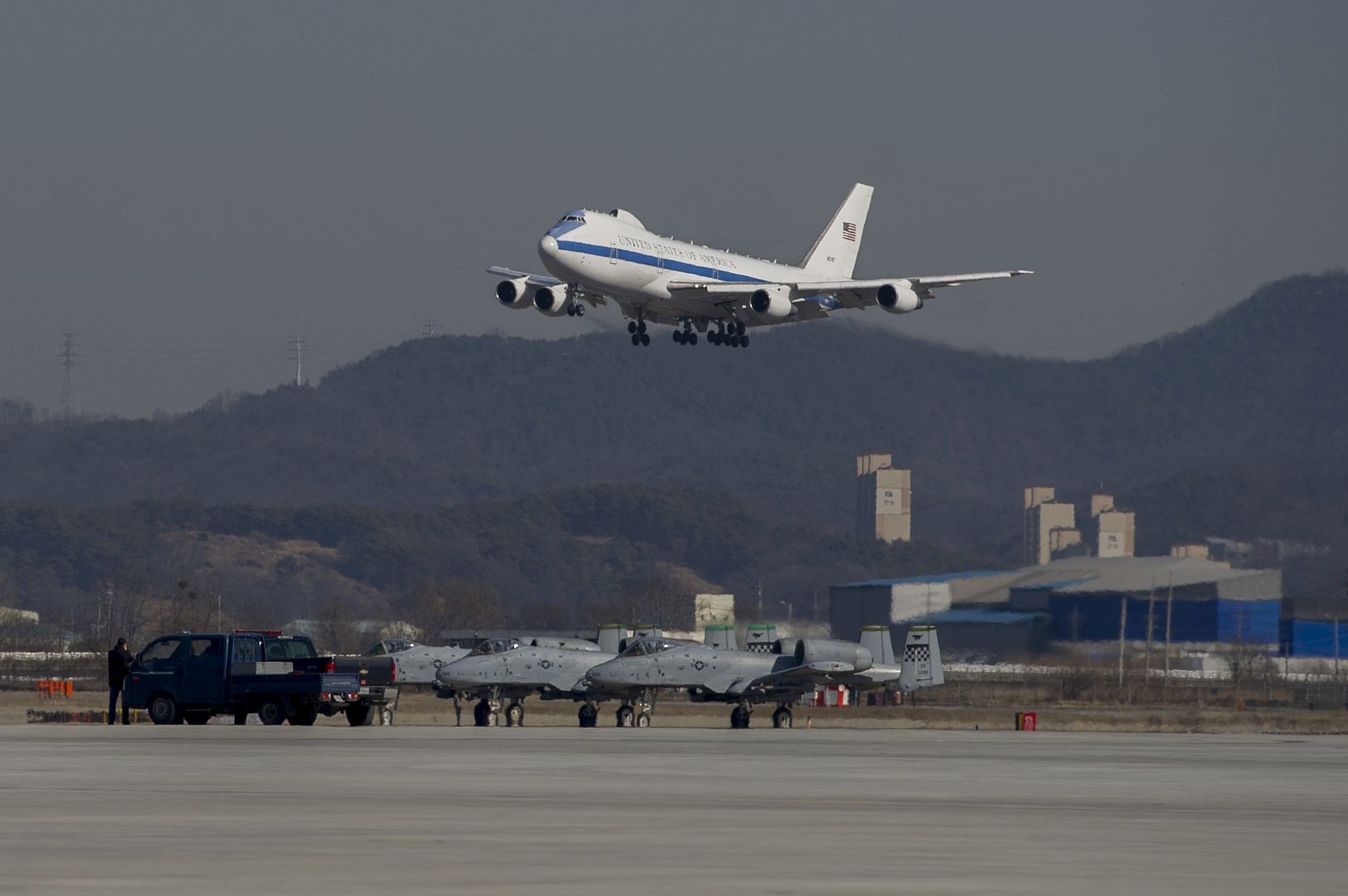
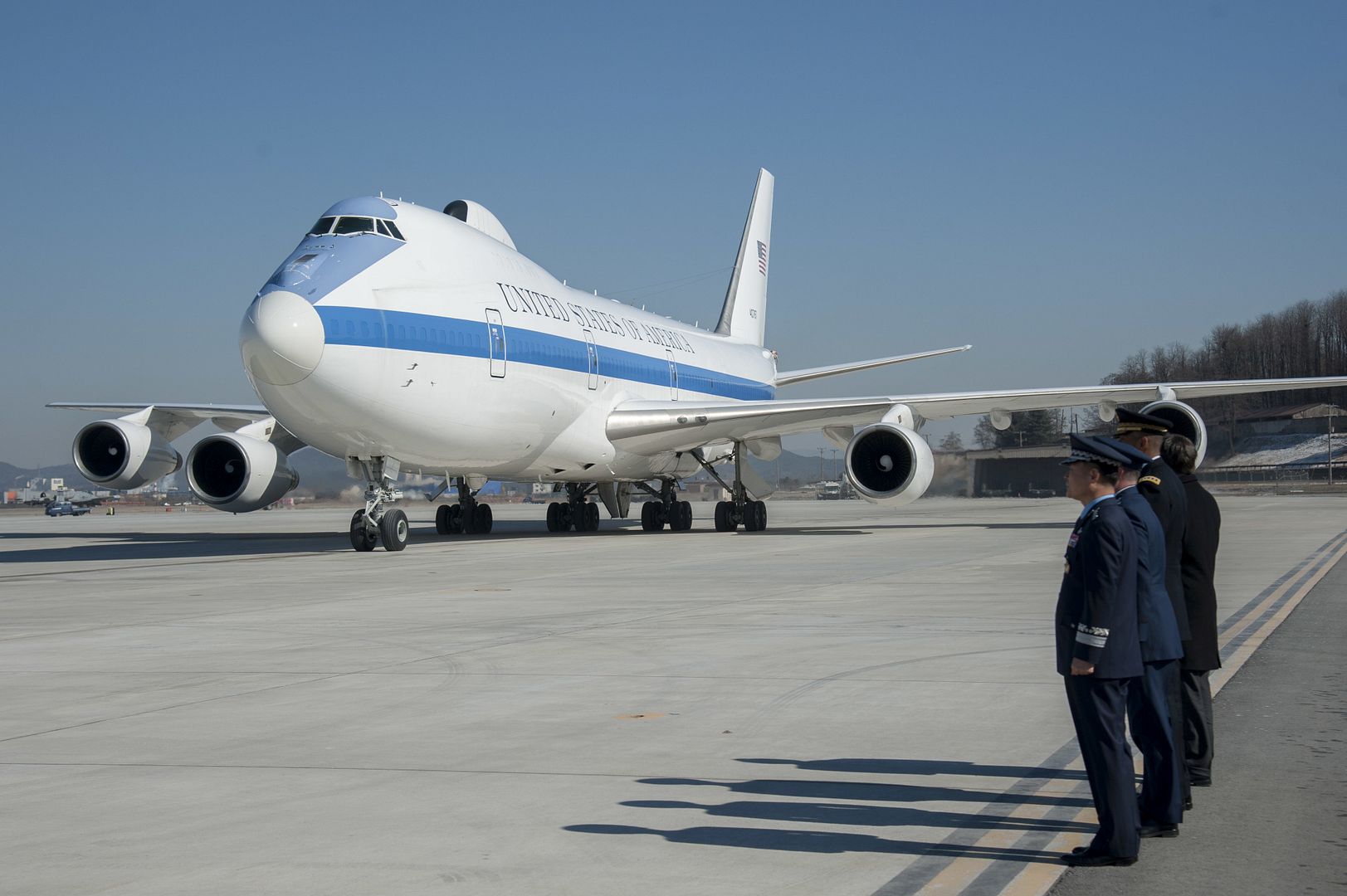
Five U.S. Navy E-2D Advanced Hawkeyes with Carrier Airborne Early Warning Squadron fly in a ?V? formation prior to landing at Marine Corps Air Station Iwakuni, Japan, Feb. 2, 2017. VAW-125 arrived at MCAS Iwakuni, from Naval Station Norfolk, Va. The E-2D Advanced Hawkeye is equipped with the most advanced airborne radar in the world, possessing systems which increase the capabilities to defend Japan and provide security in the Indo-Asia-Pacific region. (U.S. Marine Corps photo by Lance Cpl. Gabriela Garcia-Herrera)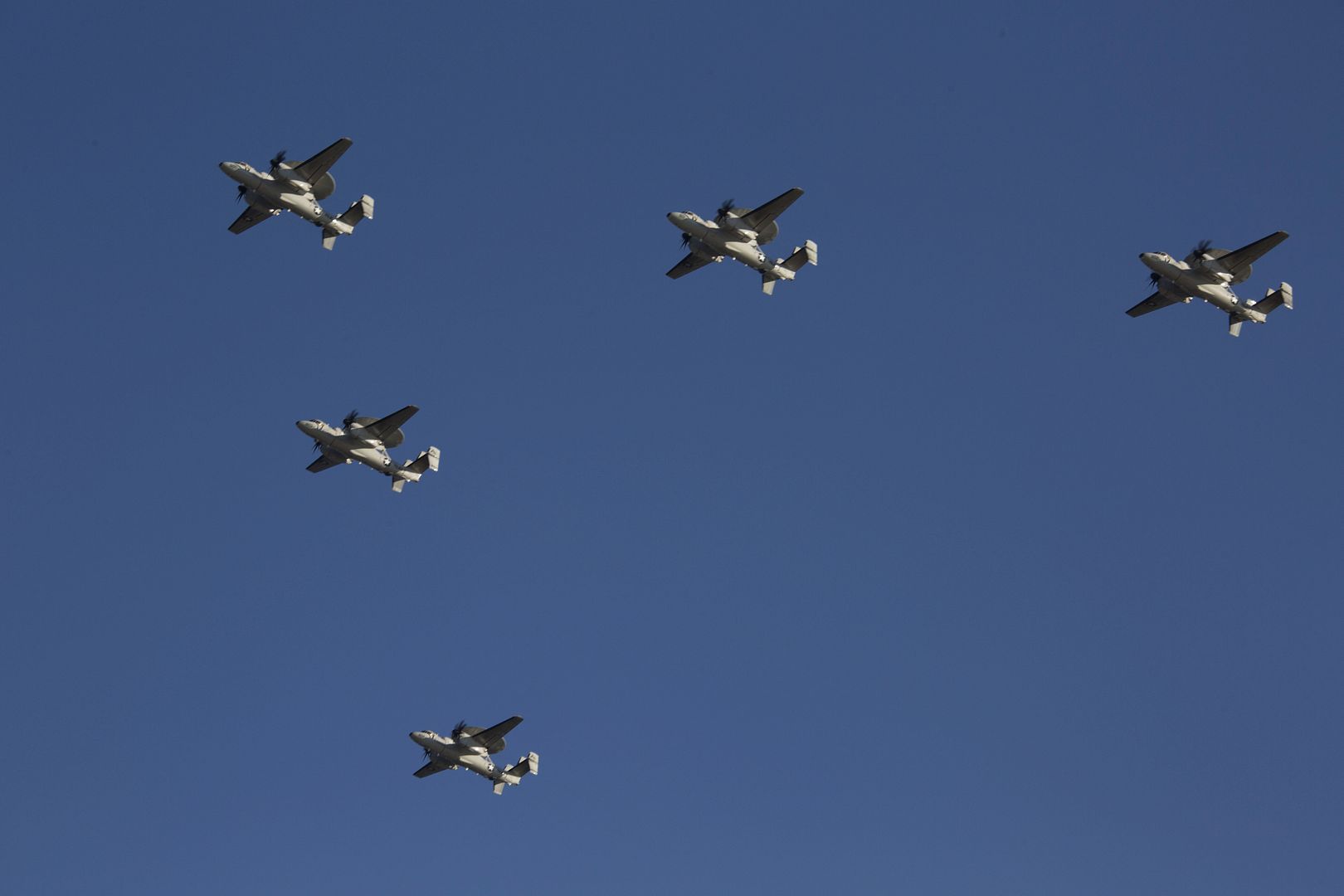
U.S. Navy E-2D Advanced Hawkeye aircraft with Carrier Airborne Early Warning Squadron (VAW) 125, taxis down the runway at Marine Corps Air Station Iwakuni, Japan, Feb. 2, 2017. VAW-125 arrived at MCAS Iwakuni from Naval Station Norfolk, Va. The E-2D Advanced Hawkeye is equipped with the most advanced airborne radar in the world, possessing systems which increase the capabilities to defend Japan and provide security in the Indo-Asia-Pacific region. (U.S. Marine Corps photo's by Lance Cpl. Joseph Abrego)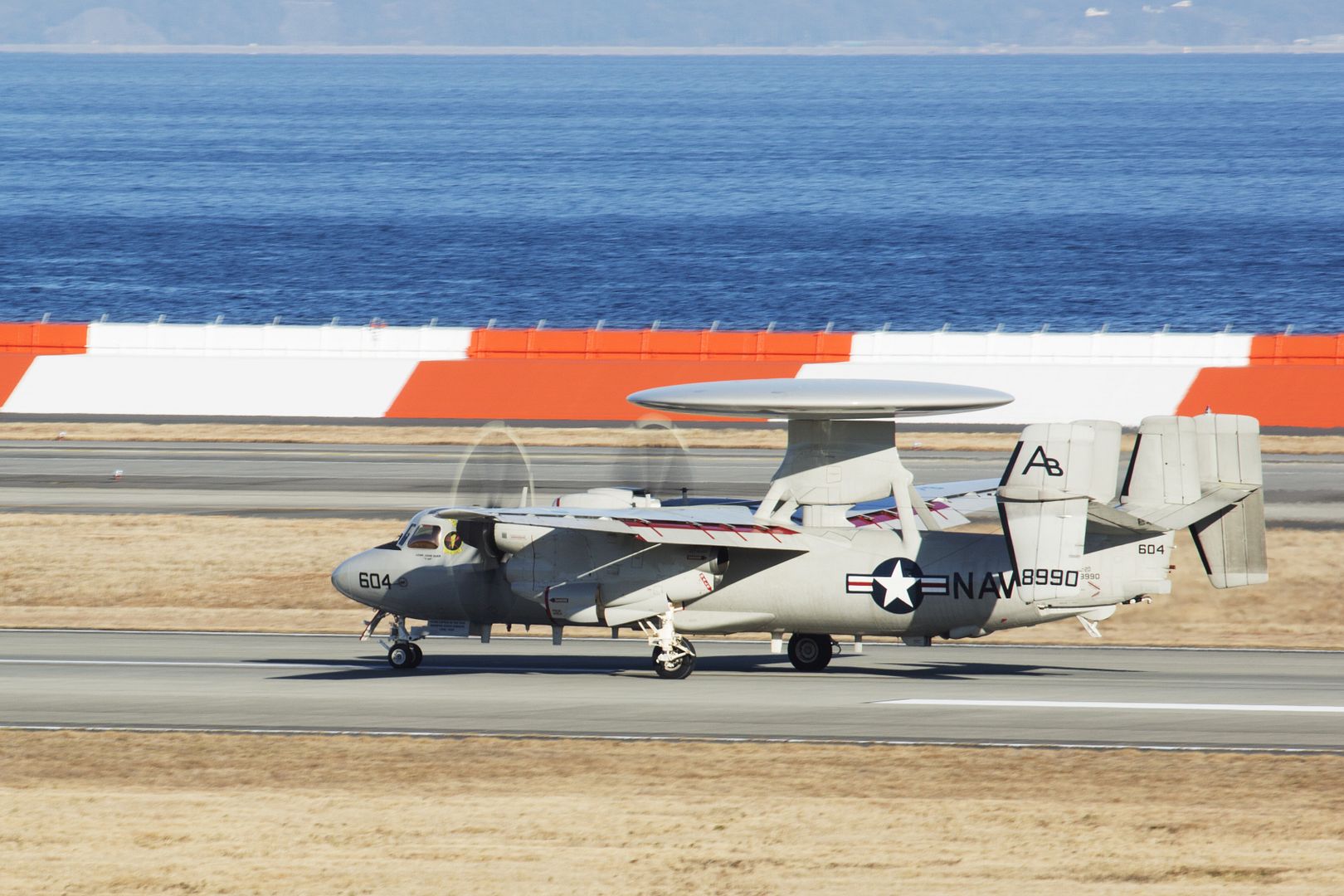
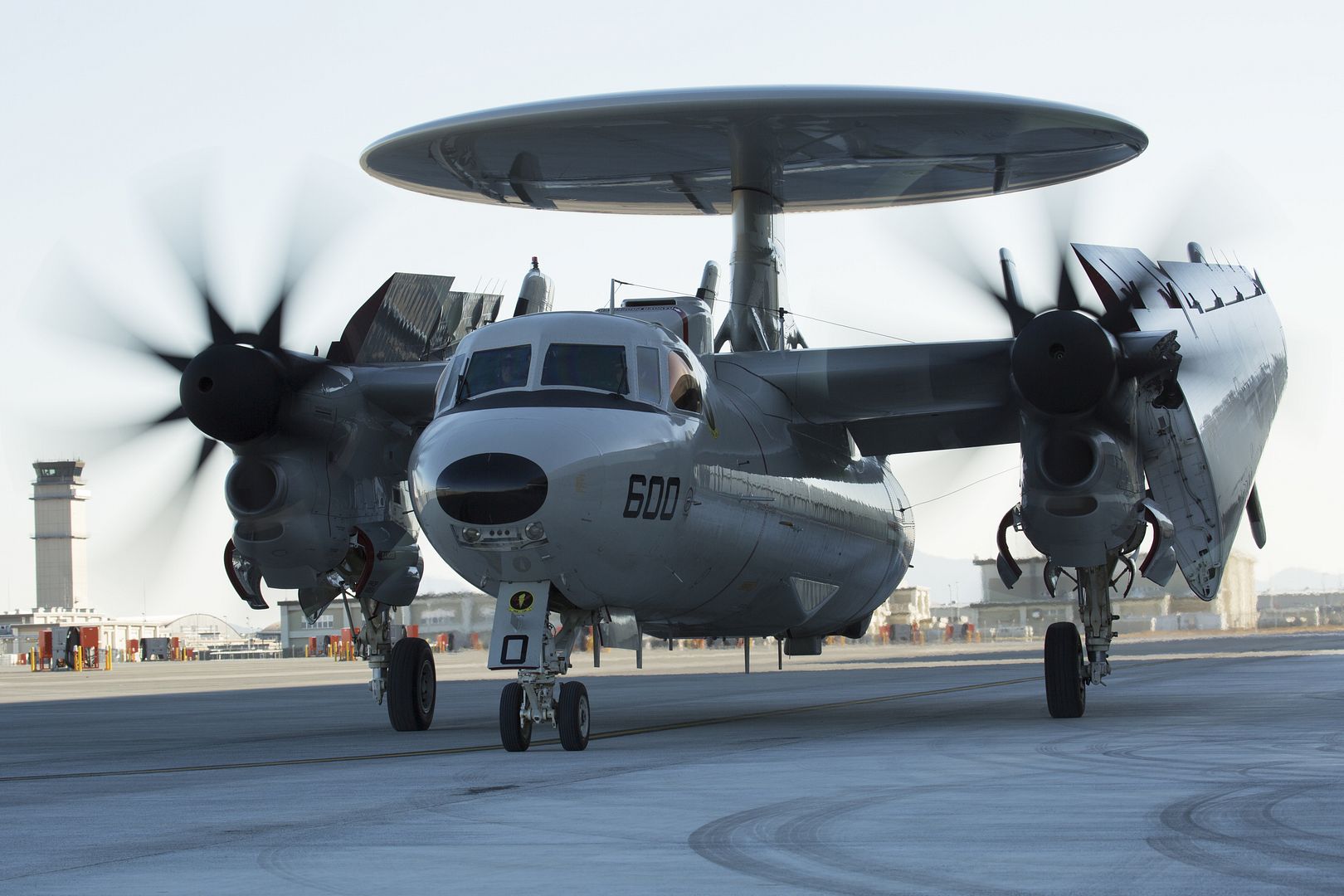
MARIETTA, Ga., Feb. 1, 2017 /PRNewswire/ -- Lockheed Martin Corp. [NYSE: LMT] completed the first F-22 Raptor at the company's Inlet Coating Repair (ICR) Speedline facility and delivered the aircraft back to the U.S. Air Force ahead of schedule.
The U.S. Air Force contracted Lockheed Martin to establish the Speedline in Marietta, Georgia, in August 2016 and the first F-22 arrived there in early November. A second aircraft arrived in early December 2016 and a third in late January 2017. Lockheed Martin is on contract to perform this work on a total of 12 aircraft and a follow-on contract is anticipated. Additionally, Lockheed Martin is providing modification support services, analytical condition inspections, radar cross section turntable support and antenna calibration.
Periodic maintenance is required to maintain the special exterior coatings that contribute to the 5th Generation Raptor's Very Low Observable (VLO) radar cross-section. The increase in F-22 deployments, including ongoing operational combat missions, has increased the demand for ICR.
"The inlet coatings work, coupled with future improved Low Observable materials and repair improvements, is a critical part of increasing the 325th Fighter Wing's repair capacity and combat readiness," said Lt. Col. Argie Moore, deputy commander of the 325th Maintenance Group.
Lockheed Martin provides sustainment services to the F-22 fleet through a U.S. Air Force-awarded Performance Based Logistics contract and a comprehensive weapons management program called Follow-on Agile Sustainment for the Raptor (FASTeR). As the original equipment manufacturer and support integrator for the F-22 Raptor, Lockheed Martin works closely with the U.S. Air Force to integrate a total life-cycle systems management process to ensure the Raptor fleet is ready to perform its mission.
Lockheed Martin F-22 depot work is part of a public-private partnership agreement between the Air Force and Lockheed Martin that has been in place for nearly a decade.
About the F-22 Raptor
The F-22 Raptor defines air dominance. The 5th Generation F-22's unique combination of stealth, speed, agility, and situational awareness, combined with lethal long-range air-to-air and air-to-ground weaponry, makes it the best air dominance fighter in the world.
-
 Main AdminA U-2 taxis through a ceremonial shower after completing 30,000 flight hours at an undisclosed location in Southwest Asia, Feb. 2, 2017. Firetrucks parked on either side of the U-2 and discharged water for the ceremony. The milestone marks the second U-2 in the Air Force fleet to reach the historic milestone. (U.S. Air Force photo/Senior Airman Tyler Woodward)
Main AdminA U-2 taxis through a ceremonial shower after completing 30,000 flight hours at an undisclosed location in Southwest Asia, Feb. 2, 2017. Firetrucks parked on either side of the U-2 and discharged water for the ceremony. The milestone marks the second U-2 in the Air Force fleet to reach the historic milestone. (U.S. Air Force photo/Senior Airman Tyler Woodward)
A 380th Air Expeditionary Wing U-2 launches from a flight line on a sortie in support of Combined Joint Task Force- Operation Inherent Resolve at an undisclosed location in Southwest Asia, Feb. 2, 2017. During this flight the airframe reached 30,000 flight hours. This is the second U-2 to reach this milestone out of the U-2 fleet. However, this achievement was the first while serving Air Force Central Command in an expeditionary environment. (U.S. Air Force photo/Senior Airman Tyler Woodward)
EAST CHINA SEA, Japan (Feb. 2, 2017) A UH-Y Huey helicopter, assigned to Marine Medium Tiltrotor Squadron (VMM) 262 (Reinforced), prepares to land aboard the amphibious transport dock ship USS Green Bay (LPD 20). Green Bay is on a routine patrol, operating in the Indo-Asia-Pacific region to enhance partnerships and be a ready-response force for any type of contingency. (U.S. Navy photo by Mass Communication Specialist 1st Class Chris Williamson/Released)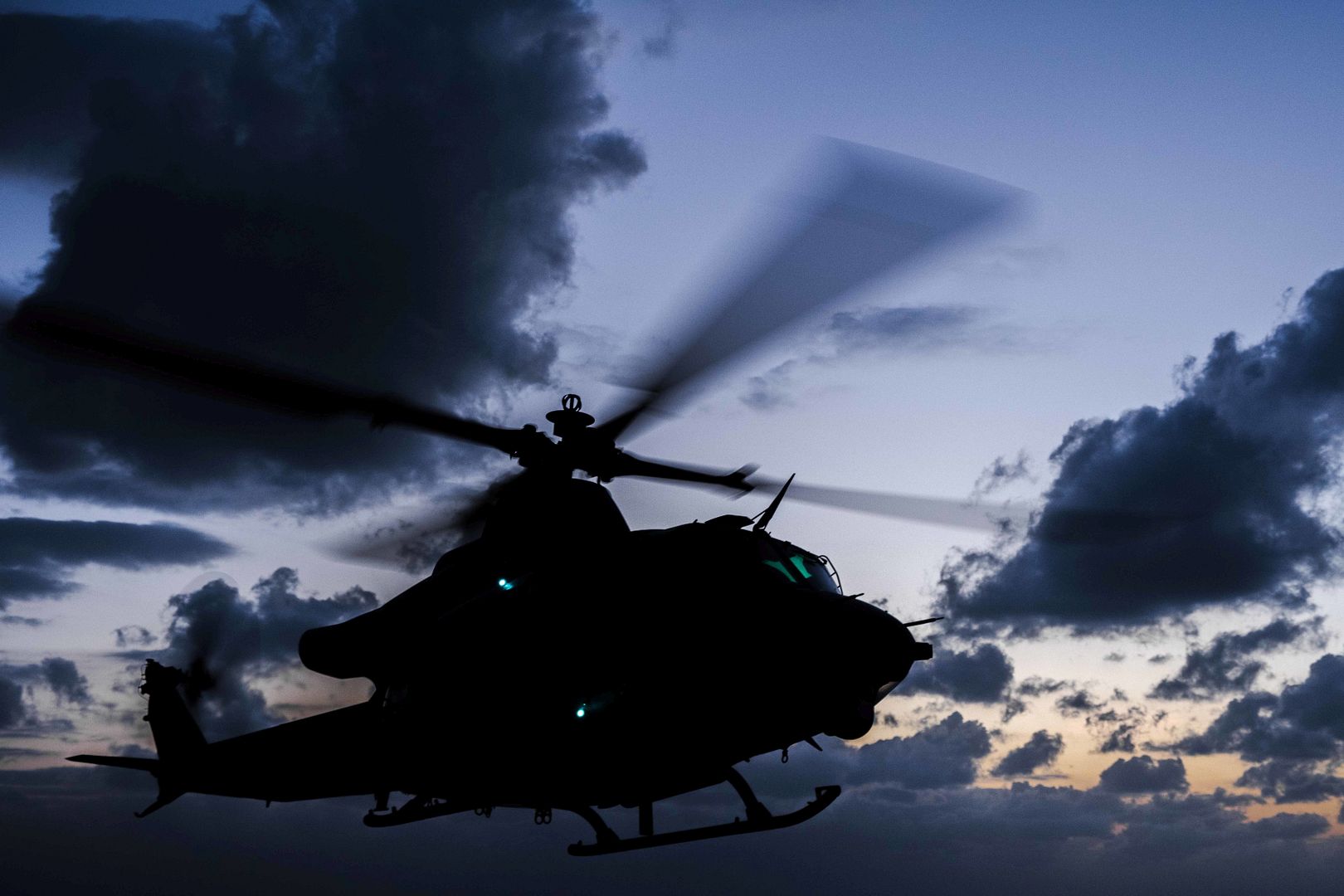
A U.S. Marine Corps F-35B Lightning II with Marine Fighter Attack Squadron (VMFA) 121, hovers overhead before completing a vertical landing at Marine Corps Air Station Iwakuni, Japan, Feb. 2, 2017. VMFA-121 is permanently stationed at MCAS Iwakuni and belongs to Marine Aircraft Group 12, 1st Marine Aircraft Wing, III Marine Expeditionary Force. The F-35B Lightning II is a fifth-generation fighter, which is the world?s first operational supersonic short takeoff and vertical landing aircraft. The F-35B brings strategic agility, operational flexibility and tactical supremacy to III MEF with a mission radius greater than that of the F/A-18 Hornet and AV-8B Harrier II in support of the U.S. ? Japan alliance. (U.S. Marine Corps photo's by Cpl. Aaron Henson)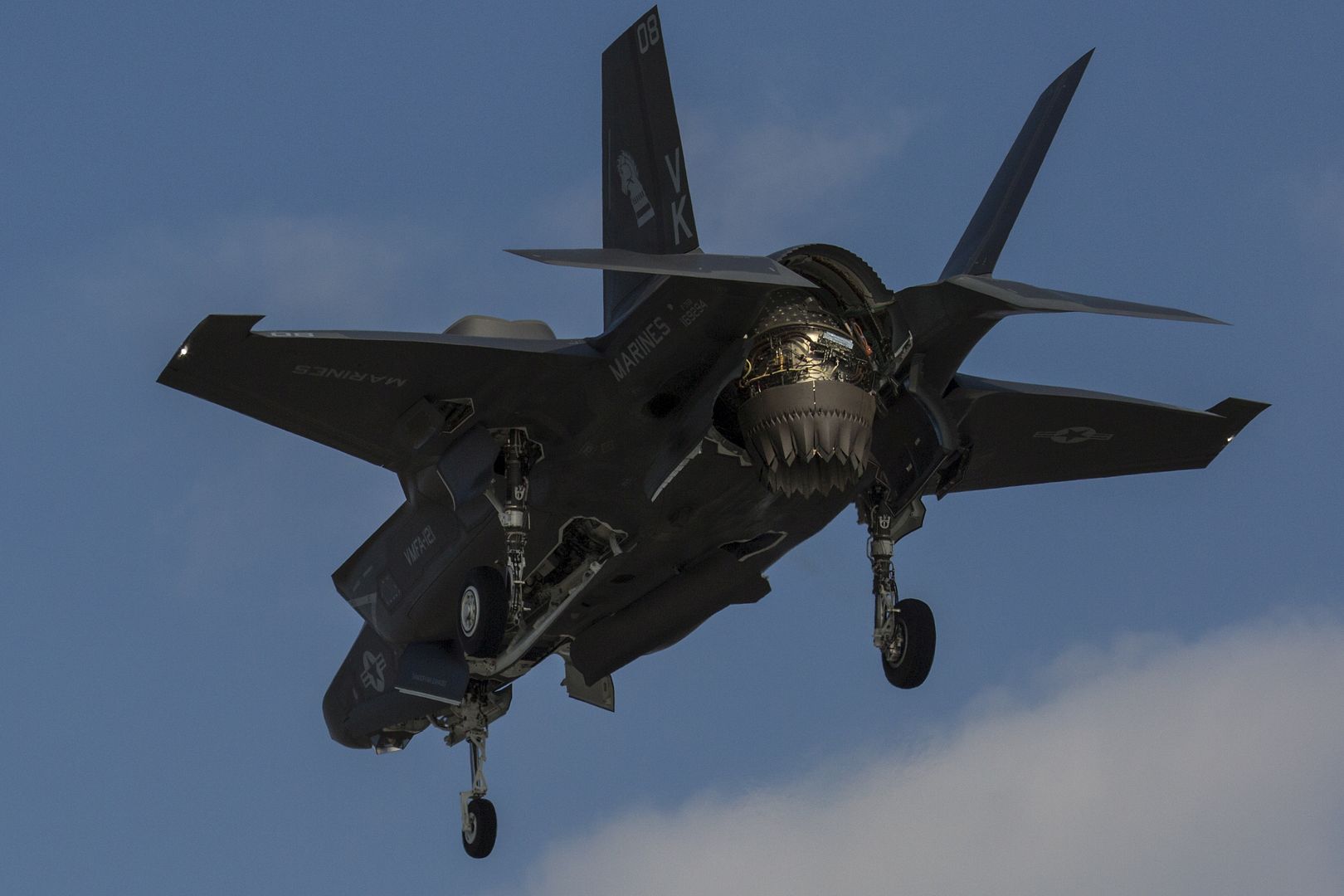

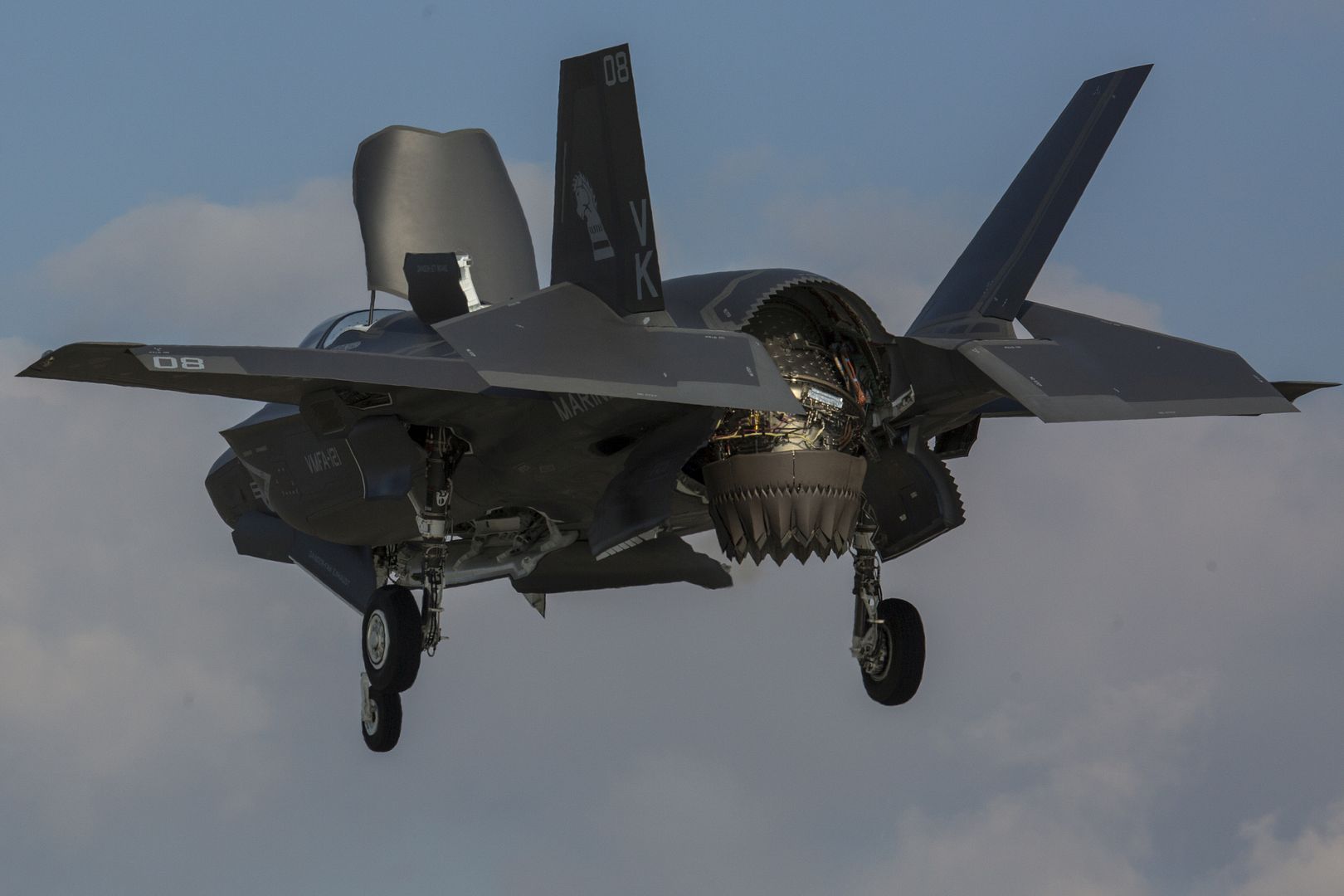
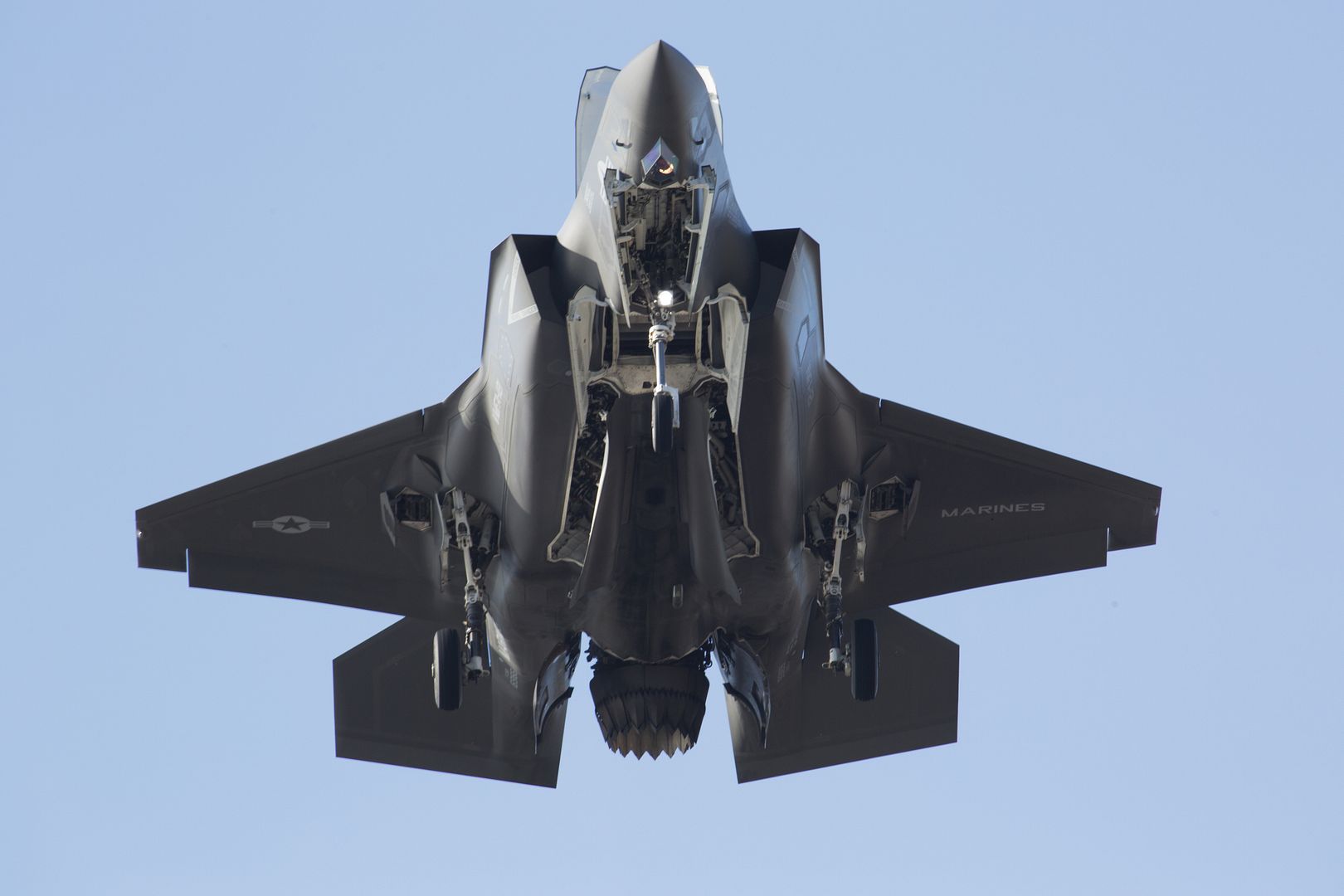
A U.S. Marine Corps AV-8B Harrier with Marine Attack Squadron (VMA) 311, taxis to its hangar at Marine Corps Air Station Iwakuni, Japan, Feb. 3, 2017. VMA-311 is forward deployed to MCAS Iwakuni on a six month rotation with the Unit Deployment Program to improve operational capabilities through training in the Pacific region. (U.S. Marine Corps photo by Lance Cpl. Joseph Abrego)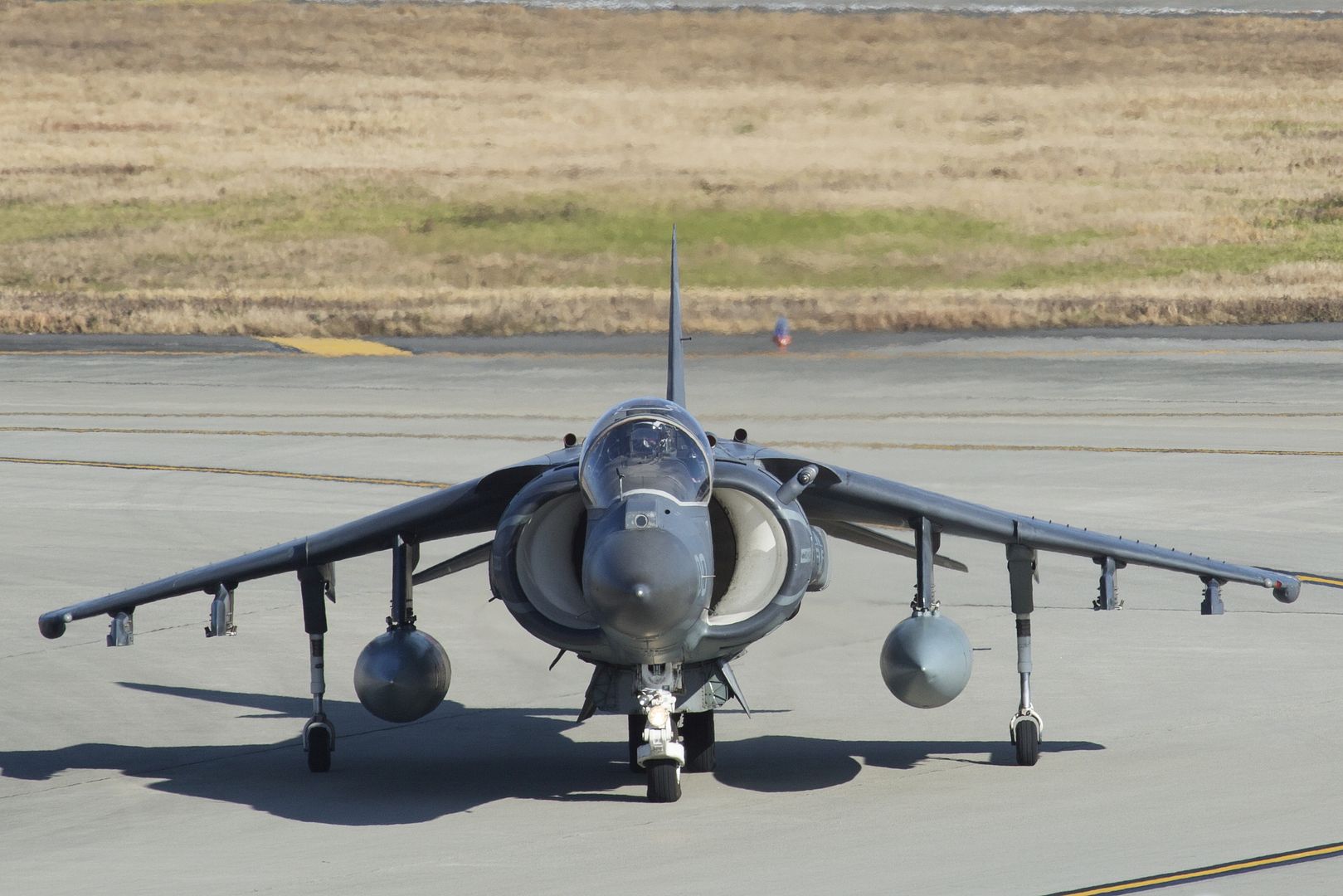
An F/A-18D Hornet with Marine All Weather Fighter Attack Squadron (VMFA) 225 takes off during exercise Cope North at Andersen Air Force Base, Guam, Feb. 3, 2017. Marines trained with the Royal Australian Air Force and Japan Air Self-Defense Force supporting theater security, focusing on dissimilar air combat training and large force employment. (U.S. Marine Corps photo by Cpl. Nathan Wicks)
NELLIS AIR FORCE BASE, Nev. -- She?s more than 60 feet long and stands about two stories tall. She?s been many different colors -- she?s currently grey -- and shades of her past ?lives? can still be seen all over her body.
A lady never reveals her age or speaks about her past, but aircraft 83-3014 reached 10,000 flight hours during a sortie at Nellis Air Force Base, Nevada, Jan. 25.
The aircraft, an F-15C Eagle, is the first F-15 assigned to a Nellis AFB unit to hit the 10,000 hour milestone.
?I?ve probably put in about 80 hours with her over the last two years and she?s just a great jet,? said Maj. Cody Clark, 433rd Weapons Squadron pilot and aircraft 83-3014?s milestone sortie pilot. ?It?s a testament to the maintenance personnel that they could keep a jet performing for so long at the level at which she does.?
The aircraft came to Nellis AFB in July 2010 from Langley AFB, Virginia, and flew here as an aggressor -- a ?Red? force aircraft that replicates tactics and techniques of potential adversaries against ?Blue? forces -- before being transferred to the 757th Aircraft Maintenance Squadron?s Eagle Aircraft Maintenance Unit and flown in support of U.S. Air Force Weapons School and 422nd Test and Evaluation Squadron operations.
While stationed at Langley AFB, the aircraft deployed multiple times and was flown in operations Southern Watch and Northern Watch.
The F-15?s initial operational requirement was for a service life of 4,000 hours. Following successful airframe structural testing, the F-15C was extended to an 8,000-hour service life limit and was extended further because of the need for air superiority.
?To get to 10,000 flight hours means probably a couple hundred thousand maintenance hours have been put in,? said Master Sgt. Joseph Romero, Eagle AMU lead production superintendent. ?So for over 30 years, day-in and day-out, maintainers have done everything asked of them and more to get the aircraft to this point.
?Normally, 10,000 flight hours is only seen within combat-coded units,? Romero said. ?Everybody in Eagle AMU has touched this aircraft, so if it wasn?t for their work, and the work of M1 Support Services, this jet would never have reached 10,000 hours.?
The next closest F-15 to 10,000 hours at Nellis AFB is also housed at Eagle AMU and currently has a little more than 9,000 hours. But with each of the unit?s F-15s currently averaging 120 hours a year, the aircraft may not reach the 10,000-hour milestone.
Although the Air Force?s F-15 fleet is more than 30 years old, only a handful of the C/D/E aircraft are believed to be in the 10,000 hour club.
?Even though she?s old she?s been continually improved over the years to keep up with emerging threats,? Clark said. ?A new aircraft that rolls off the line might have that ?new jet? smell, but it?s not much different per say because this aircraft is so well maintained.
?As new enemy airframes roll off the line, I?d still put her up against them any day.?
In true Nellis AFB fashion, aircraft 83-3014, her pilot, and her crew celebrated the milestone by ? getting her ready for her next sortie about two hours after she hit 10,000.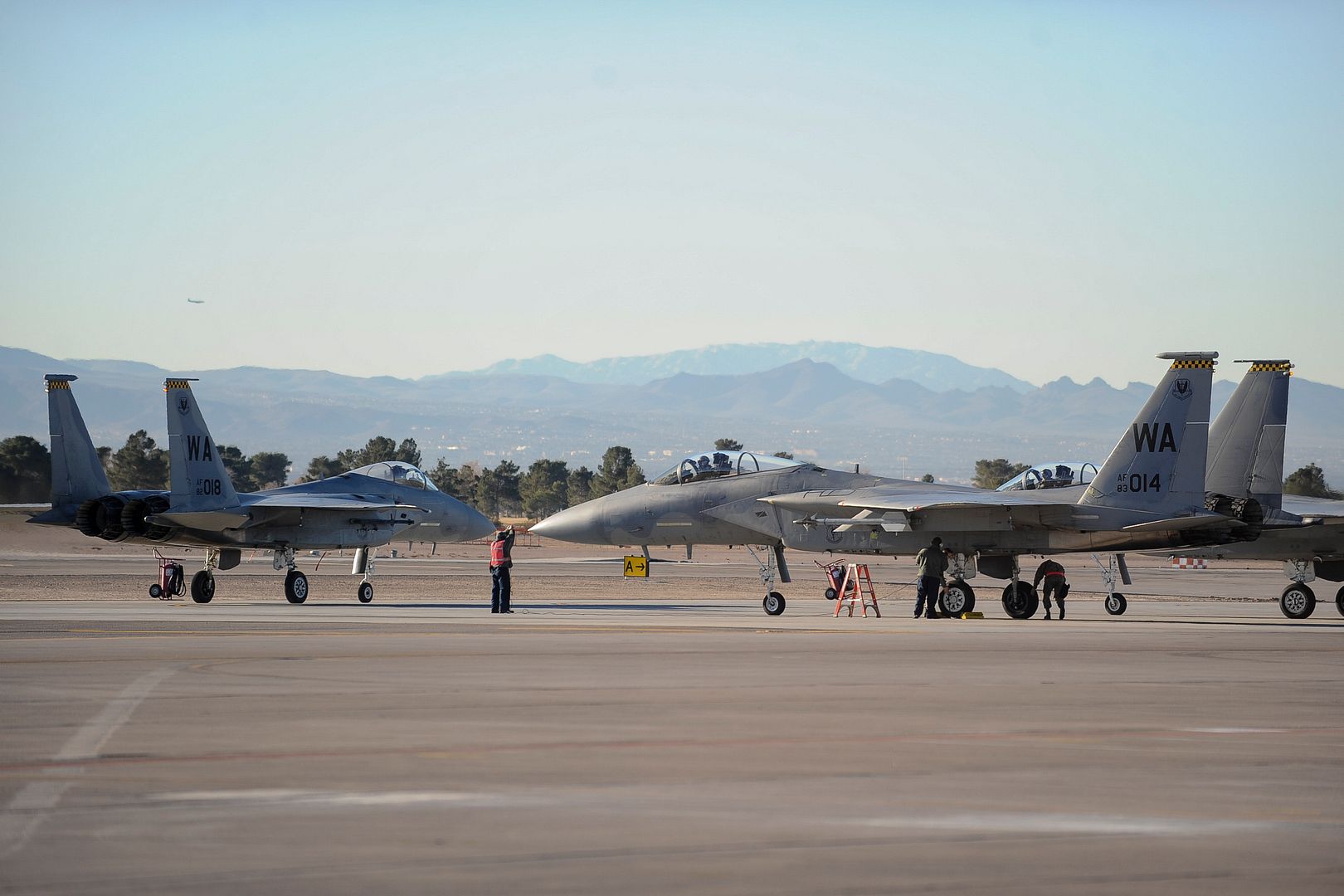
SHAW AIR FORCE BASE, S.C. -- As preparations begin across the globe for the 2017 air show season, an elite team of Airmen assigned to Shaw Air Force Base, South Carolina are hard at work getting ready for their new year debut.
The F-16 Viper Demonstration Team is one of three single aircraft performance teams in the Air Force preparing for the season by training and certifying new maintainers and the new demo pilot. Part of the selection process includes four certification flights approved by the 20th Operations Group commander, 20th Fighter Wing commander, 9th Air Force commander, and Air Combat Command commander. The final steps of certification were completed at Joint Base Langley-Eustis, Va., Feb. 1, 2016.
Gen. Hawk Carlisle, commander of Air Combat Command, said he was impressed with the team's show, and encouraged them to not only enjoy the experience, but to represent the U.S. Air Force well before the eyes of the world.
The new pilot for the team is Capt. John ?Rain? Waters from Peachtree City, Georgia. Waters is a veteran pilot with more than 2,500 hours in a military aircraft and 180 combat missions in support of Operation Iraqi Freedom and Inherent Resolve.
Waters is taking over from Maj. Craig ?Rocket? Baker, the former F-16 Viper Demonstration Team pilot, who started with the team in 2015 following the shutdown of all single ship demonstration teams in 2012. Demo pilots serve two year tours on their respective teams.
?The certification is important because it gives us the validation that we know what we?re doing and that we have the best Airmen on the team as possible to go out and to represent the Air Force,? said Waters.
According to the Air Force Recruiting Service, 20 years ago 47 percent of children could name someone they knew who served in the military, today only 16 percent of children are able to do that, and the Viper Demo Team is hoping to increase that number.
?The most rewarding part of the job is being able to go to the schools and to interact with the public and show them what the Air Force can do,? said Hall. ?There is a large part of the population that doesn?t know about the military, and it?s our job to go out there and share our experiences.?
Fulfilling the teams mission of inspire the future generation of pilots and maintainers by demonstrating the combat capabilities of the F-16, the demo team, performs approximately 21 air shows a year across the United States and Canada.
The F-16 is the Air Forces premier multi-role fighter aircraft capable of flying up to twice the speed of sound. Its General Electric F-129 engine can produce up to 27,000 pounds of thrust.
Following the certification process, the demo team is scheduled to go to the Heritage Flight Conference at Davis-Monthan AFB, Arizona, where Waters will be certified to fly alongside World War II and Vietnam era aircraft, known as a heritage flight.
?Knowing that I can be a part of a team that can function at a high level,? said Waters, ?learn through adversity, and ultimately excel is inspiring and humbling to be a part of.?
In 2016, air shows were considered the number one recruiting asset for the Air Force, and by having highly dedicated and motivated Airmen on these teams to spread their knowledge, the Air Force will be able to stay as the world?s most dominant power in air, space, and cyberspace.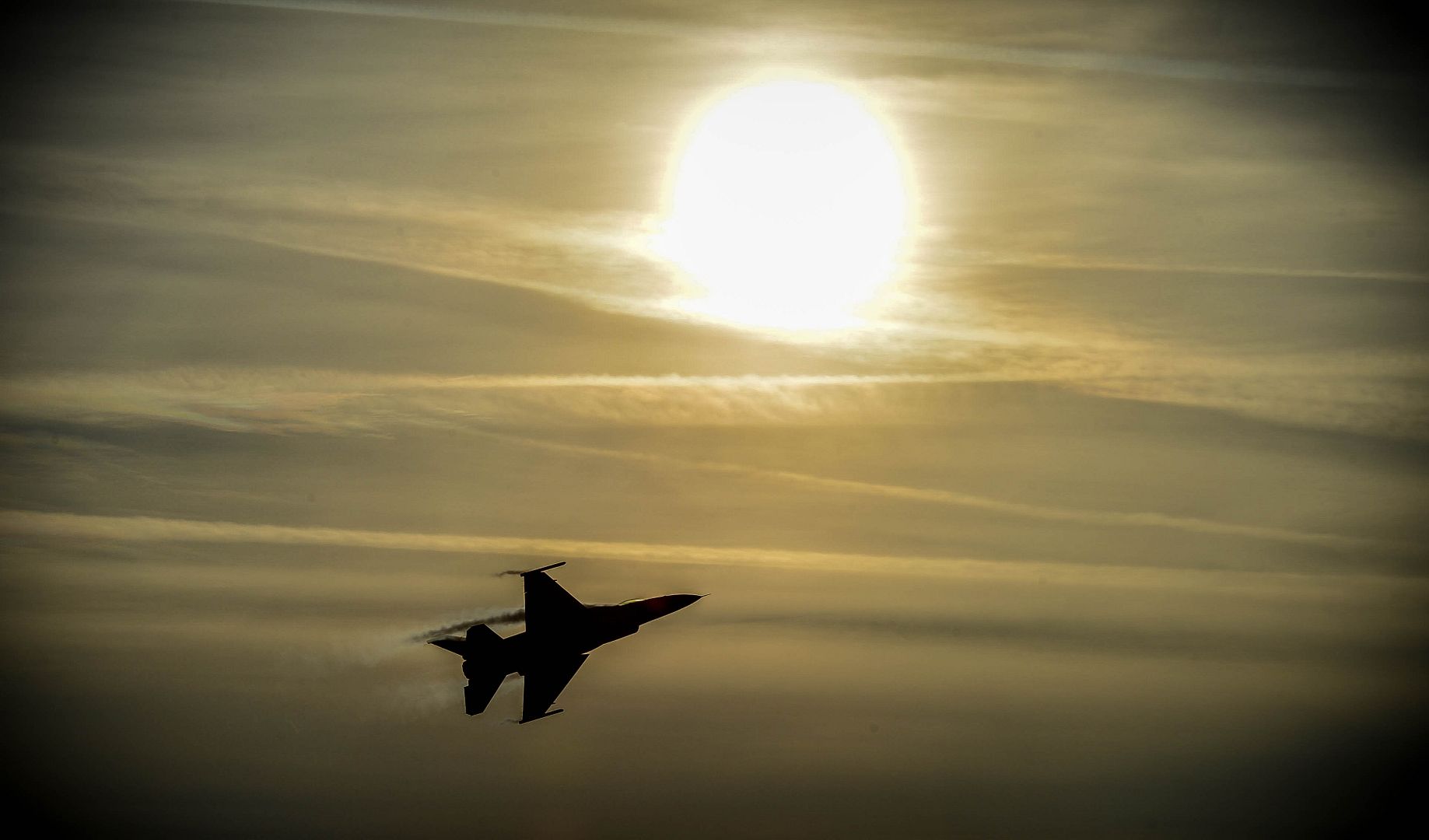
Capt. Doug Verissimo, commanding officer of the aircraft carrier USS Carl Vinson (CVN 70), conducts pre-flight checks in an F/A 18E Super Hornet from the Kestrels of Strike Fighter Squadron (VFA) 137. The Carl Vinson Carrier Strike Group is on a western Pacific deployment as part of the U.S. Pacific Fleet-led initiative to extend the command and control functions of U.S. 3rd fleet. U.S. Navy photo by Mass Communication Specialist 3rd Class Matt Brown (Released)
RAAF personnel at Nellis Air Force Base are receiving training opportunities that can't be replicated anywhere else, and learning alongside colleagues from the United States Air Force, UNITED STATES NAVY, and Royal Air Force. Exercise Red Flag 17-1 will conclude on 10 February.
An E-7A Wedgetail of the Royal Australian Air Force (RAAF) on the flightline at Nellis Air Force Base during Exercise Red Flag 17-1.
A pair of F-16C Fighting Falcons from the United States Air Force (USAF) 64th Aggressor Squadron returning to Nellis Air Force Base during Exercise Red Flag 17-1.
-
 Main AdminCV-22 Osprey tilt-rotor aircraft assigned to the 8th Special Operations Squadron, with Hurlburt Field, and 20th SOS, with Cannon Air Force Base N.M., fly in formation over Hurlburt Field, Fla., Feb. 3, 2017. This training mission was the first time in Air Force history that ten CV-22's flew in formation simultaneously. (U.S. Air Force photo by Airman Dennis Spain)
Main AdminCV-22 Osprey tilt-rotor aircraft assigned to the 8th Special Operations Squadron, with Hurlburt Field, and 20th SOS, with Cannon Air Force Base N.M., fly in formation over Hurlburt Field, Fla., Feb. 3, 2017. This training mission was the first time in Air Force history that ten CV-22's flew in formation simultaneously. (U.S. Air Force photo by Airman Dennis Spain)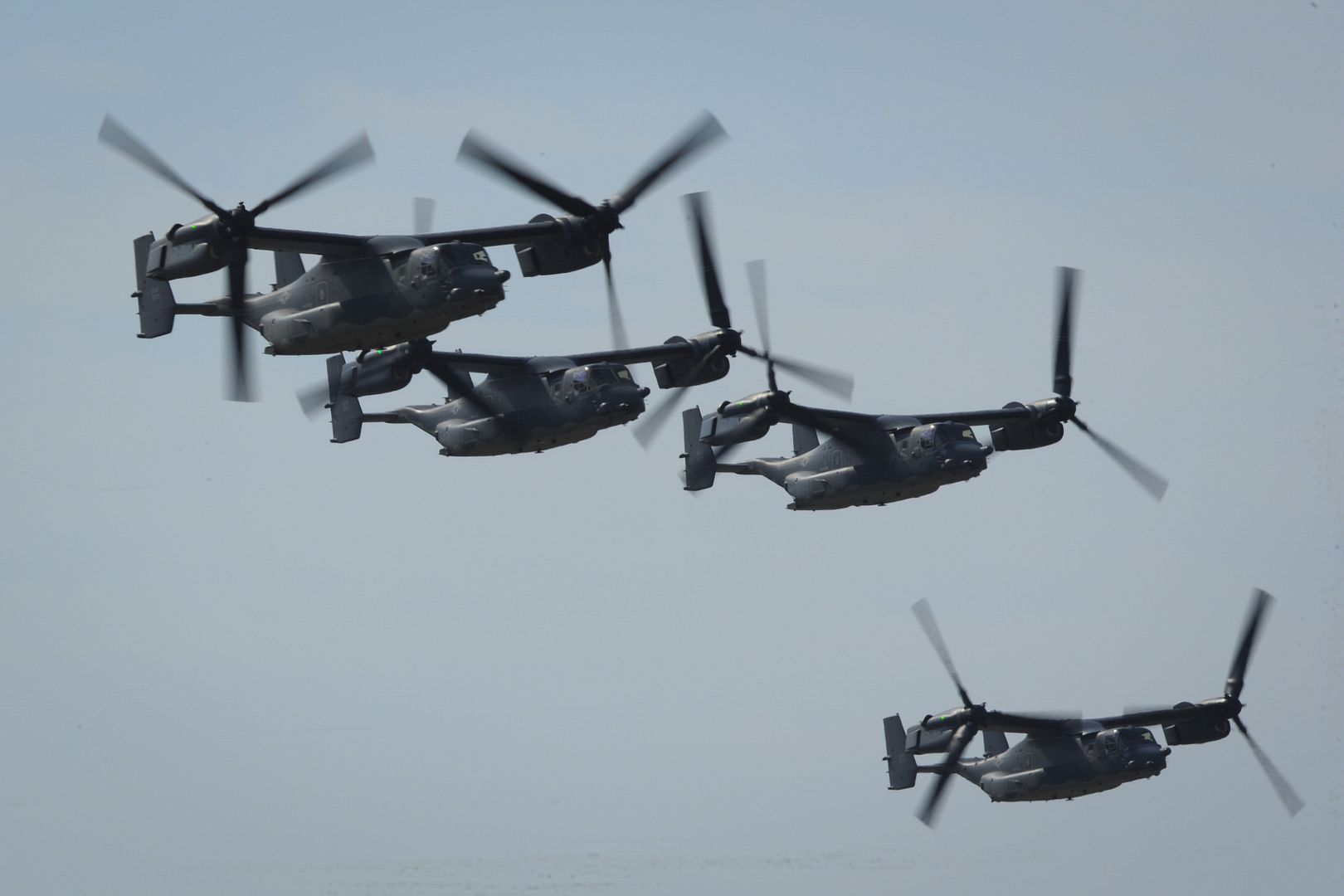
Three F-16 Fighting Falcons fly in formation after receiving fuel from a KC-135 Stratotanker assigned to McConnell Air Force Base, Kan., Feb. 3, 2017, en route to Houston, Texas. The U.S. Air Force Air Demonstration Squadron, the Thunderbirds, will be performing a flyover during the 2017 Super Bowl. (U.S. Air Force photo/Airman 1st Class Erin McClellan)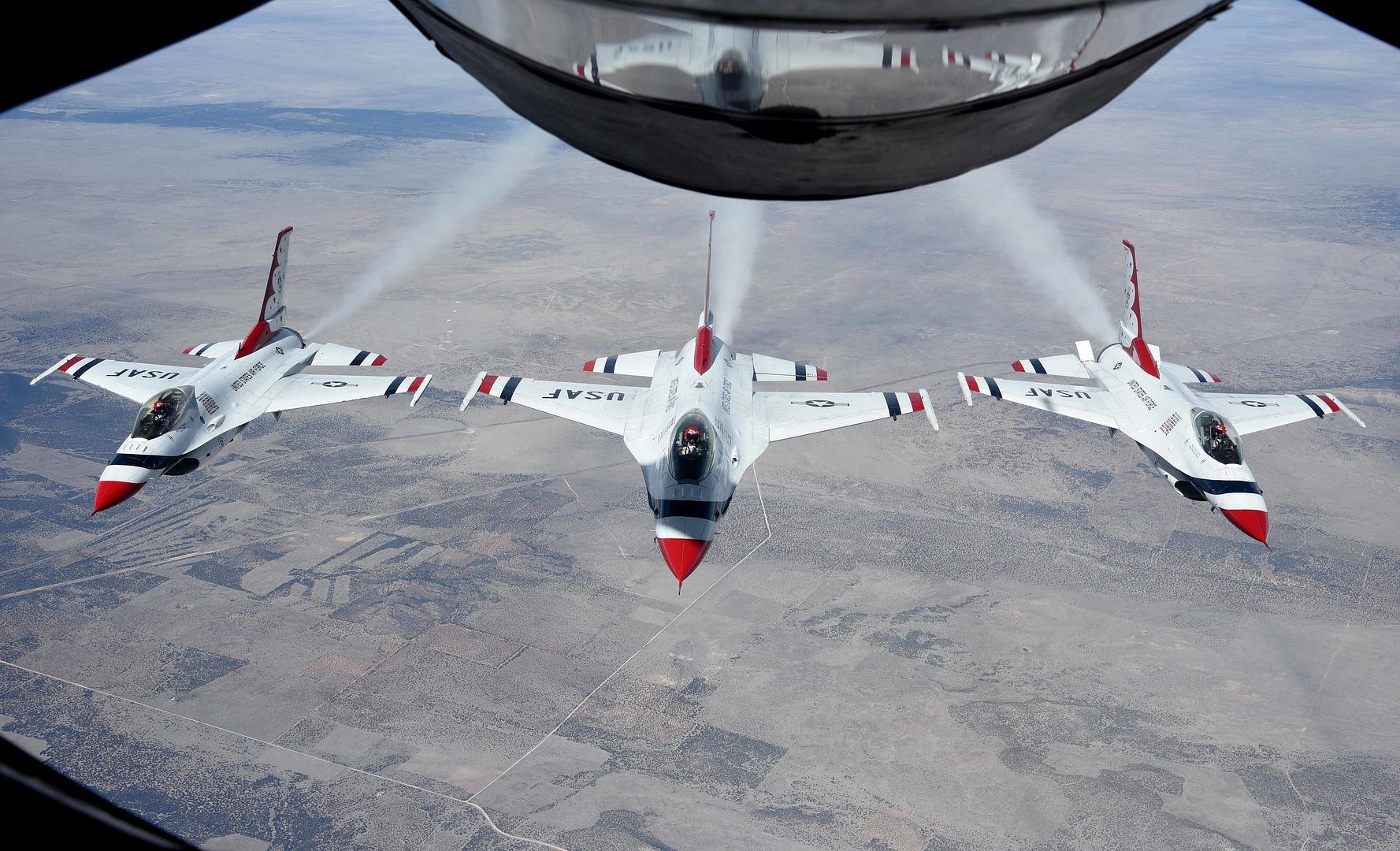
NELLIS AIR FORCE BASE, Nev. -- After eight days ?at war? the F-35A Lightning II is proving to be an invaluable asset during Red Flag 17-01, the Air Force?s premier air combat exercise held at Nellis Air Force Base, Nevada.
The F-35A is a fifth-generation, multi-role stealth fighter designed to gather, fuse, and distribute more information than any other fighter in history.
Lt. Col. George Watkins, an F-35 pilot and 34th Fighter Squadron commander, said flying the F-35A in combat ?feels like air dominance.?
?I?ve had four of my (F-35A) pilots come back from missions, guys who have flown the F-15 and F-16 at Red Flag for years, and tell me ?This is amazing. I?ve never had this much situational awareness while I?m in the air. I know who?s who, I know who?s being threatened, and I know where I need to go next.? You just don?t have all of that information at once in fourth-generation platform,? Watkins said.
Pilots and maintainers from the 388th and 419th Fighter Wings at Hill AFB, Utah, deployed the F-35A Lightning II here Jan. 20 and began flying in the exercise Jan. 23.
Since the exercise began, Hill?s Airmen have generated 110 sorties, including their first 10-jet F-35A sortie Jan. 30 and turned around and launched eight jets that afternoon. They have not lost a single sortie to a maintenance issue and have a 92 percent mission-capable rate, said 1st Lt. Devin Ferguson, assistant officer in charge of the 34th Aircraft Maintenance Unit. Legacy aircraft average 70 to 85 percent mission-capable.
Red Flag is designed to provide Airmen with realistic combat scenarios and increase survivability in real combat. The three-week exercise pits ?Blue Air? (friendly) against ?Red Air? (enemy) in an all-out air war featuring air-to-air, air-to-ground, search and rescue, and special forces elements. Planners say this is rigorous training for even proven weapons systems and a good test for the F-35A, still in the initial stages of operational capability.
Flying alongside F-22 Raptors, as well as a variety of U.S. and coalition fourth-generation aircraft from Australia and the United Kingdom air forces, the capabilities of the F-35A are being put to the test with robust combat scenarios that focus on the jet?s core capabilities ? air interdiction, suppression of enemy air defense.
?The first day we were here, we flew defensive counter-air and we didn?t lose a single friendly aircraft,? Watkins said. ?That?s unheard of.?
Because of the aircraft?s increased capability, exercise planners have increased the complexity of the scenarios for the ?Blue Air? players.
?The number of adversaries has increased, their skill level has increased, the sophistication of the surface-to-air threat has increased,? Watkins said.
Facing highly sophisticated surface-to-air threats is a challenge for fourth-generation aircraft. With the F-35A, pilots can gather and fuse data from a multitude of sources and use the jet?s advanced sensors to precisely pinpoint a threat. Then they can take it out with one 2,000 pound bomb. It would be impossible for a fourth-generation aircraft to survive such a mission, according to Lt. Col. Dave DeAngelis, F-35 pilot and commander of the 419th Operations Group, Detachment 1.
While the F-35As eliminate the advanced ground threats, F-22s are dominating air threats and the pair are clearing the way for fourth-generation assets to operate.
?It is a step up and a look into the future for us,? said Royal Australian Air Force Group Captain Stuart Bellingham, Air Operations Center director at Red Flag. ?It?s really exciting to work alongside the F-35A and the F-22 to understand how we best integrate that into a high end fight in the training scenarios that Red Flag provides.?
The first operational F-35As arrived at Hill AFB in October 2015. The base will eventually be home to three operational F-35 fighter squadrons with a total of 78 aircraft by the end of 2019. The active duty 388th FW and Air Force Reserve 419th FW will fly and maintain the Air Force?s newest fighter aircraft in a Total Force partnership, which capitalizes on the strength of both components.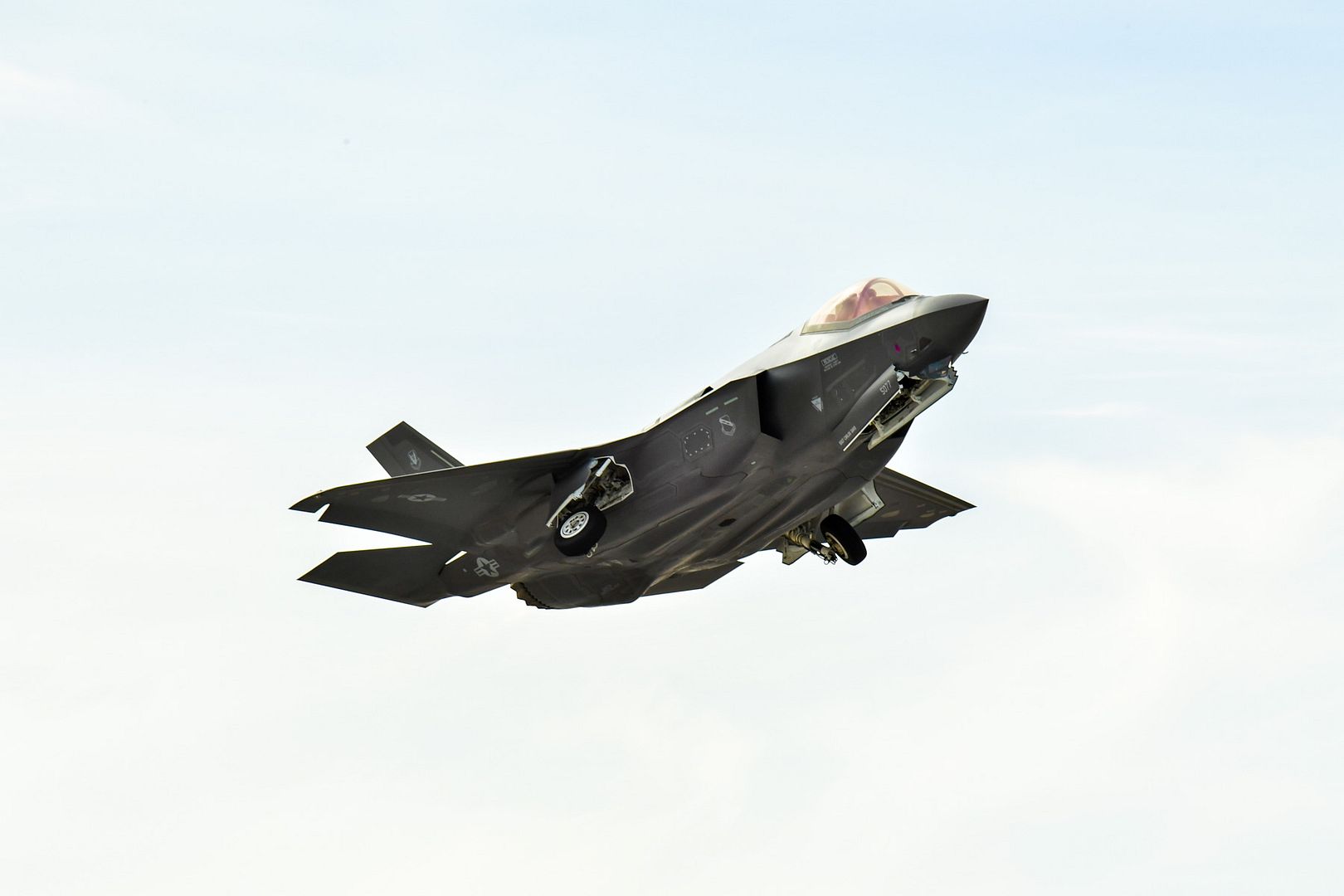
February 3, 2017 Montr?al Business Aircraft, Bombardier Inc., Press Release
Bombardier Business Aircraft announced today that, since 2000, Global aircraft have achieved more than 2,500 takeoffs and landings at Aspen?s challenging airport. With their high-performance, ultra-luxurious interior, and exceptionally smooth ride, Bombardier?s Global aircraft are ideally suited to operate in and out of the rugged terrain surrounding Aspen/Snowmass, a popular winter destination offering some of the world?s premier downhill skiing.
Delivering a steep approach capability like no other aircraft in their class, Global business jets demonstrate renowned agility and deft landing capabilities at Aspen/Pitkin County Airport, which is nestled among Rocky Mountain peaks at approximately 7,820 feet (2,384 m) above sea level. The Global 6000 aircraft is the largest purpose-built business jet capable of smoothly mastering the high altitude Aspen airfield.
?For outdoor and ski enthusiasts, there is no better way to spend a vacation than taking in the beautiful mountain views of Aspen,? said Peter Likoray, Senior Vice President, Sales and Marketing, Bombardier Business Aircraft. ?With their impressive performance, Bombardier?s Global family of aircraft can operate in and out of Aspen?s airport effortlessly, all while delivering the smoothest ride possible.?
Bombardier?s flagship Global family of aircraft offer detailed and beautifully equipped cabins, impressive performance, and cutting-edge technology that create a perfect blend of style and substance. The ultimate in passenger comfort is delivered through an advanced wing design that optimizes speed, range, and control, contributing to enhanced passenger comfort and an exceptionally smooth ride. Global aircraft also let passengers stay connected and entertained at all times during their travel through the latest Ka-band technology, the industry?s fastest inflight internet connectivity worldwide.**
Global 5000 Aircraft: By combining expert engineering and superior craftsmanship, every detail on the Global 5000 aircraft has been meticulously designed to deliver an exceptional private jet experience.
The Global 5000 aircraft features Ka-band technology, the fastest inflight internet connectivity worldwide** to keep passengers connected in a highly productive working environment.
Boasting impressive range, speed and reliability that blend perfectly to offer outstanding field performance, the Global 5000 business jet can effortlessly access some of the world?s most challenging airports, including Aspen and London City. With a range capability of 5,200 NM (9,630 km)* it can connect New York to Moscow and London to Seoul non-stop.*
Global 6000 Aircraft: The Global 6000 business jet features an intelligently crafted interior that balances luxury with productivity. The first aircraft to offer Ka-band technology, the Global 6000 business jet delivers the industry?s fastest inflight internet connectivity worldwide** to keep passengers connected at all times**.
Elevating the customer experience at every possible level, the Global 6000 aircraft?s advanced wing design promotes a smooth and restful flight while the circulation of 100 per cent fresh air ensures passengers stay revitalized.
No other business jet in the ultra-long-range segment today combines the high-speed range capability and mission flexibility delivered by the Global 6000 aircraft. Providing the ultimate in cabin comfort, this impressive jet can travel 6,000 NM (11,112 km) at Mach 0.85 with eight passengers,* and it can link Moscow to Los Angeles non-stop with eight passengers and four crew members.
-
 Main AdminPHILIPPINE SEA (Feb. 4, 2017) An AV-8B Harrier, assigned to the Tomcats of Marine Attack Squadron (VMA) 311, lands aboard amphibious assault ship USS Bonhomme Richard (LHD 6). Bonhomme Richard is conducting unit-level training to ensure warfighting readiness in preparation for a routine patrol in support of security and stability in the Indo-Asia Pacific region. (U.S. Navy photo by Mass Communication Specialist 2nd Class Diana Quinlan/Released)
Main AdminPHILIPPINE SEA (Feb. 4, 2017) An AV-8B Harrier, assigned to the Tomcats of Marine Attack Squadron (VMA) 311, lands aboard amphibious assault ship USS Bonhomme Richard (LHD 6). Bonhomme Richard is conducting unit-level training to ensure warfighting readiness in preparation for a routine patrol in support of security and stability in the Indo-Asia Pacific region. (U.S. Navy photo by Mass Communication Specialist 2nd Class Diana Quinlan/Released)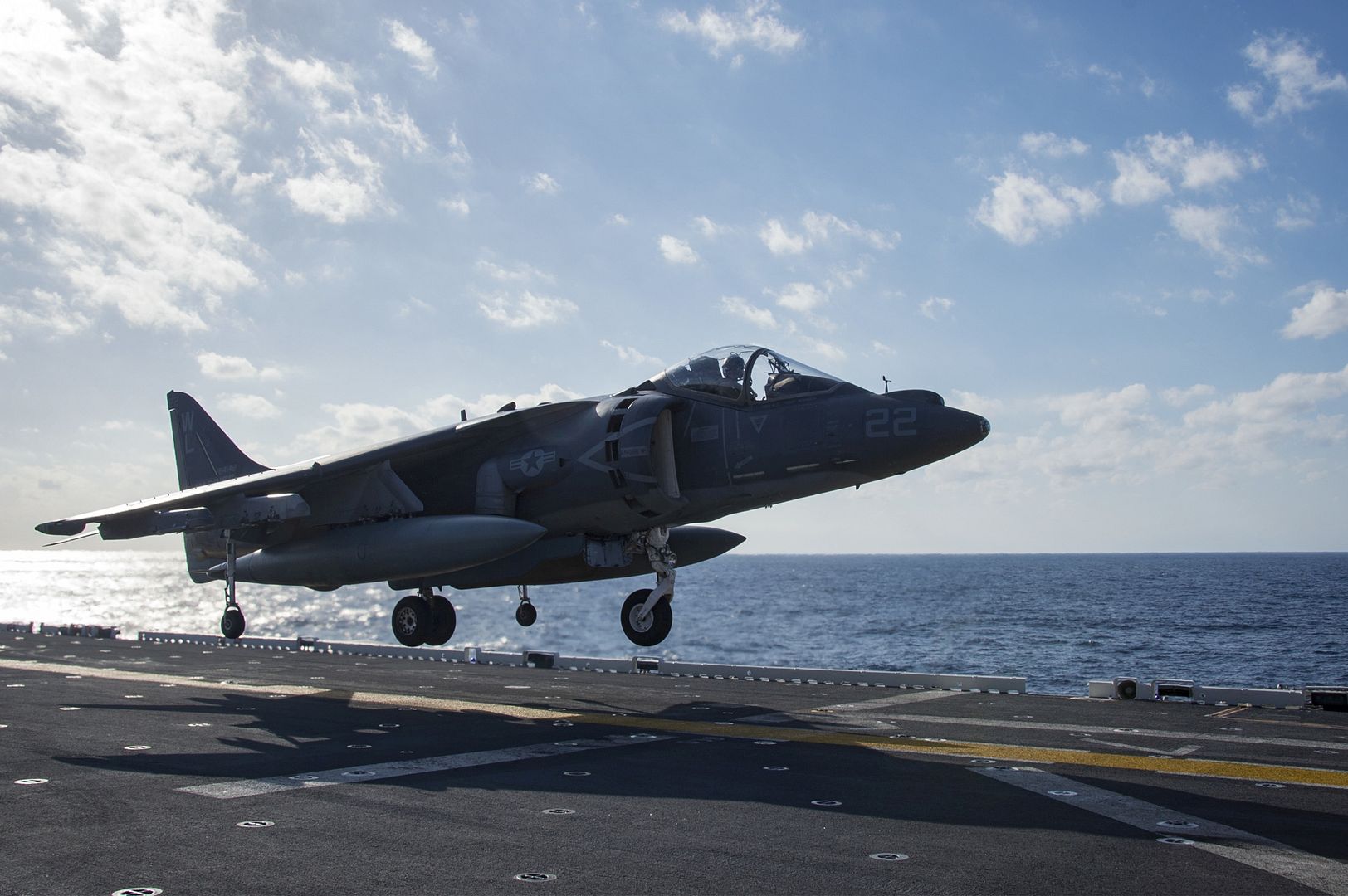
An F-16 Fighting Falcon sits on the flightline at sunset at the 407th Air Expeditionary Group Feb. 4, 2017. The F-16 is part of the 134th Expeditionary Fighter Squadron, supporting Operation Inherent Resolve in the fight against the Islamic State of Iraq and the Levant. (U.S. Air Force photo/Master Sgt. Benjamin Wilson)(Released)
ANTARCTICA
02.05.2017
Photo by Staff Sgt. Laura Montgomery
145th Airlift Wing, North Carolina Air National Guard
(Source: UK Ministry of Defence; issued Feb 02, 2017)
The RAF are continuing to take the fight to Daesh in Iraq and Syria.
Summary
-- Monday 30 January ? Tornados engaged two groups of terrorists south of Mosul, while a Reaper destroyed two vehicles in western Iraq.
-- Wednesday 1 February ? Typhoons struck a Daesh-held building to the west of Mosul.
Detail
With eastern Mosul liberated from Daesh, Iraqi forces have conducted operations along the approaches to the western half of the city, supported by coalition aircraft.
A pair of Royal Air Force Tornados assisted Iraqi troops on Monday 30 January, some ten miles south of Mosul, on the west bank of the Tigris. The Tornados spotted machine-gun fire being directed at an Iraqi unit, and on investigating were able to identify a number of Daesh terrorists divided into three small groups. The Tornados used a pair of Paveway IV guided bombs to kill the members of two of these groups, while an attack by another coalition aircraft accounted for the third.
In western Iraq, some forty miles south-west of the Al Asad airfield, a Reaper remotely piloted aircraft meanwhile tracked two trucks carrying several Daesh fighters. Both vehicles were struck in succession by Hellfires from the Reaper, and a series of secondary explosions from the vehicles? cargo ensued for several minutes afterwards.
While other RAF aircraft conducted reconnaissance patrols to assess Daesh activity in Syria and Iraq, Typhoons were tasked on Wednesday 1 February with the destruction of a building some twenty miles west of Mosul which intelligence had identified was being used by Daesh as a staging post for the movement of extremists and equipment.
A single Paveway IV sufficed to demolish the building once a very careful check had been made by the aircrew for any civilians who might be in the vicinity of the target.
(ends)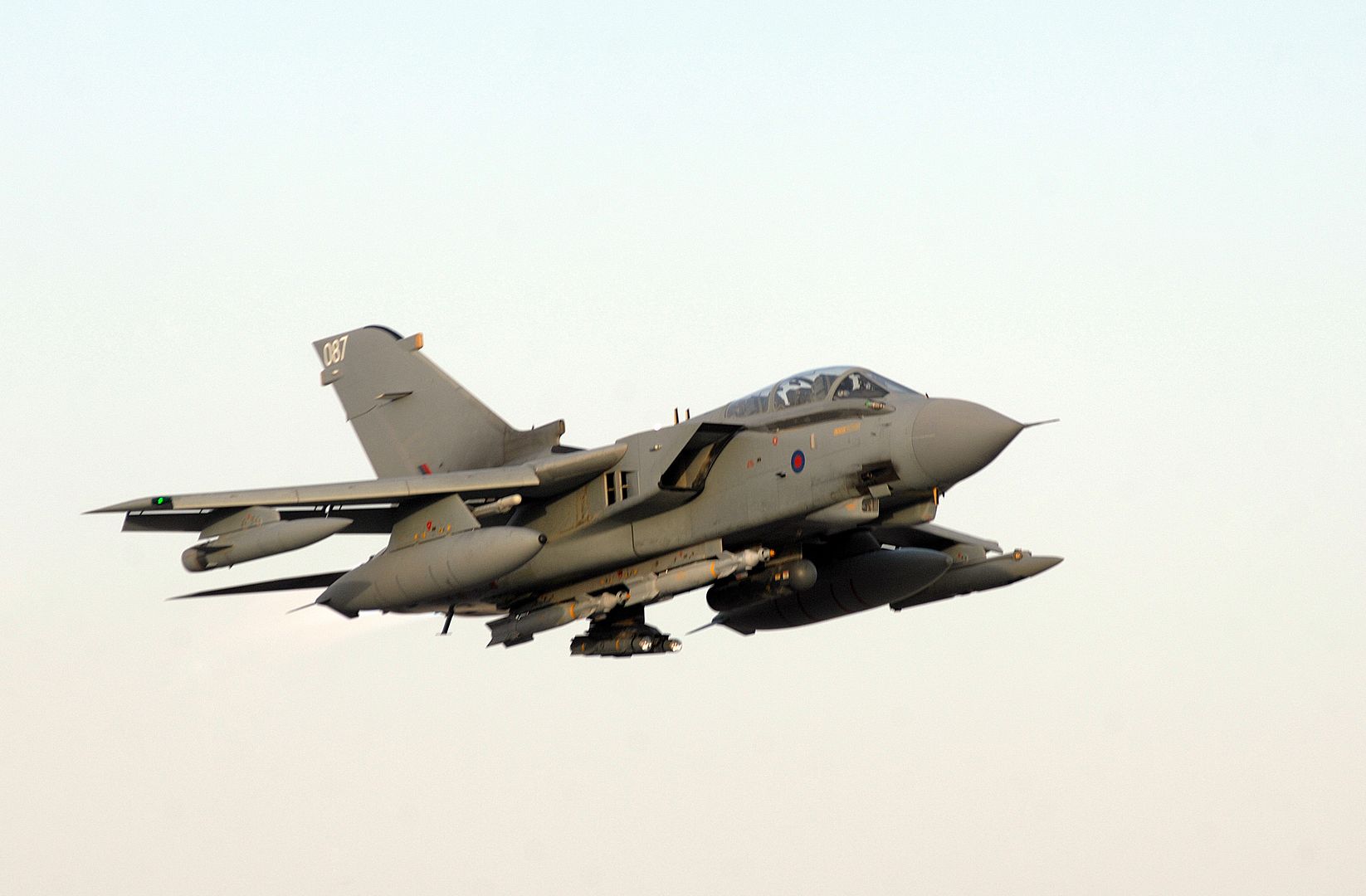
-
 Main AdminPHILIPPINE SEA (Feb. 5, 2017) Marines, assigned to the Tomcats of Marine Attack Squadron (VMA) 311, secure an AV-8B Harrier to the flight deck of amphibious assault ship USS Bonhomme Richard (LHD 6). Bonhomme Richard is conducting unit-level training to ensure warfighting readiness in preparation for a routine patrol in support of security and stability in the Indo-Asia Pacific region. (U.S. Navy photo by Mass Communication Specialist Seaman Apprentice Jesse Marquez Magallanes/Released)
Main AdminPHILIPPINE SEA (Feb. 5, 2017) Marines, assigned to the Tomcats of Marine Attack Squadron (VMA) 311, secure an AV-8B Harrier to the flight deck of amphibious assault ship USS Bonhomme Richard (LHD 6). Bonhomme Richard is conducting unit-level training to ensure warfighting readiness in preparation for a routine patrol in support of security and stability in the Indo-Asia Pacific region. (U.S. Navy photo by Mass Communication Specialist Seaman Apprentice Jesse Marquez Magallanes/Released)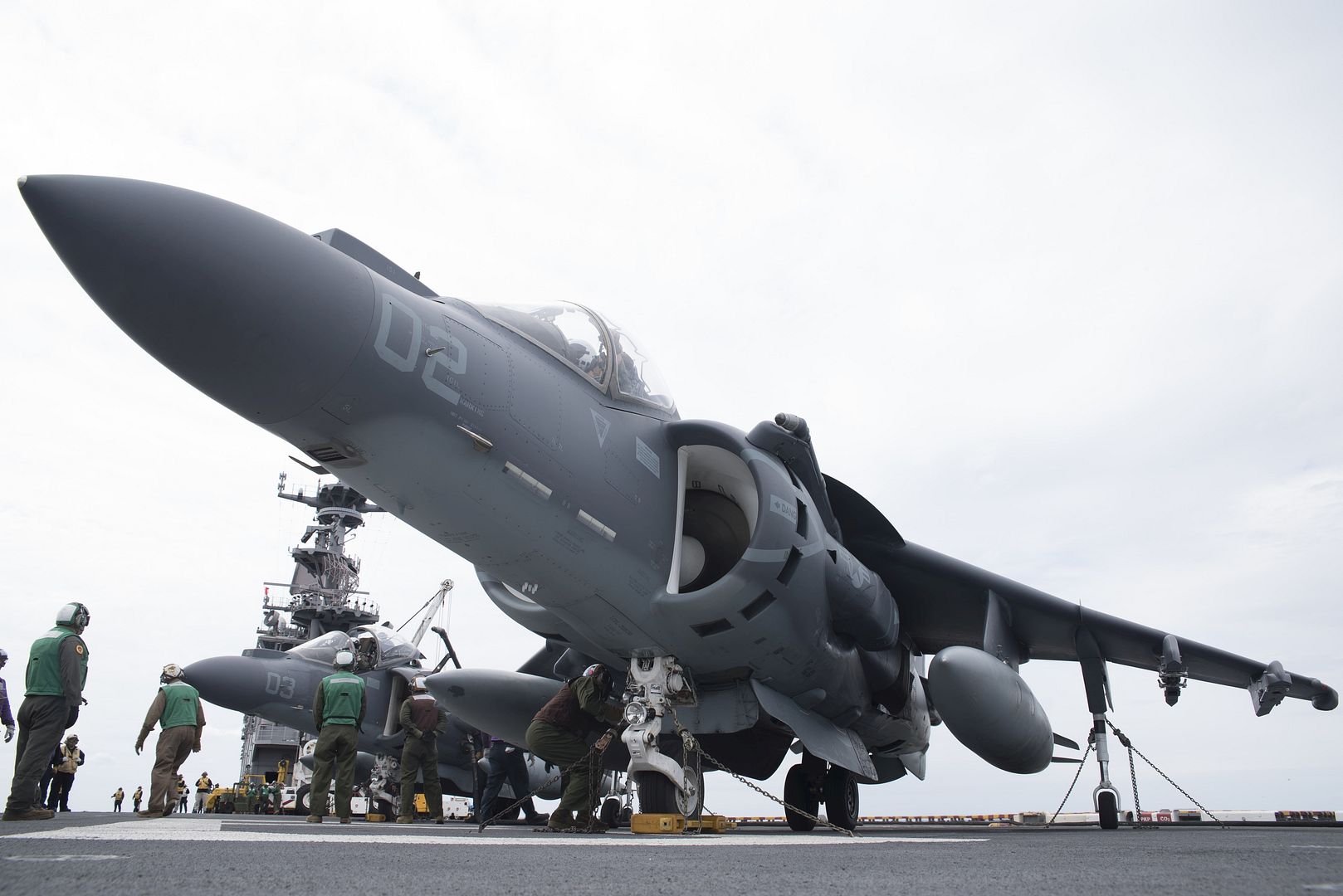
Air Force One aircrew wait for stairs on the runway at MacDill, AFB, FL, Feb. 6, 2017. President Trump is visiting with senior military leaders to discuss Central Command and Special Operations Command current operations. (DoD photo by D. Myles Cullen/Released)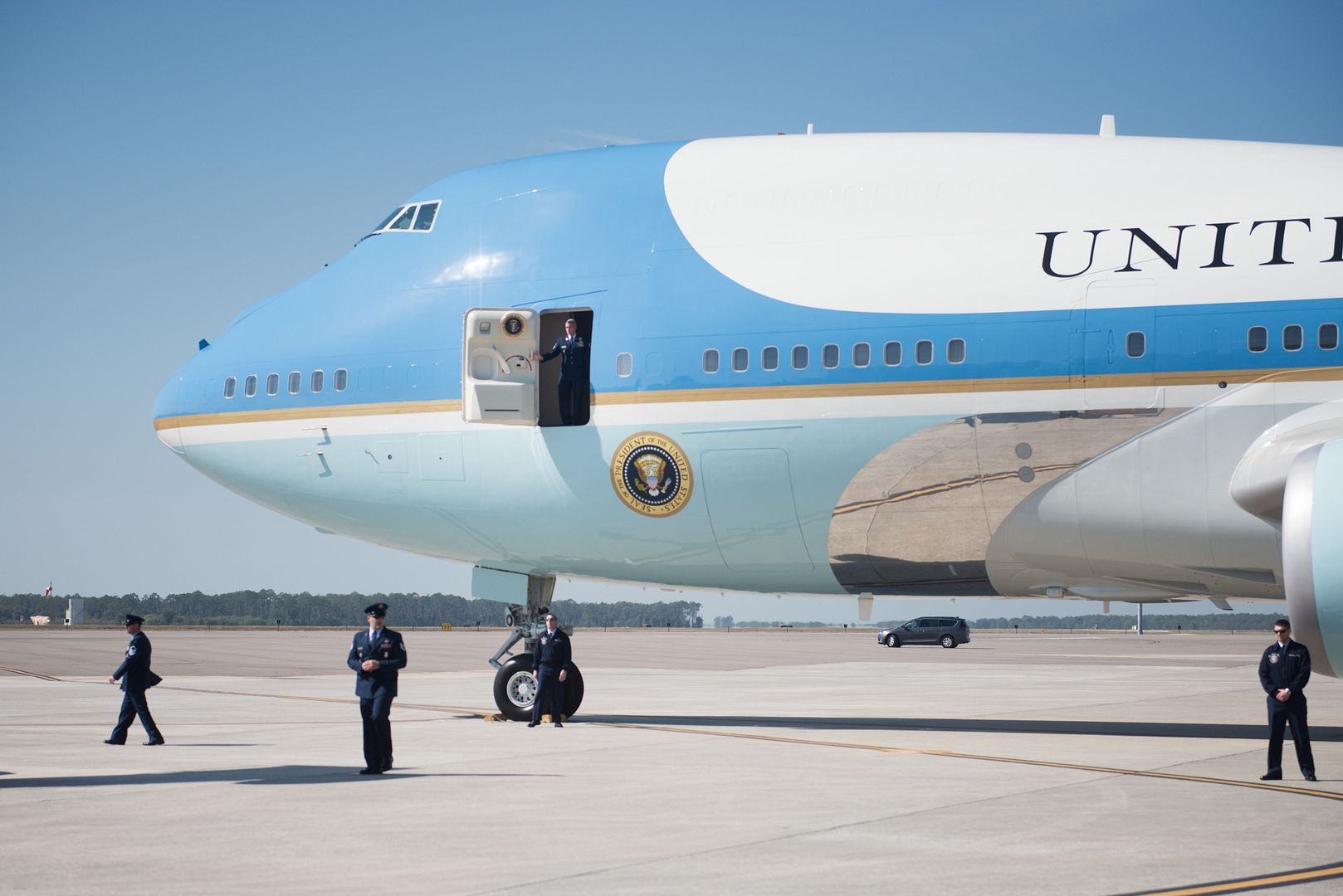
An F-35A Lightning II aircraft piloted by Lt. Col. Yosef Morris, 388th Fighter Wing, taxis during Red Flag 17-1, Nellis Air Force Base, Nevada, Feb. 3, 2017. Morris flew the 2,000th sortie during the Air Force's premier air-to-air combat training exercise. This is the first deployment of the F-35A to a Red Flag. Maintainers and pilots from Hill Air Force Base's 388th and 419th Fighter Wings deployed the fifth-generation fighter to Nellis AFB Jan. 20. The exercise provides aircrews the experience of multiple, intensive air combat sorties in the safety of a training environment. (U.S. Air Force photo/R. Nial Bradshaw))
USS JOHN PAUL JONES (DDG 53), Feb. 6, 2017? The USS JOHN PAUL JONES (DDG 53), supported by the U.S. Navy, Missile Defense Agency and Lockheed Martin (NYSE: LMT), used the latest evolution of its Aegis Combat System to detect, track, launch a missile and successfully intercept a Medium Range Ballistic Missile target.
This exercise marked the first shipboard demonstration of the Aegis Baseline 9.C2 (BMD 5.1) Weapon System against a ballistic missile threat with increased battle space in support of the U.S. Phased Adaptive Approach to protect Europe from ballistic missile attack.
The test, called Standard Missile-3 Cooperative Development (SCD) Flight Test Standard Missile (FTM) ? 01 (SFTM-01), demonstrated the integrated capabilities of the Aegis Weapon System and how it has continually evolved to counter ballistic missile threats. SFTM-01 is a developmental test that supports BMD 5.1 certification, currently scheduled in 2018.
?Aegis continues to help sailors pace the threat thanks to upgrades we call baselines that leverage our extensive Common Source Library. With each baseline, Lockheed Martin brings advanced missile defense capabilities and enhanced integration with other systems external to the ship,? said Paul Klammer, director, Aegis BMD. ?This exercise included a series of tests to verify the operation of the Aegis BMD 5.1 Weapon System aboard ship. We?re proud of the Navy and Missile Defense Agency working together with our Lockheed Martin engineers to make this complicated test a success.?
Aegis BMD 5.1 is the third generation of Aegis BMD capability and delivering this advanced baseline to the Navy and the Missile Defense Agency is critical. Under this baseline configuration, Aegis merges BMD and anti-air warfare into its Integrated Air and Missile Defense (IAMD) capability using commercial-off-the-shelf and open architecture technologies.
This test builds upon joint research investments by the United States and Japan. Lockheed Martin is also developing an Aegis Baseline 9.C2 (BMD 5.1) variant computer program, referred to as J7, for deployment on Japan?s Aegis destroyers.
This test also builds on prior Aegis Baseline 9 successes, where Aegis BMD demonstrated its advanced Integrated Air and Missile Defense capabilities and was subsequently certified by the Navy and Missile Defense Agency for operational use. As the targets and threats have become more advanced, Aegis BMD has evolved over the last 20 years from a tracking experiment to today?s capability in which it can detect, track and engage multiple complex targets.
The central component of the Lockheed Martin developed Aegis BMD Combat System is the SPY-1 radar; the most widely-fielded naval phased array radar in the world. The Aegis system and SPY-1 radar provide the U.S. and allied nations with advanced surveillance, anti-air warfare and missile defense capabilities.
As a proven world leader in systems integration and development of air and missile defense systems and technologies, Lockheed Martin delivers high-quality missile defense solutions that protect citizens, critical assets and deployed forces from current and future threats. The company?s experience spans missile design and production, hit-to-kill capabilities, infrared seekers, command and control/battle management, and communications, precision pointing and tracking optics, radar and signal processing, as well as threat-representative targets for missile defense tests.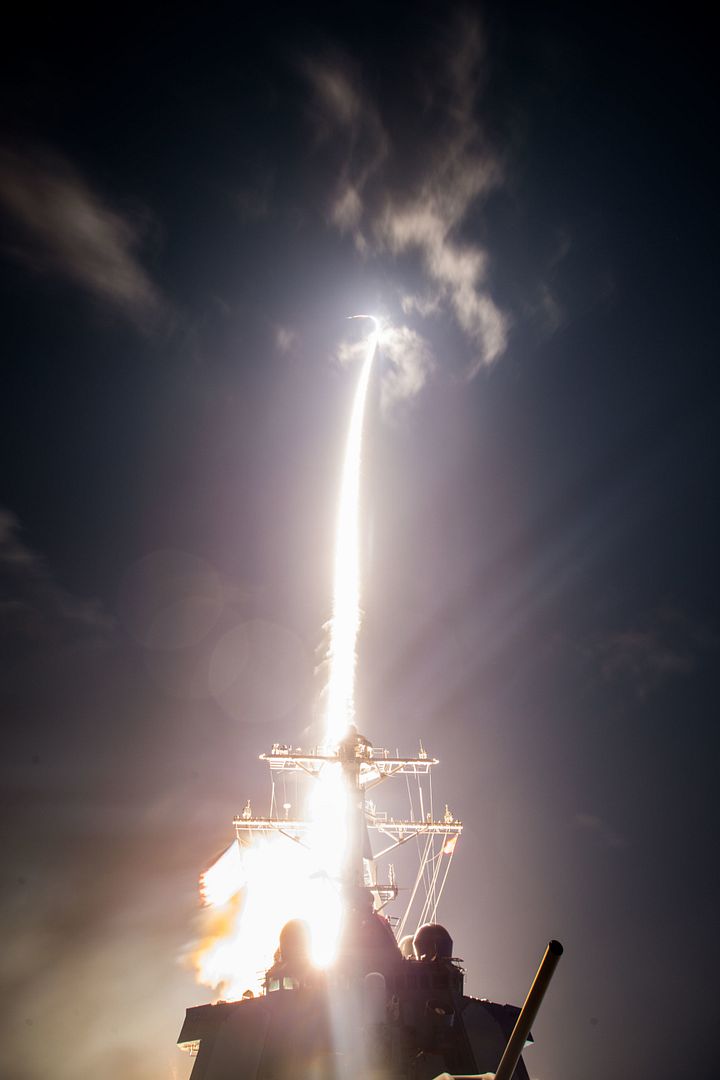
HOUSTON, Feb. 6, 2017 ? Boeing [NYSE: BA] and NanoRacks LLC will partner to develop the first privately funded commercial airlock, enabling the United States to potentially triple the number of small satellites it can deploy from the International Space Station (ISS) during a single airlock cycle.
The NanoRacks Airlock Module, which is planned to be attached to the ISS U.S. segment in 2019, will increase the capability of transferring equipment, payloads and deployable satellites from inside the ISS to outside, significantly increasing the utilization of ISS.
ISS prime contractor Boeing will build and install the airlock?s Passive Common Berthing Mechanism, the hardware used to connect the pressurized modules of the ISS.
Currently, the United States utilizes the airlock on the ISS Japanese Experiment Module. This new commercial airlock will be larger and more robust to better handle increasing market requirements.
?The installation of NanoRacks? commercial airlock will help us keep up with demand,? said Boeing International Space Station program manager Mark Mulqueen. ?This is a big step in facilitating commercial business on the ISS.?
?We are entering a new chapter in the space station program where the private sector is taking on more responsibilities. We see this as only the beginning and are delighted to team with our friends at Boeing,? said Jeffrey Manber, CEO of NanoRacks.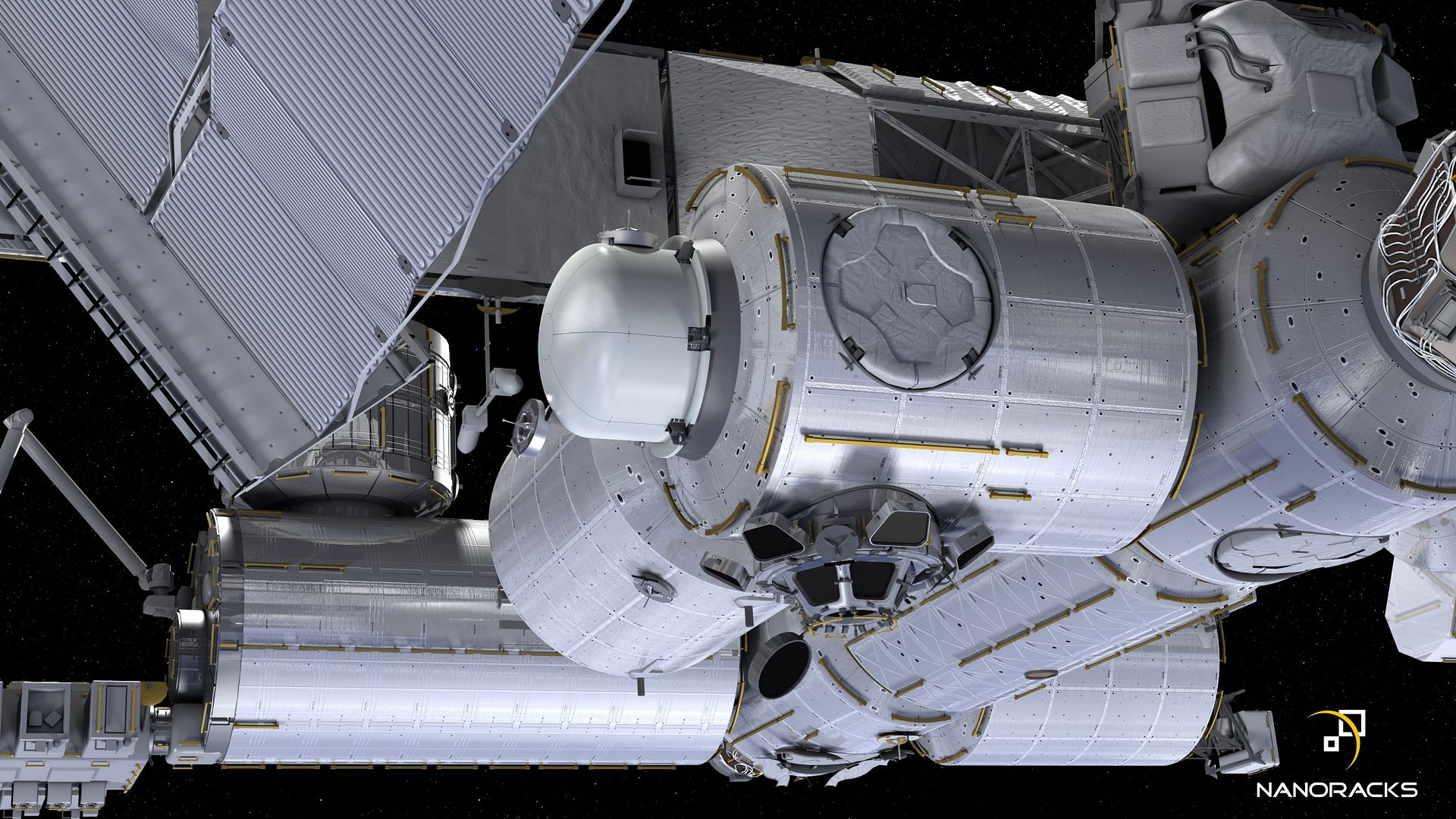
-
 Main AdminA U.S. Air Force B-1B Lancer assigned to the 9th Expeditionary Bomb Squadron, deployed from Dyess Air Force Base, Texas, lands Feb. 6, 2017, at Andersen AFB, Guam. The 9th EBS is taking over U.S. Pacific Command?s Continuous Bomber Presence operations from the 34th EBS, assigned to Ellsworth Air Force Base, S.D. The B-1B's blended wing/body configuration, variable-geometry wings and turbofan afterburning engines, combine to provide long range, maneuverability and high speed while enhancing survivability. The rotation of aircraft in support is specifically designed to demonstrate the U.S.?s commitment to the Indo-Asia-Pacific region and enhance routine transiting in international airspace throughout the Pacific. (U.S. Air Force photo's by Tech. Sgt. Richard P. Ebensberger/Released)
Main AdminA U.S. Air Force B-1B Lancer assigned to the 9th Expeditionary Bomb Squadron, deployed from Dyess Air Force Base, Texas, lands Feb. 6, 2017, at Andersen AFB, Guam. The 9th EBS is taking over U.S. Pacific Command?s Continuous Bomber Presence operations from the 34th EBS, assigned to Ellsworth Air Force Base, S.D. The B-1B's blended wing/body configuration, variable-geometry wings and turbofan afterburning engines, combine to provide long range, maneuverability and high speed while enhancing survivability. The rotation of aircraft in support is specifically designed to demonstrate the U.S.?s commitment to the Indo-Asia-Pacific region and enhance routine transiting in international airspace throughout the Pacific. (U.S. Air Force photo's by Tech. Sgt. Richard P. Ebensberger/Released)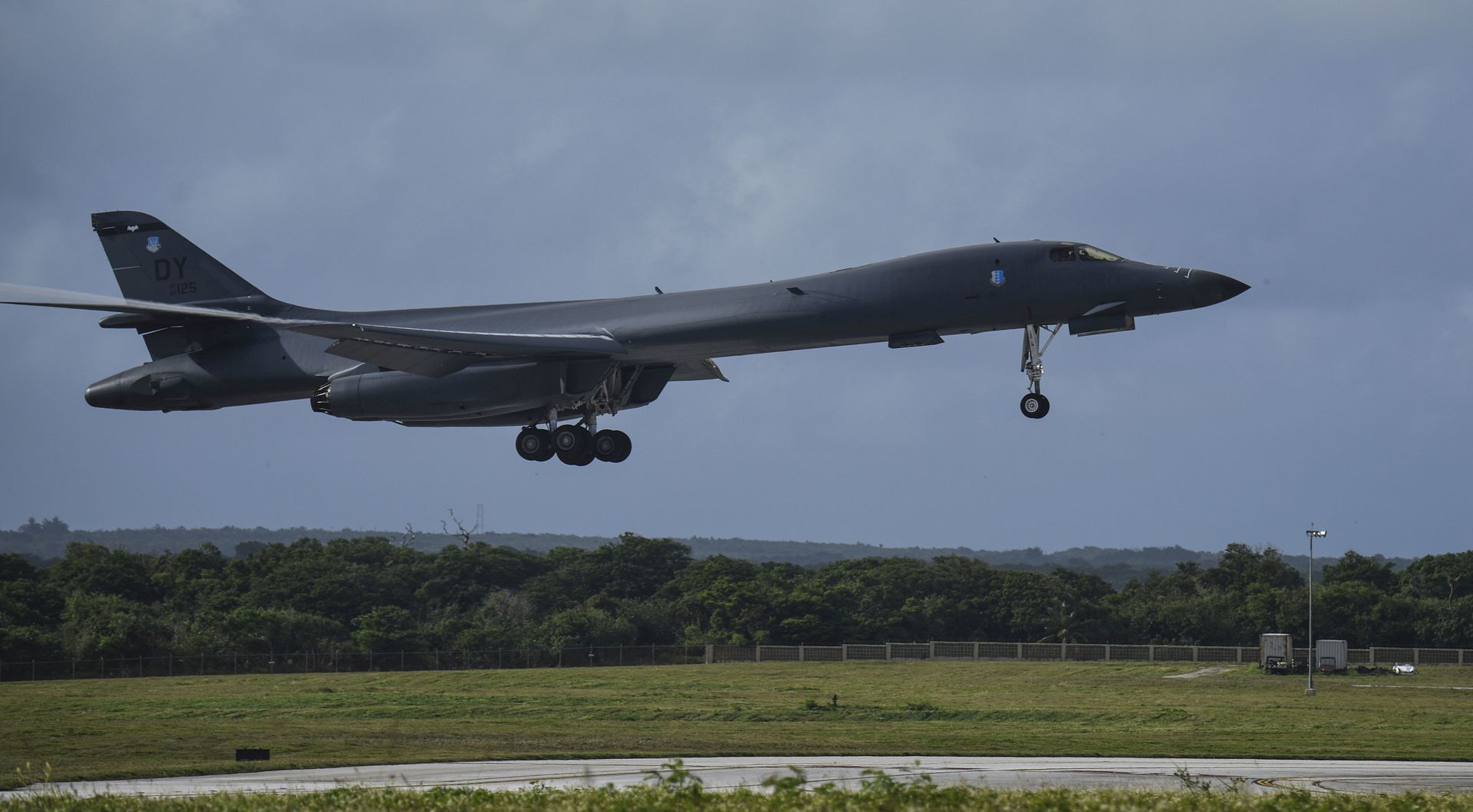
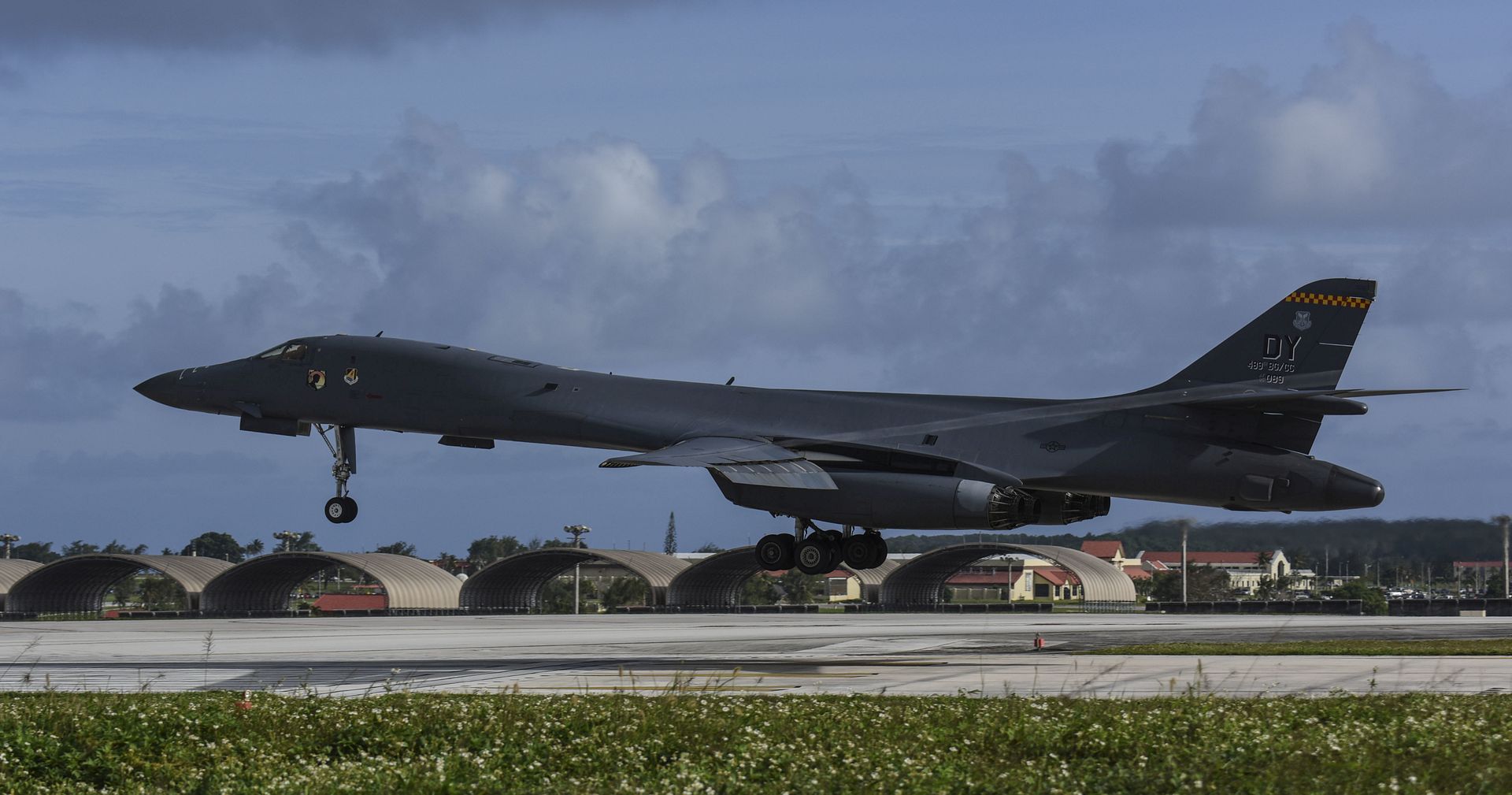


Staff Sgt. Aaron Langley sets up the cockpit of a Thunderbirds F-16 at Nellis Air Force Base, Nev., Feb. 7, 2017. In honor of the United States Air Force's 70th Anniversary, the Thunderbirds will fly with the logo displayed on their aircraft for the rest of the year. (U.S. Air Force photo/Tech. Sgt. Christopher Boitz)
Lt. Colonel Jason Heard, Thunderbirds Commander/Leader, and his crew chief's perform preflight ground operations at Nellis Air Force Base, Nev., Feb. 7, 2017. In honor of the United States Air Force's 70th Anniversary, the Thunderbirds will fly with the logo displayed on their aircraft for the rest of the year. (U.S. Air Force photo/Tech. Sgt. Christopher Boitz)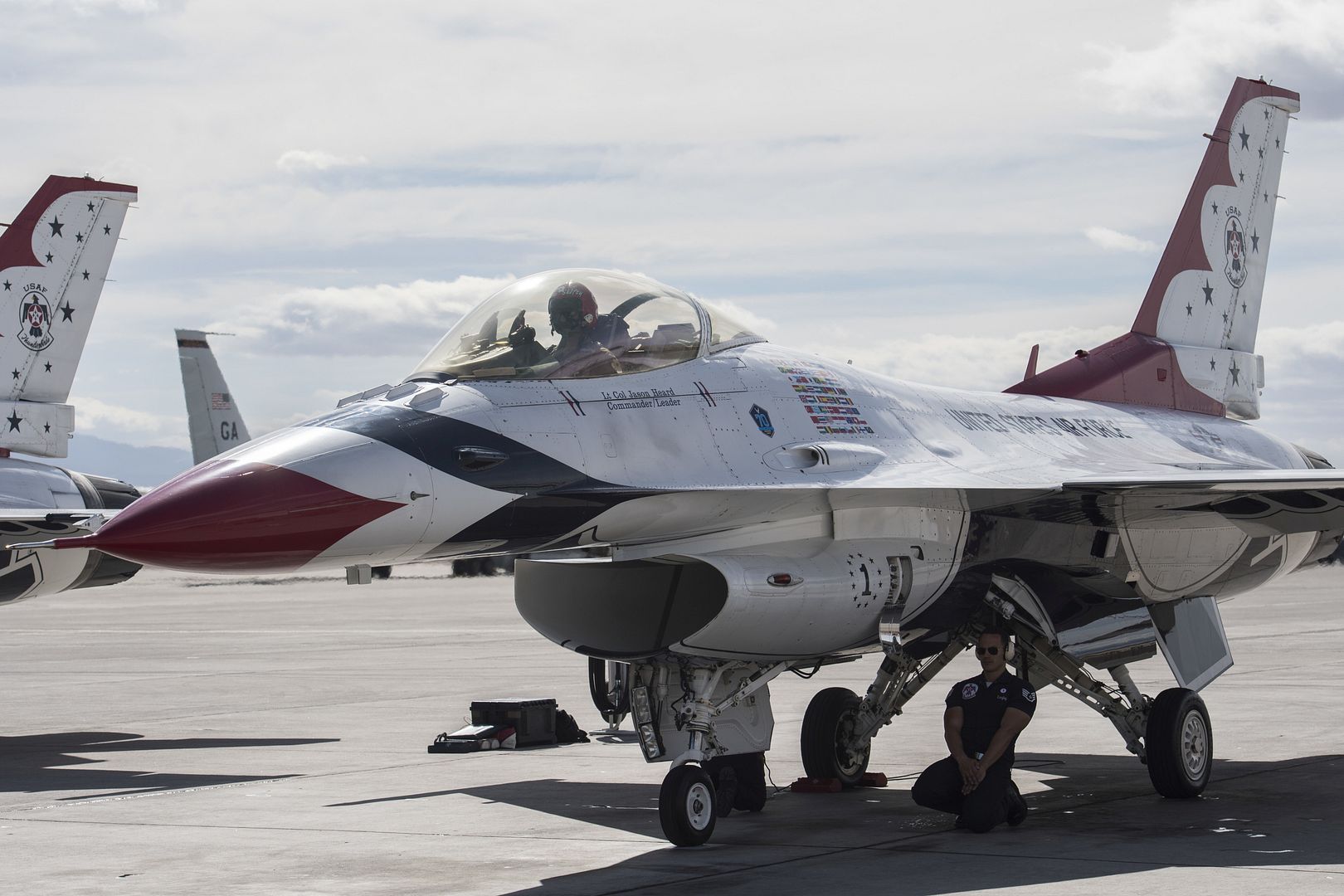
LITTLE ROCK AIR FORCE BASE, Ark. (AFNS) -- Airmen conducted a training flight using the first C-130J Super Hercules with a Block 8.1 upgrade at Little Rock Air Force Base Feb. 3, 2017.
The Block 8.1 upgrade enhances GPS capabilities, communications systems, updated friend-or-foe identification and allows the C-130J to comply with worldwide air traffic management regulations. Additionally, the upgrade program will standardize aviation systems to improve interoperability.
?This update will truly allow us to have unhindered global access,? said Capt. Kyle Gauthier, a 61st Airlift Squadron C-130J instructor pilot and the flight commander. ?It will also provide pilots improved situational awareness, and a greater ability to communicate with command and control around the world.?
Over the next two years Airmen from the 19th and 314th Airlift Wings will team together to test the only two Block 8.1 upgraded C-130J?s in the world at Little Rock AFB. Loadmasters, pilots and maintainers will work with Lockheed Martin to report any bugs or potential issues.
?We have put thousands of maintenance hours into this plane since it arrived,? said Master Sgt. Brian Johnson, the 19th Aircraft Maintenance Squadron production superintendent. ?We?re excited to see it finally up in the air.?
Gauthier said, ?Flying with such a new system can be difficult, but it is exciting to know you?re shaping the future of C-130J operations worldwide.?
7 February 2017 Press Release
As part of its contribution to preserving aviation heritage, Airbus will be transferring four of its test aircraft to museums: the Museum of Air and Space in Paris-Le Bourget and Aeroscopia in Toulouse.
These aircraft comprise: A320 MSN1, recently withdrawn from the test aircraft fleet; A340-600 MSN360; A380 MSN2 and A380 MSN4. These aircraft will benefit from heritage preservation measures and will soon be presented to the public.
The first aircraft to be transferred will be A380 MSN4, which will arrive in Le Bourget on 14th February. The other three aircraft maintained by Airbus Heritage in Toulouse, within the Airbus plant, will travel to Aeroscopia in Toulouse within the next two years, when an area in the northern part of the museum has been made ready for them. All these aircraft cover more than 30 years of flight tests and commercial success for the Airbus brand.
Following the arrival of A380 MSN4 in Le Bourget and in preparation for its display at the museum there ? one of the largest aviation museums worldwide ? the iconic test aircraft will undergo a unique refurbishment to showcase its operational role. Once an initial phase of technical work has been carried out on the airframe ? which will include structural preservation ? a special exhibit will also be created inside the aircraft?s interior to enable the greatest possible number of people to visit it from 2018 to experience the success of Airbus.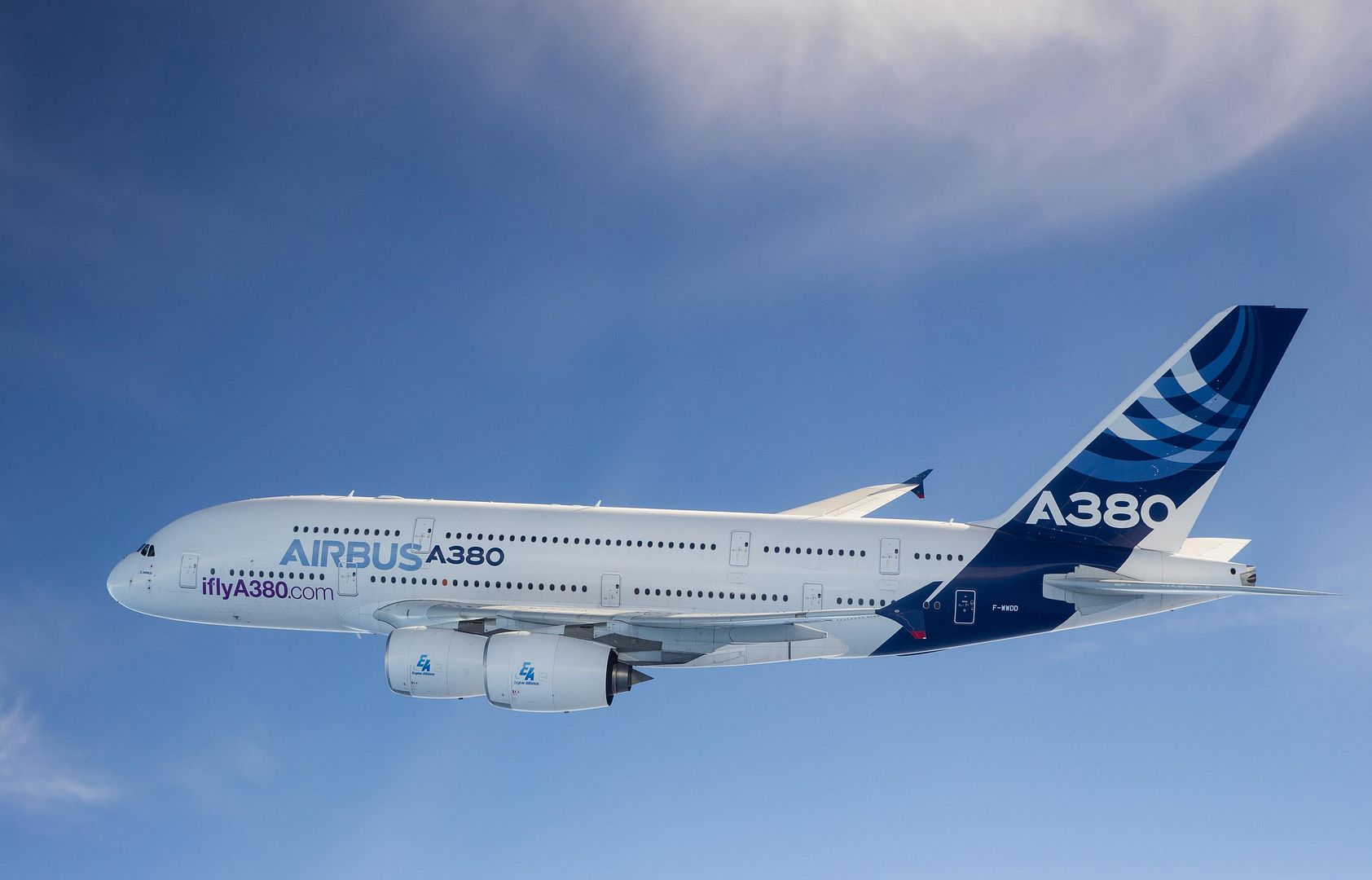
425 Squadron conducted Exercise ALOUETTE MOBILE in Homestead, Florida, USA from January 13 to February 3. This exercise involved 12 CF-18 Hornets and 131 military members from 3 Wing Bagotville, Quebec.
ALOUETTE MOBILE was part of a larger event called CHUMEX. (CHUMEX part 1) The aim of CHUMEX was to conduct Dissimilar Air Combat Training. It involved two American fighter squadrons: the 93rd Fighter Squadron and the 112th Fighter Squadron.
All photos: Corporal Jean-Roch Chabot, 3 Wing Bagotville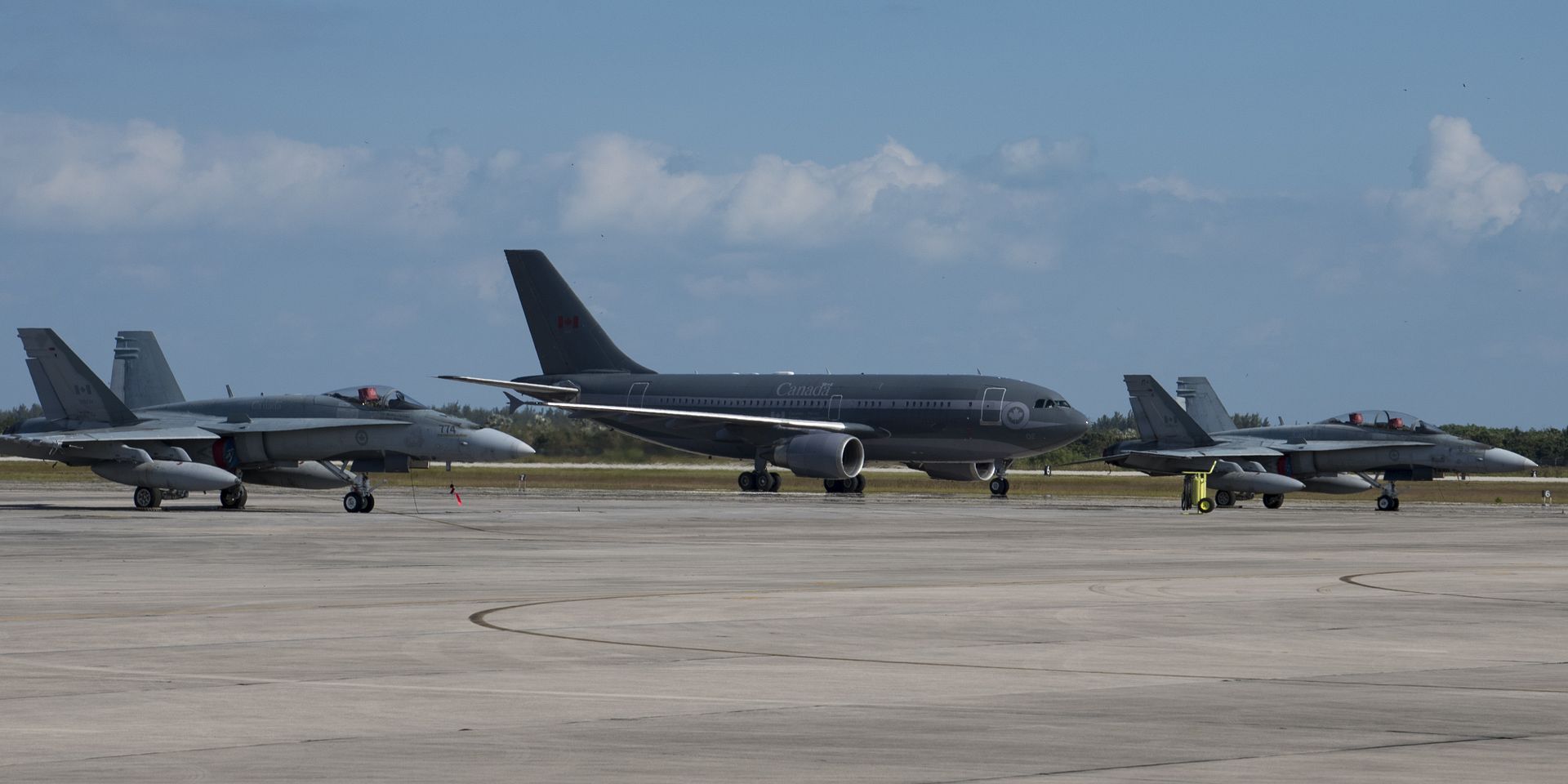
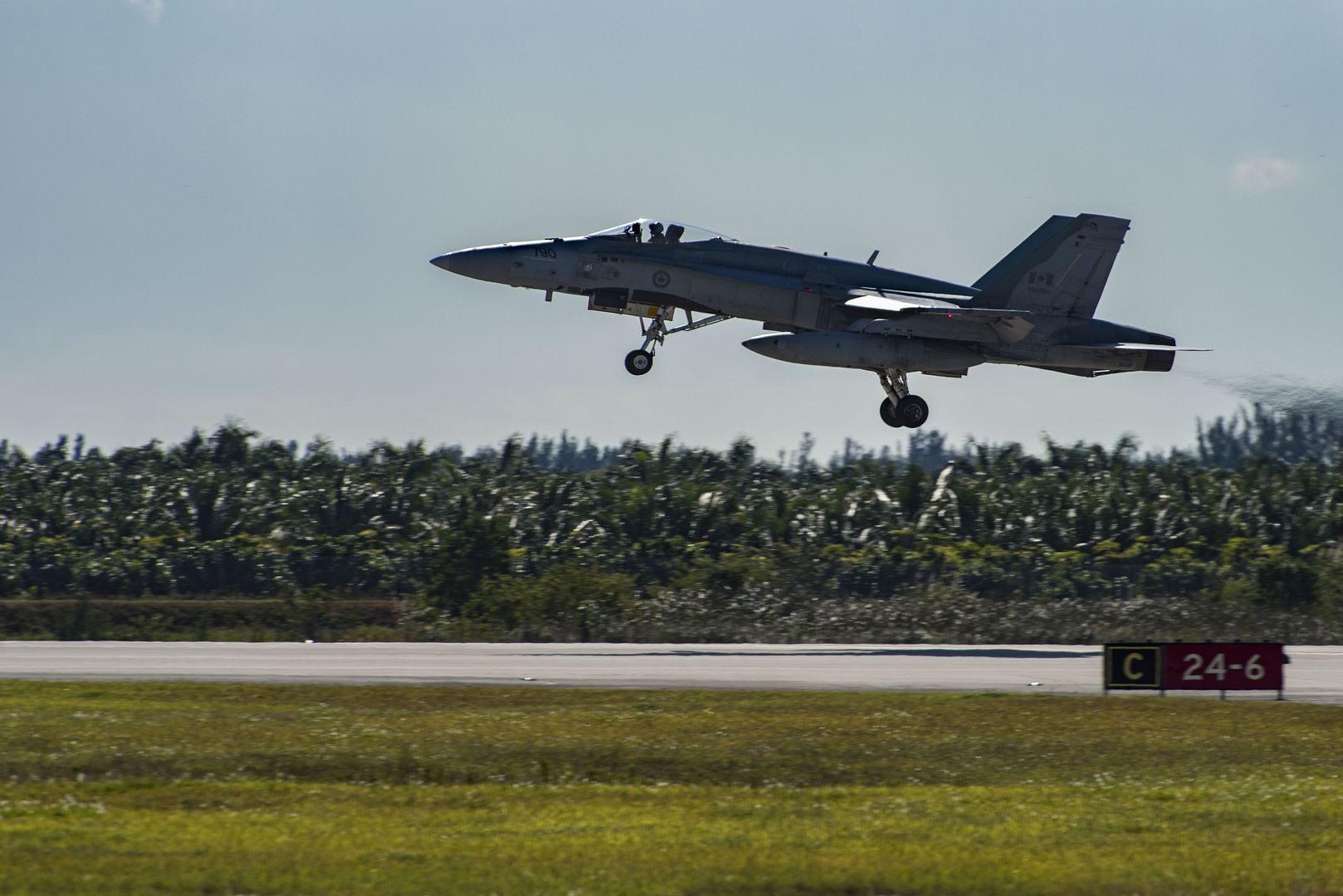
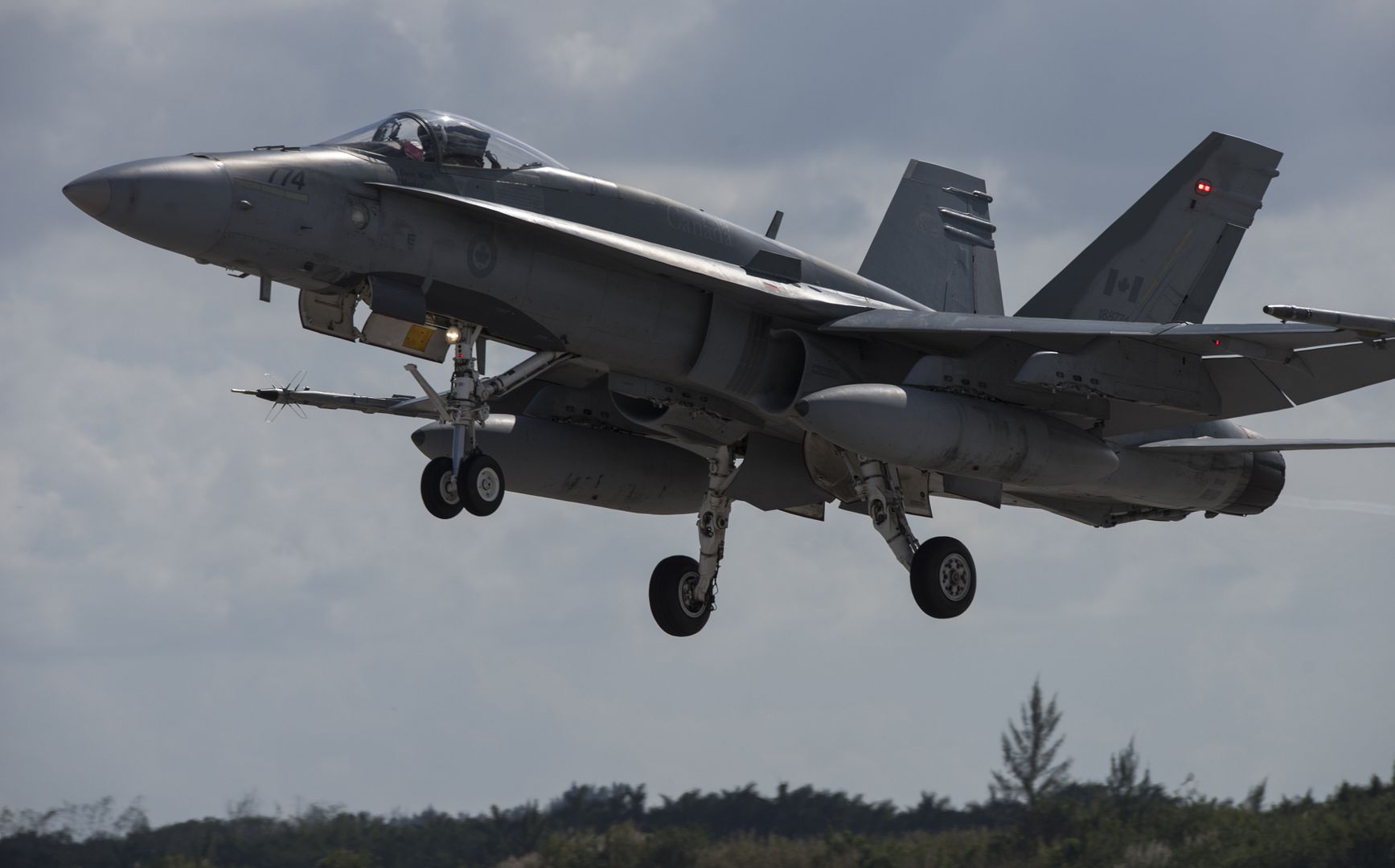
Nevada Desert challenge for No. 4 Squadron RAAF.
Need a runway in the middle of nowhere? No. 4 Squadron is debuting its Combat Control Team to this exercise, during Ex. Red Flag 17. The team recently surveyed a runway on a dry lake bed in the Nevada Desert, allowing a Royal Air Force C-130J Hercules to conduct a series of approaches and landings.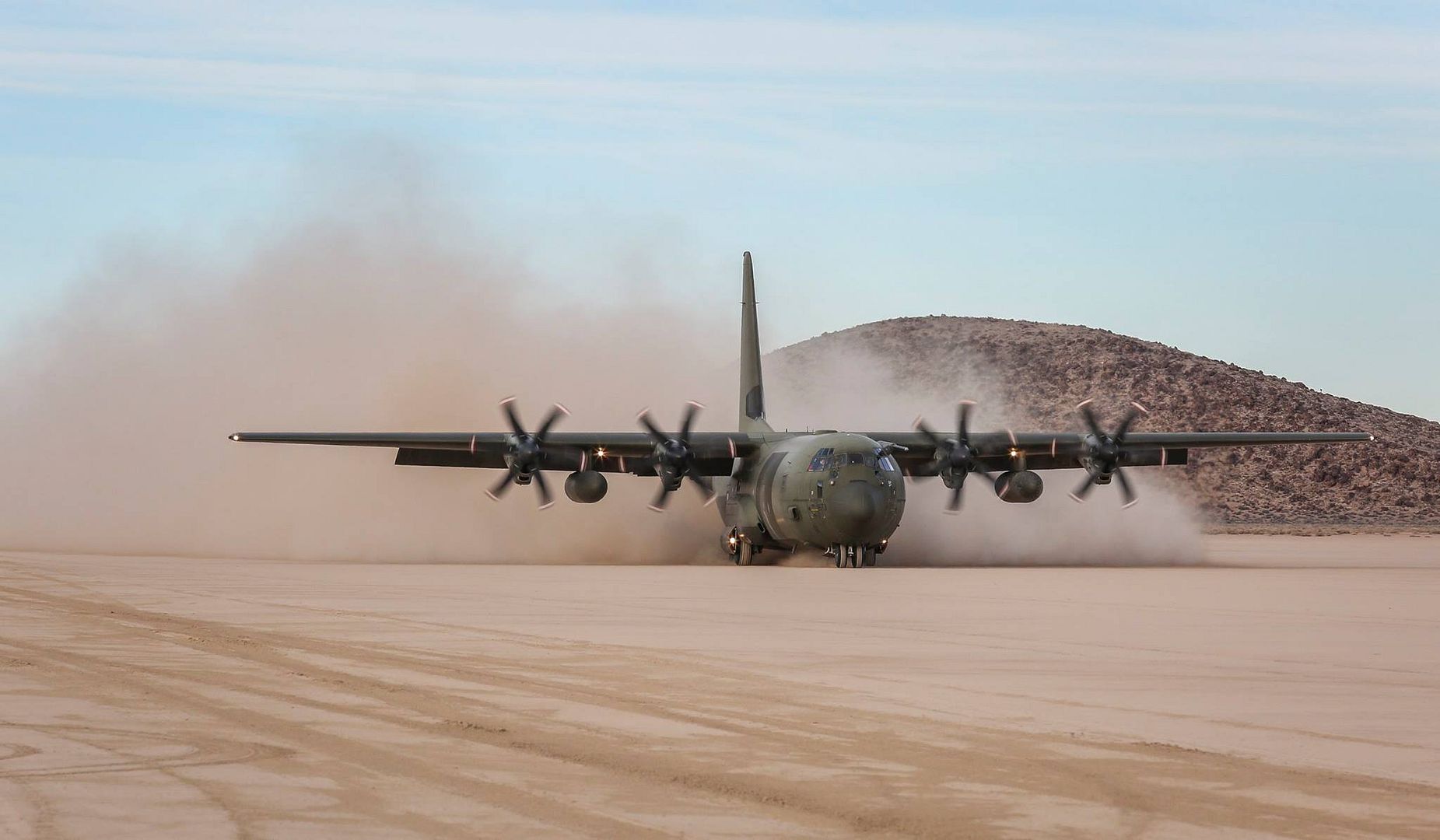
-
 Main AdminOSAN AIR BASE, Republic of Korea --
Main AdminOSAN AIR BASE, Republic of Korea --
Airmen and aircraft assigned to the 119th Fighter Squadron from the New Jersey Air National Guard began a deployment here on Feb. 5.
The guardsmen, who are deployed from the 177th Fighter Wing at Atlantic City Air National Guard Base, are filling a theater security package at the request of U.S. Pacific Command and Pacific Air Forces, providing an opportunity to work with and train alongside active duty forces.
?In addition to the assigned PACAF objectives, we expect to successfully integrate into the mission employment exercise and validate our ability to conduct combat operations off station commensurate with our active duty counterparts,? said Lt. Col. Matthew Crill, 119th FS commander.
TSP units are assigned to Osan to augment the base?s capabilities to project air power across the Korean Peninsula and strengthen the United States Forces Korea?s ability to deter regional threats while strengthening regional stability.
?Our brothers and sisters in the ANG are invaluable to have over here at Osan,? said Col. Cary Culbertson, 51st Fighter Wing vice commander. ?The skill and knowledge they have collected over their years of service offer our active duty Airmen, whether they?re aircrew or support, priceless advice on how to complete the task at hand.?
The skills and knowledge Culbertson refers to come from the 119th FS? long history, dating back nearly 100 years to its activation in June 1917 as the 5th Aviation School Squadron. The unit has undergone a variety of designation changes and bounced back and forth between federal and state service after World War II before settling under the authority of the New Jersey ANG in 1969.
?I am grateful for the opportunity to command these citizen airmen who volunteer to serve, in a Drill Status Guardsman, Technician or Active Guard and Reserve status, on active duty in an AOR that has significant strategic importance,? said Crill. ?I look forward to ensuring that our citizen airmen have the necessary resources to generate airpower in support of the defense of the United States and our allies.?
(U.S. Air Force photo's by Staff Sgt. Victor J. Caputo)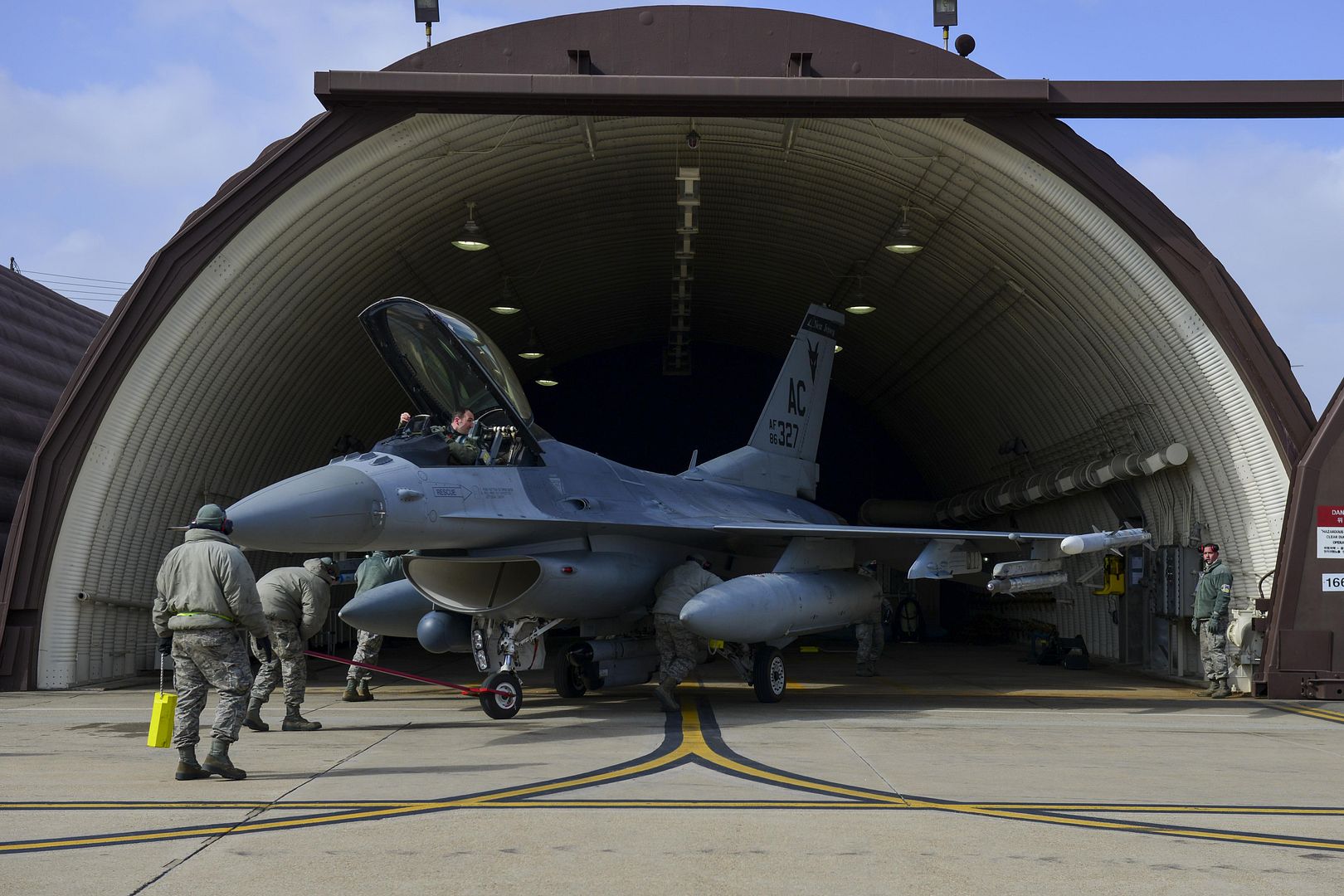
U.S. Air Force B-1B Lancers assigned to the 9th Expeditionary Bomb Squadron, deployed from Dyess Air Force Base, Texas, and the 34th EBS, assigned to Ellsworth Air Force Base, S.D., sit beside one another on the flightline Feb. 6, 2017, at Andersen AFB, Guam. The B-1B?s speed and superior handling characteristics allow it to seamlessly integrate in mixed force packages. These capabilities, when combined with its substantial payload, excellent radar targeting system, long loiter time and survivability, make the B-1B a key element of any joint/composite strike force. The 9th EBS is taking over U.S. Pacific Command?s Continuous Bomber Presence operations from the 34th EBS. The CBP mission is part of a long-standing history of maintaining a consistent bomber presence in the Indo-Asia-Pacific in order to maintain regional stability, and provide assurance to our allies and partners in the region. (U.S. Air Force photo by Tech. Sgt. Richard P. Ebensberger/Released)
News Article / February 8, 2017
Royal Canadian Air Force
Aircraft and personnel from the Royal Canadian Air Forces? (RCAF) three combat support squadrons (417, 439 and 444 Squadrons) and one transport and rescue squadron (424 Squadron) are deployed on Exercise Southern Breeze, at United States Coast Guard Air Station Miami in Opa Locka, Florida.
The exercise, which began on February 6, 2017, will continue to March 4.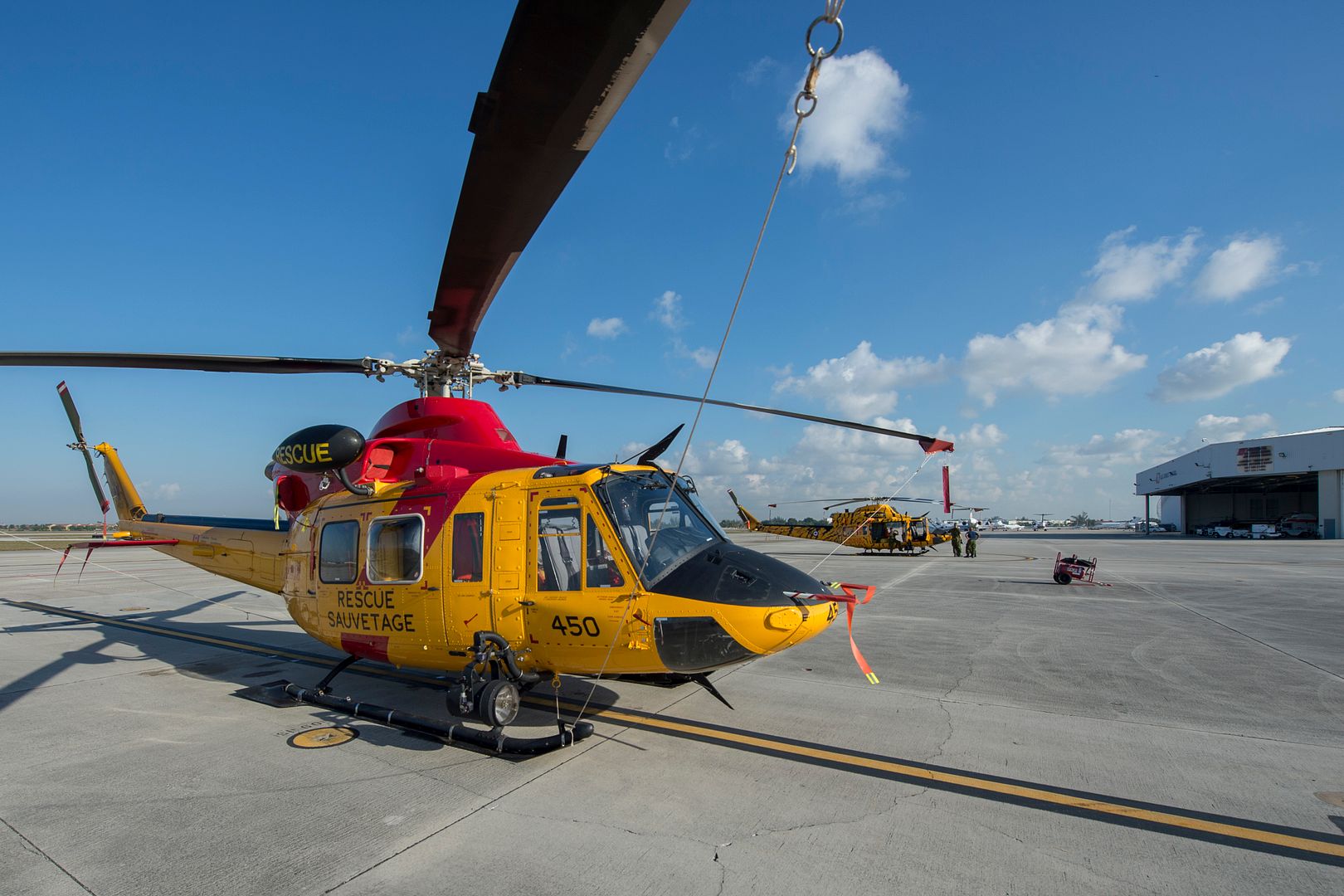
The exercise is designed to employ the skills required to deploy a small scale force and sustain operations while dislocated from main supporting units. The training enables combined unit operability, and provides CH-146 Griffon combat support and search and rescue (SAR) crews with an opportunity to refine overwater and boat rescue skills alongside partners in the United States Coast Guard (USCG). This training aims to leverage and build upon the partnership between the RCAF?s CH- 146 Griffon-based combat support and SAR assets, and the experiences of the USCG.
?Our combat support squadrons provide an agile medical response capability and a high-readiness operational posture to support local wing operations,? says Major Steven Siket, the Air Task Force commander. ?Their residual capacity and SAR-like capabilities make combat support a natural choice for augmenting SAR operations when situations require. This exercise will improve the proficiency of our combat support and SAR Griffon capabilities, ensuring that these crews are ready to help Canadians and serve Canadian interests whenever and wherever that need arises.?
Approximately 120 personnel (up to 50 personnel at any one time) and three CH-146 Griffon helicopters are deployed on the exercise. Exercise personnel and equipment are from the following units:
439 Combat Support Squadron, 3 Wing Bagotville, Quebec
417 Combat Support Squadron, 4 Wing Cold Lake, Alberta
5 Wing Goose Bay: 444 Combat Support Squadron, 5 Wing Goose Bay, Newfoundland and Labrador
424 Transport and Resuce Squadron and the Transport Standards and Evaluation Team from 8 Wing Trenton, Ontario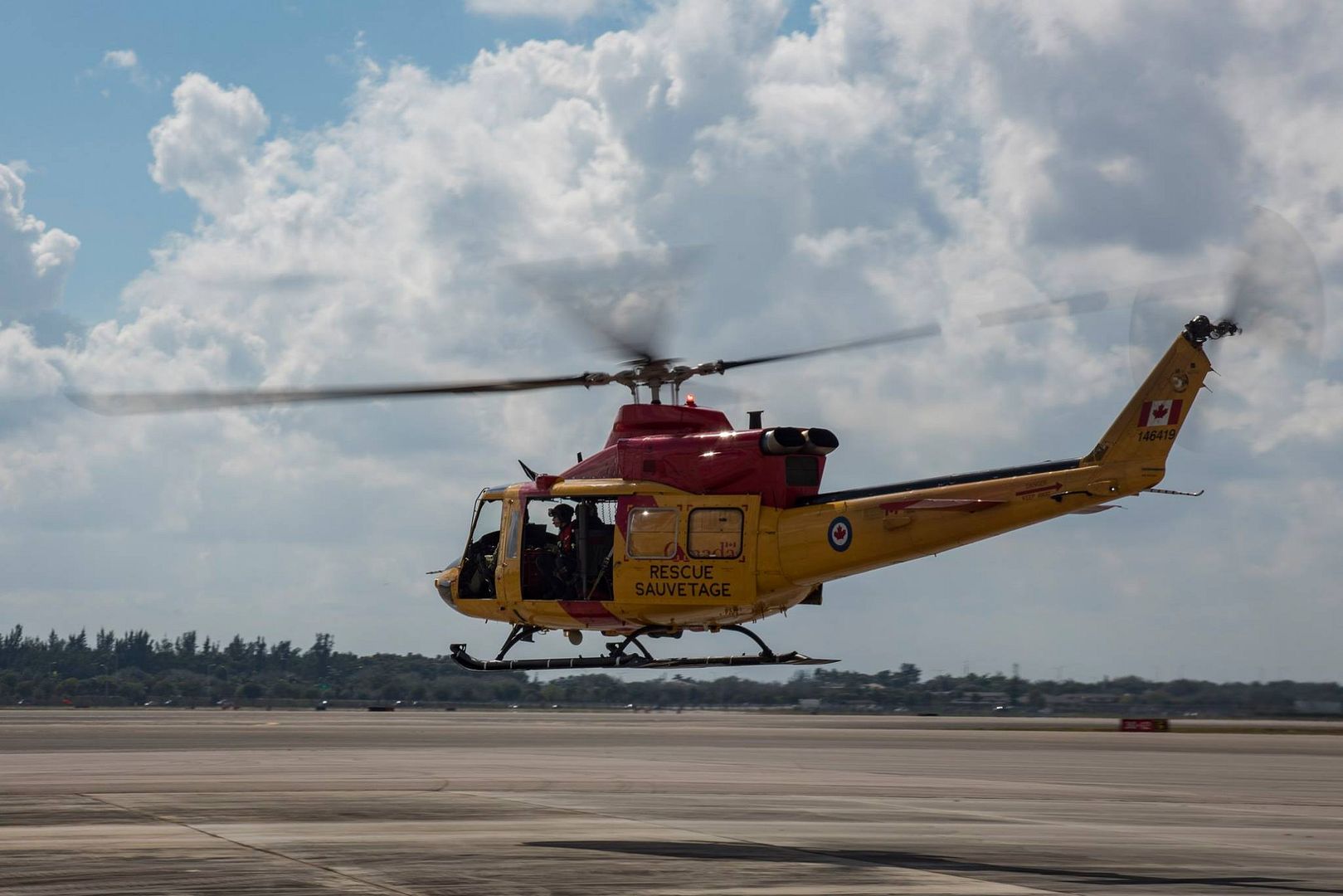
The ability to plan and execute small to medium-scale deployments, and operate as composite detachments is important for these units to remain agile in support of short- notice events that require personnel recovery and SAR-like capabilities at locations not readily supported by their main operating locations.
Semi-annual currency requirements for day and night overwater operations and boat hoisting become a challenge to maintain during the winter months for some RCAF squadrons. Frigid temperatures and local ice conditions in Cold Lake, Bagotville and Goose Bay result in a lack of training areas available to conduct training.
Throughout the exercise, both day and night operations will take place, thereby capitalizing on every possible opportunity to train and develop vital SAR skills in a safe and unencumbered operating environment.
SAR readiness and operations in Canada will not be affected by this training.
Photo's by: Corporal Bryan Carter, 4 Wing Imaging.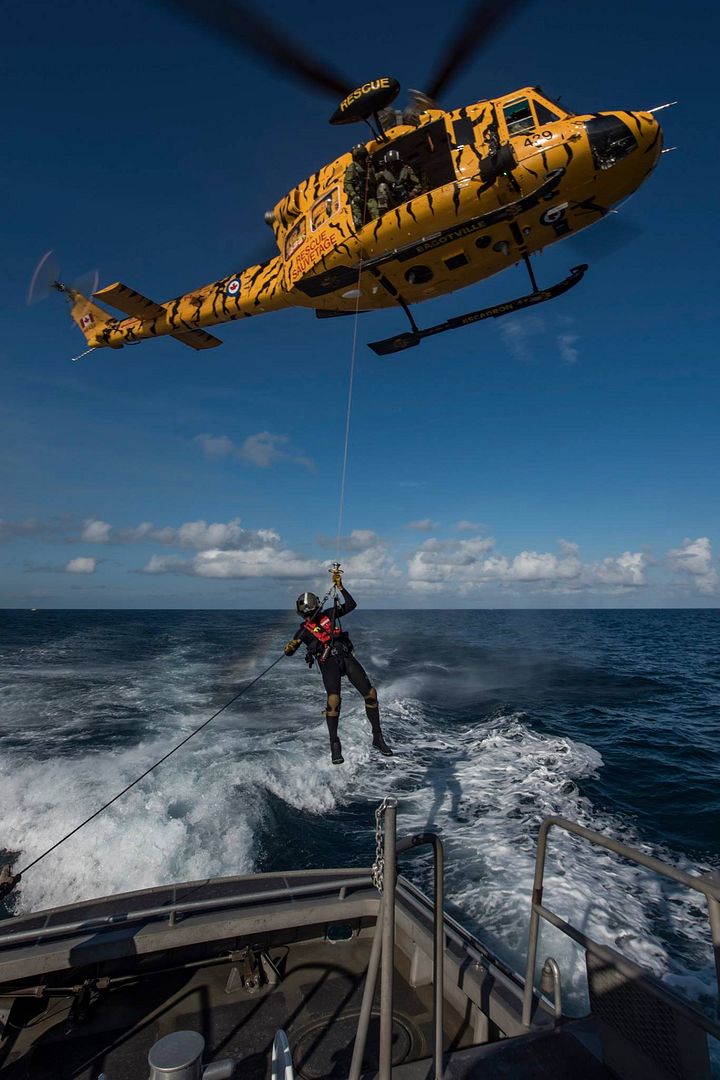
-
 Main AdminA U.S. Air Force B-1B Lancer assigned to the 34th Expeditionary Bomb Squadron, deployed from Ellsworth Air Force Base, S.D, takes off Feb. 8, 2017, at Andersen AFB, Guam. This marked the end of a six-month deployment, where Ellsworth B-1s supported U.S. Pacific Command?s Continuous Bomber Presence operations. The 9th EBS assigned to Dyess AFB, Texas is taking over CBP operations from the 34th EBS. The rotation of aircraft is specifically designed to demonstrate the U.S.?s commitment to the Indo-Asia-Pacific region. (U.S. Air Force photo's by Tech. Sgt. Richard P. Ebensberger/Released)
Main AdminA U.S. Air Force B-1B Lancer assigned to the 34th Expeditionary Bomb Squadron, deployed from Ellsworth Air Force Base, S.D, takes off Feb. 8, 2017, at Andersen AFB, Guam. This marked the end of a six-month deployment, where Ellsworth B-1s supported U.S. Pacific Command?s Continuous Bomber Presence operations. The 9th EBS assigned to Dyess AFB, Texas is taking over CBP operations from the 34th EBS. The rotation of aircraft is specifically designed to demonstrate the U.S.?s commitment to the Indo-Asia-Pacific region. (U.S. Air Force photo's by Tech. Sgt. Richard P. Ebensberger/Released)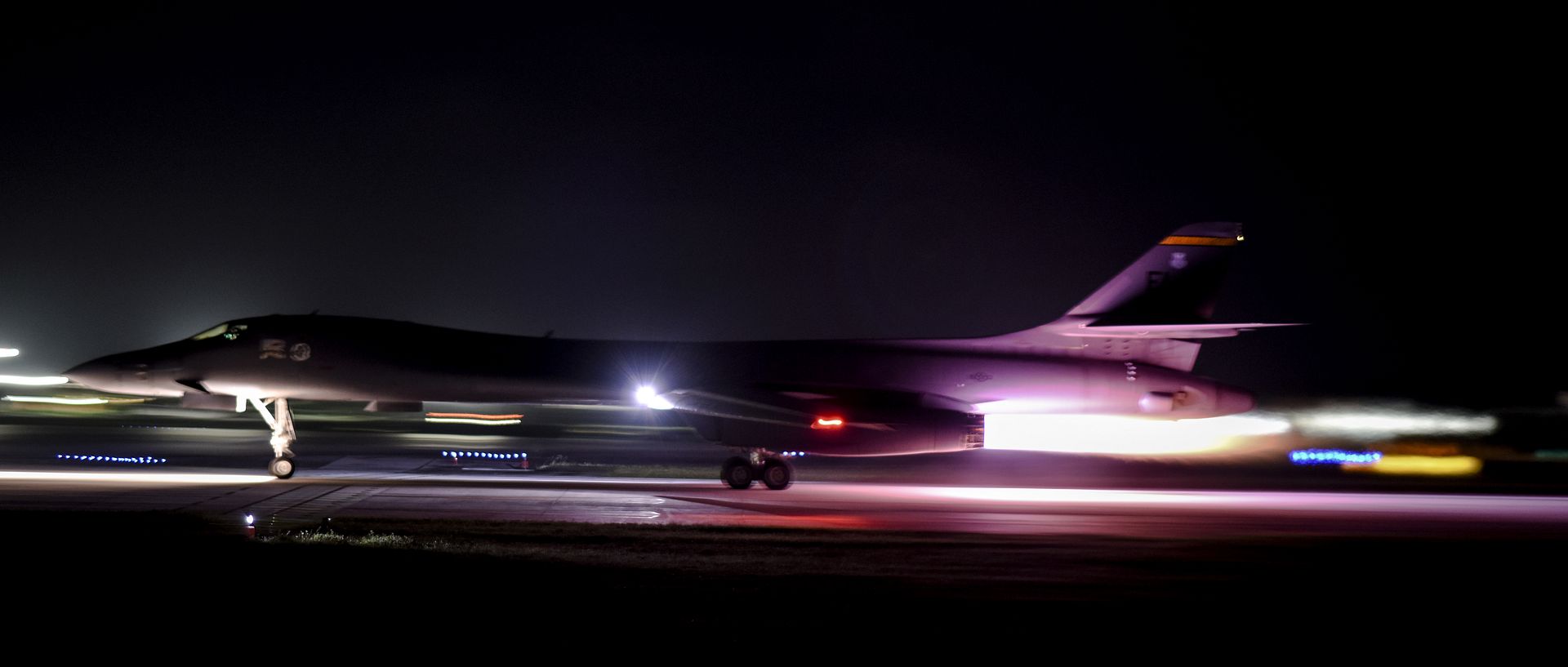

BLACK SEA (Feb. 8, 2017) A Royal Canadian Navy CH-124 Sea King lands on the flight deck of the guided-missile destroyer USS Porter (DDG 78) during exercise Sea Shield 2017 flight operations, Feb. 8, 2017. Sea Shield is an annual Romanian-led multinational exercise in the Black Sea to improve interoperability and proficiency of participating units. Porter, forward-deployed to Rota, Spain, is conducting naval operations in the U.S. 6th Fleet area of operations in support of U.S. national security interests in Europe. (U.S. Navy photo by Mass Communication Specialist 3rd Class Ford Williams/Released)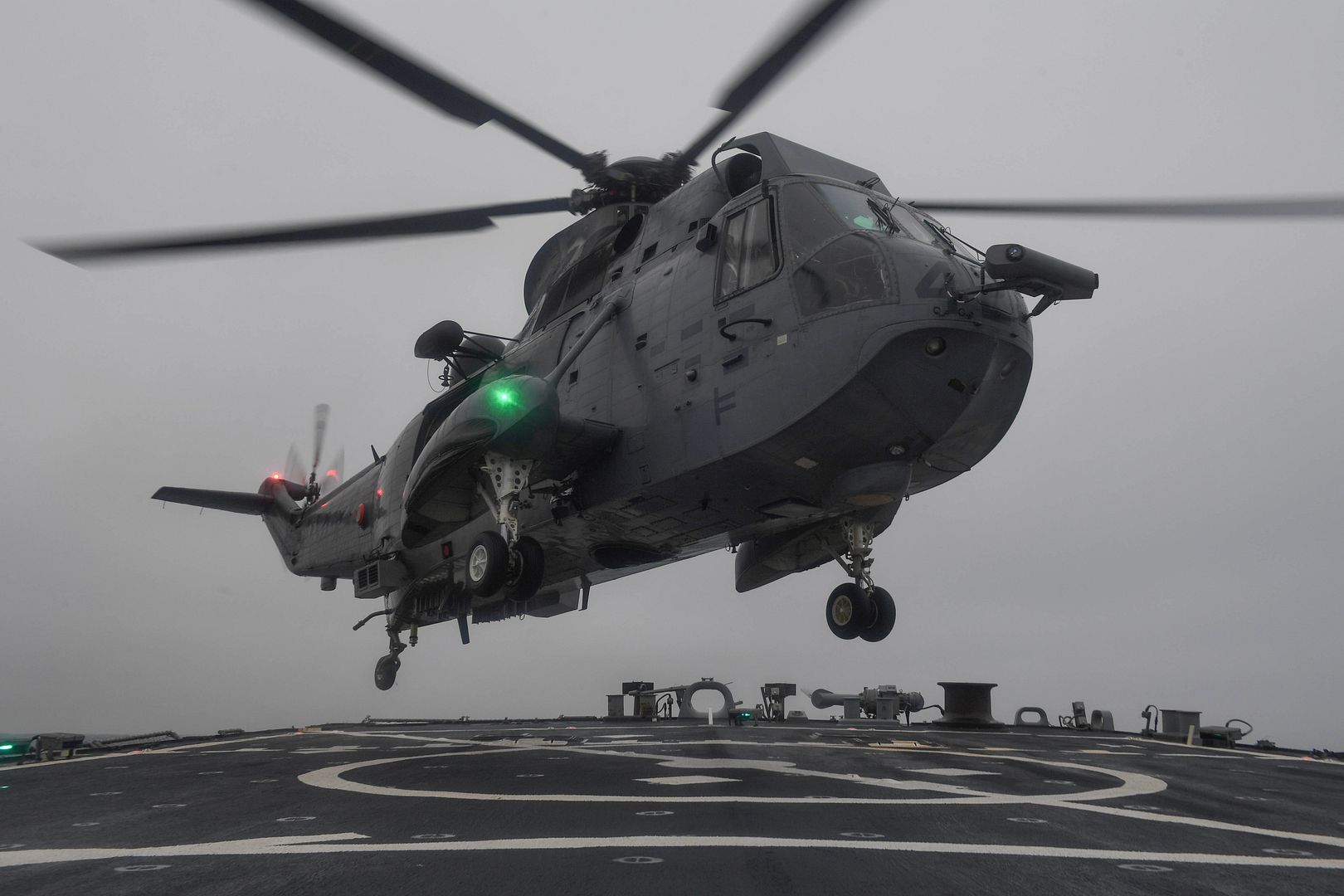
PHILIPPINE SEA (Feb. 8, 2017) An AV-8B Harrier II, assigned to the "Tomcats" of Marine Attack Squadron (VMA) 311, lands aboard the amphibious assault ship USS Bonhomme Richard (LHD 6). The ship is conducting unit-level training to ensure warfighting readiness in preparation for a routine patrol in support of security and stability in the Indo-Asia Pacific region. (U.S. Navy photo by Mass Communication Specialist 2nd Class Diana Quinlan/Released)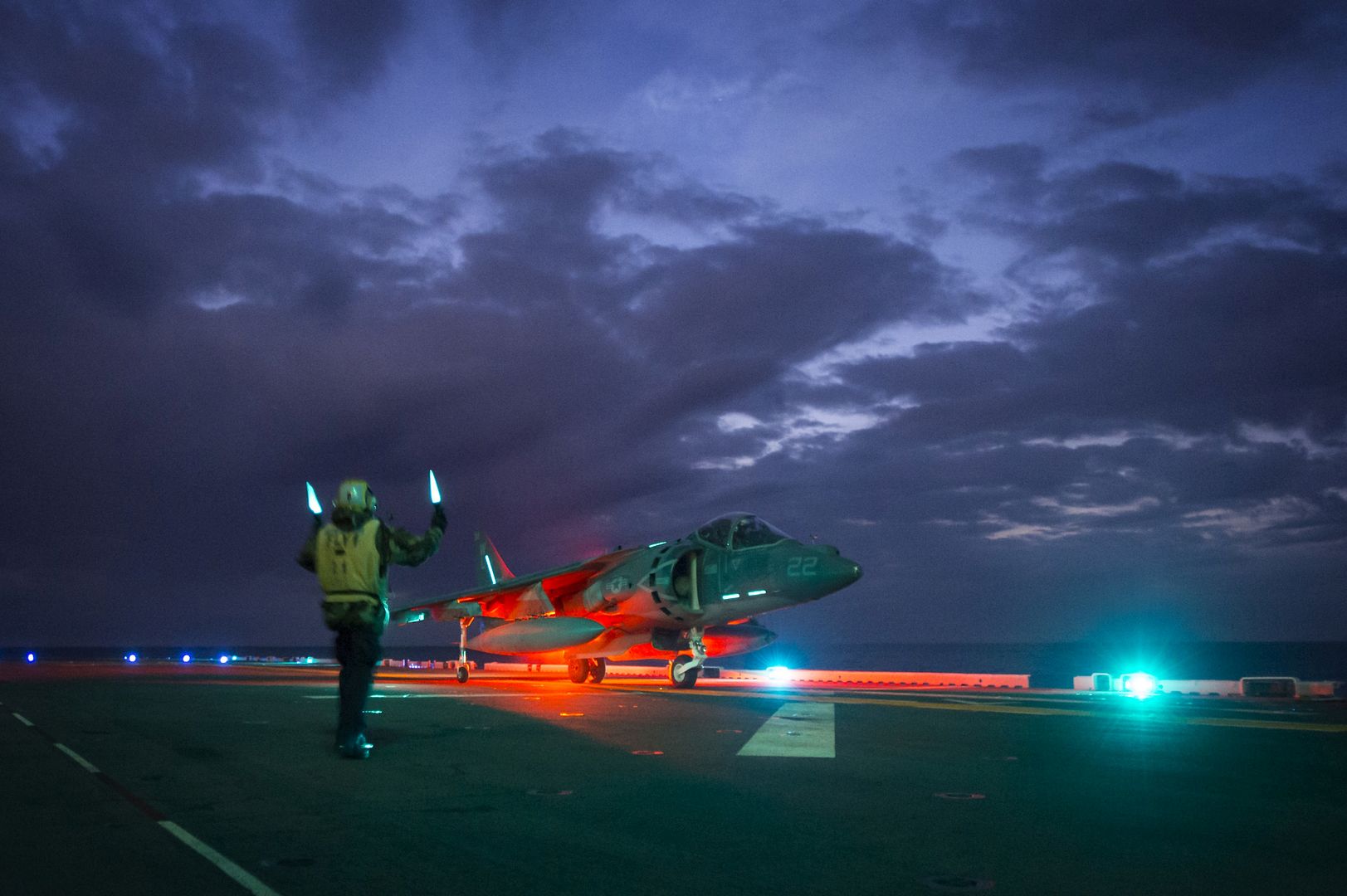
179th Airlift Wing Maintenance members prep the fleet of C-130H Hercules as a blanket of snow descends on them Feb. 9, 2017, at the 179th Airlift Wing, Mansfield, Ohio. The 179th Airlift Wing is always on mission to be the first choice to respond to community, state and federal missions with a trusted team of highly qualified Airmen. (U.S. Air National Guard photo's by 1st Lt. Paul Stennett/Released)
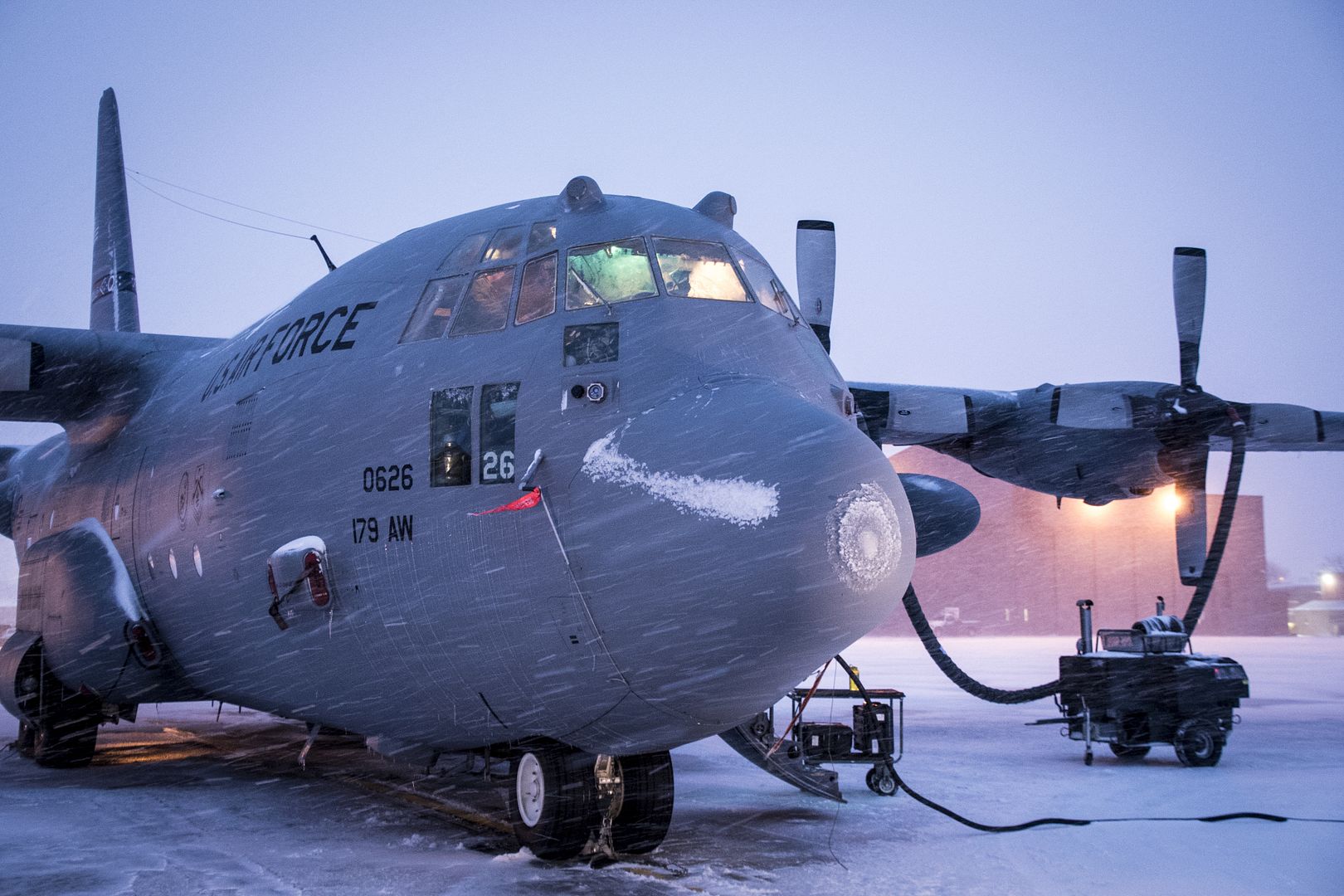
An F/A-18D Hornet with Marine All-Weather Fighter Attack Squadron (VMFA) ? 225 begins its ascent during exercise Cope North at Andersen Air Force Base, Guam, Feb. 9, 2017. The Marines loaded live air intercept missile ? 120 advanced medium-range air-to-air missiles (AIM-120 AMRAAM) to F/A-18D Hornets to be fired at decoys down range. (U.S. Marine Corps photos by Cpl. Nathan Wicks)
MARIETTA, Ga., Feb. 9, 2017 /PRNewswire/ -- Lockheed Martin (NYSE: LMT) today officially introduced the world to the latest member of the C-130J Super Hercules family: the LM-100J commercial freighter.
Employees who designed and built the aircraft celebrated this new Super Hercules with a traditional "rollout" ceremony held at the Lockheed Martin Aeronautics facility located here. Team members walked this LM-100J out of the building that is home to the Super Hercules production line. The next stop for this milestone Super Hercules is the flightline, where it will prepare for its first flight this spring.
Lockheed Martin announced its intent to manufacture and market the LM-100J in February 2014. Lockheed Martin has filed for an FAA civil type certificate update and this first LM-100J will participate in flight test activity to support this process.
"Today's rollout not only marks another accomplishment for Super Hercules, but it also reflects the aircraft's capability to evolve to meet customer requirements. The LM-100J program has exceeded all expectations in moving from an idea to a reality," said George Shultz, vice president and general manager, Air Mobility & Maritime Missions at Lockheed Martin. "We are at this point thanks to hard work and dedication of Lockheed Martin employees and suppliers, who have literally designed and built this new chapter of Super Hercules operations. The FAA has been an essential partner in this aircraft's production and we look forward to continuing to work together as we move into the LM-100J's critical flight test phase. "
The LM-100J incorporates technological developments and improvements that result from years of military C-130J operational experience, including more than 1.5 million flight hours achieved by operators in 16 nations. This experience and advancement translates to an aircraft that will deliver reliable service in a multi-role platform for decades to come. The LM-100J is the ninth production version of the Super Hercules aircraft and its commercial capabilities have the distinction of being the 17th different mission capability supported by the C-130J.
Like its multi-tasking military counterpart, the LM-100J will support a variety of tasks, including: oversized cargo transport; oil dispersion/aerial spray; oil and gas exploration; mining logistics operations; aerial fire fighting; aerial delivery; medevac/air ambulance; humanitarian relief operations; personnel transport; austere field operations; and search and rescue.
The LM-100J is the updated version of the L-100 Hercules, which was built by Lockheed Martin from 1964-1992. More than 100 L-100s were delivered to both global commercial and government operators, supporting cargo delivery requirements in almost every operating environment in the world.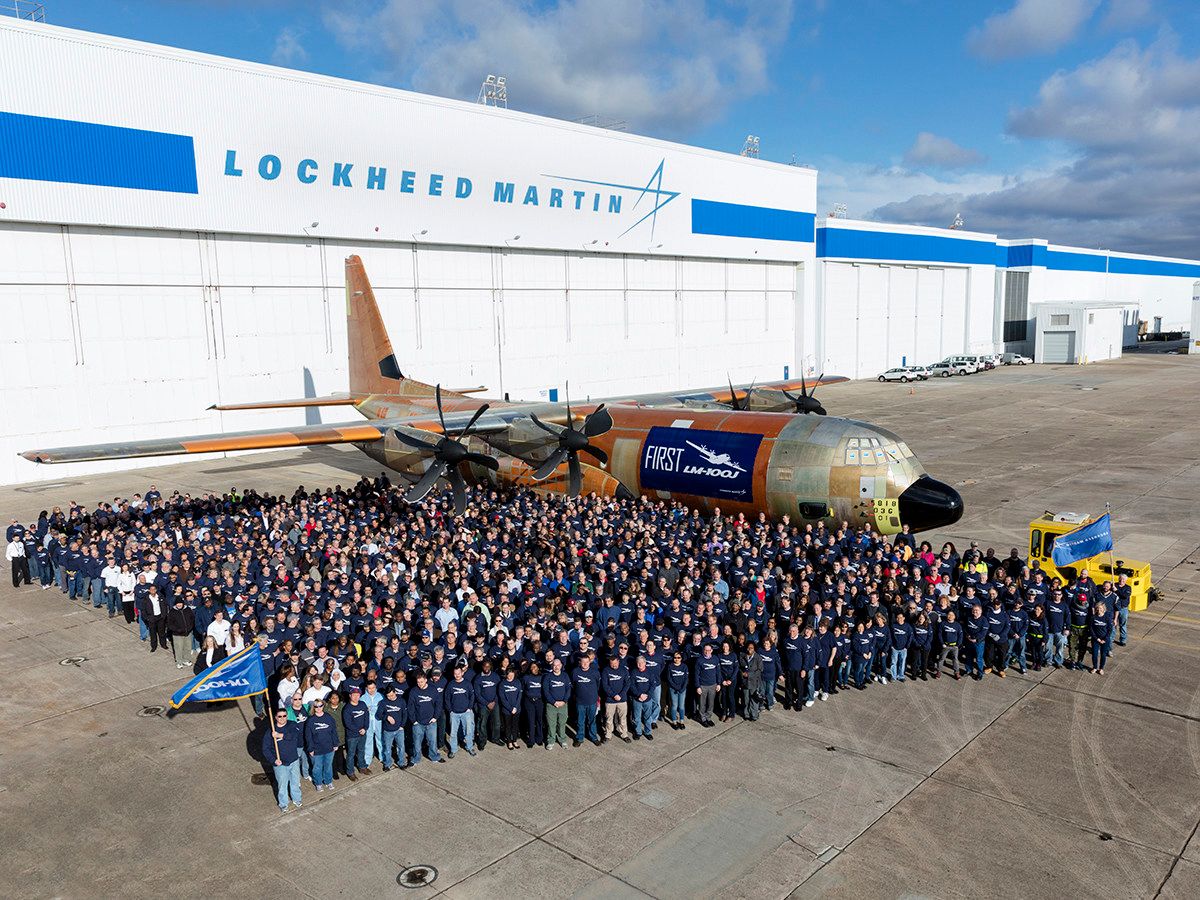
February 9, 2017 Toronto Commercial Aircraft, Press Release
Bombardier Commercial Aircraft announced today that Hawaii Island Air, Inc. (?Island Air?) has signed a five-year Smart Parts agreement with Bombardier to provide longer-term component support for its growing fleet of Q400 aircraft. Island Air is currently operating new Q400 aircraft leased from Elix Aviation Capital Limited (Elix) of Ireland.
The Smart Parts program provides Island Air with comprehensive component maintenance, repair and overhaul (MRO) services, access to a strategically located spare part exchange pool, and on-site inventories based at the airline?s hub in Honolulu.
"When you add a new aircraft to your fleet, you want to be confident of excellent and guaranteed in-service support from the manufacturer,? said David Uchiyama, Chief Executive Officer and President, Hawaii Island Air. ?Bombardier has provided invaluable assistance in helping us acquire Q400 aircraft and integrate them into our fleet. The Smart Parts program will continue to ensure prompt, comprehensive and cost-effective support, which in turn will allow us to provide the best possible interisland travel experience for our customers.?
?With the Smart Parts program, Island Air will benefit from superior parts availability and cost predictability as the airline renews its fleet with Q400 aircraft to expand its regional route network and enhance inter-island connectivity,? said Todd Young, Vice President and General Manager, Customer Services, Bombardier Commercial Aircraft.
About Smart Parts
Bombardier Commercial Aircraft launched the Smart Parts program to provide Component Management Solutions in support of the Q400 aircraft fleet. The fleet supported by the Smart Parts program has now grown to approximately 150 aircraft enrolled by Q400 and C Series aircraft customers.
About Hawaii Island Air
Island Air is the value leader in the Hawaiian Islands, offering 280 convenient flights each week between O?ahu, Maui, Kaua?i and Hawai?i Island. The affordable alternative for inter-island travel, Island Air?s aircraft are able to provide captivating aerial views of Hawai?i?s remarkable landscapes. Founded in 1980 as Princeville Airways, the company was renamed Island Air in 1992 and has been proudly serving the islands of Hawai?i for more than 35 years. For more information about Island Air or to make a reservation, visit www.islandair.com or call (800) 652-6541. Let us know how we are doing on Yelp or TripAdvisor or just stay connected by liking Island Air on Facebook at www.facebook.com/islandairhawaii, or follow @IslandAirHawaii on Twitter and @IslandAir_Hawaii on Instagram.
Thursday, 9 February, two Russian strategic bombers tu-160 blackjack flew over international waters and approached a hundred miles off the French Coast,but never penetrated our airspace. They were intercepted and escorted by the air force throughout this approach of the French Coast.
Our three fighters escortrd the bombers during their transit off the coast of French Airspace, before transferring the responsibility of the escort to their Spanish counterparts.
Headed for the National Center for air operations of Lyon Mont-Verdun, these operations of interception and escort are the 4th of its kind in the space of two years.
Post a reply
- Go to Next topic
- Go to Welcome
- Go to Introduce Yourself
- Go to General Discussion
- Go to Screenshots, Images and Videos
- Go to Off topic
- Go to Works in Progress
- Go to Skinning Tips / Tutorials
- Go to Skin Requests
- Go to IJAAF Library
- Go to Luftwaffe Library
- Go to RAF Library
- Go to USAAF / USN Library
- Go to Misc Library
- Go to The Ops Room
- Go to Made in Germany
- Go to Campaigns and Missions
- Go to Works in Progress
- Go to Juri's Air-Raid Shelter
- Go to Campaigns and Missions
- Go to Works in Progress
- Go to Skinpacks
- Go to External Projects Discussion
- Go to Books & Resources
